
















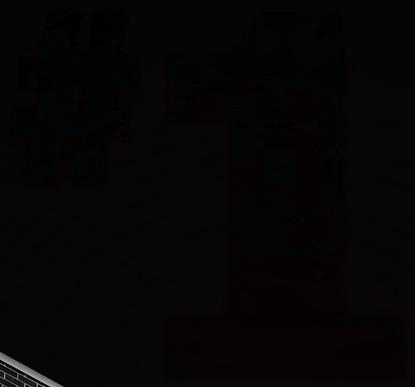
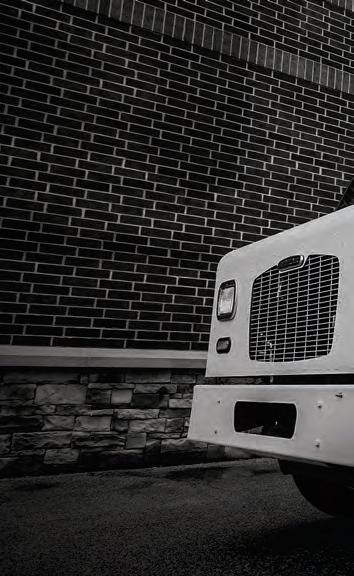




































→ BUGGIN’ OUT
Some people hate bugs. Jeff Neal made crickets his side hustle—and earns $30,000 a year breeding them.

8 What You Can Do Now
An entrepreneur’s path is never simple or easy—but you have more opportunities than you think.
by JASON FEIFER
11 Huge Economics
The cofounder of Zillow and Hotwire explains how to build (and fund) ambitious companies. by
NICOLE LAPIN
18 When Harder Is Better
Sometimes, adding friction to a process makes it run smoother. So how do you know when to do it? And how do you do it well? by ROBERT
I. SUTTON and
HAYAGREEVA “HUGGY” RAO
22 The Lessons Worth $25 Million
How one entrepreneur learned from her mistakes—and built a thriving company as a result. by LIZ
BRODY
24 How a Brand Looks
Every brand needs an aesthetic. Here are six ways to create yours.
28 How to Sell the
Secrets from a guy who turns unexciting products into humorous, top-selling brands. by LIZ BRODY 34 Work Faster!
Five new gadgets that’ll help you meet and beat deadlines. by MARIO ARMSTRONG







82 Why These Brands Are in Our ‘Hall of Fame’
Looking to buy a long-lasting, trustworthy brand? Check out the companies on this list.
96 The Midlife Leap
Why this woman bought a franchise in her 50s. by
KIM KAVIN
98 People Problems
This brand used to just clean up huge messes. Then they started addressing another kind of turmoil.
by KIM KAVIN
100 How He Opened 8 Franchises in 8 Years
Secrets of a top franchisee. by KIM
KAVIN
103 The Fastest-Growing Franchises of 2024
These brands are growing the quickest right now—and could be the rocket ship you’re looking for.
by TRACY STAPP HEROLD
124 What Inspires Me
How a tragic loss helped me realize my company’s true mission.
by JON B. BECKER
March-April 2024

→ PITCH OUR INVESTORS TO BE ON ENTREPRENEUR ELEVATOR PITCH
We welcome founders who have scalable products or services that are ready for investment, and who have a specific plan for how that investment can help them grow. APPLY TO BE ON THE NEXT SEASON: ENTM.AG/EEPAPPLY
→ FULL HUSTLE
Blake Geffen created a luxury rental business on the side—then raised $60 million for it. P.44






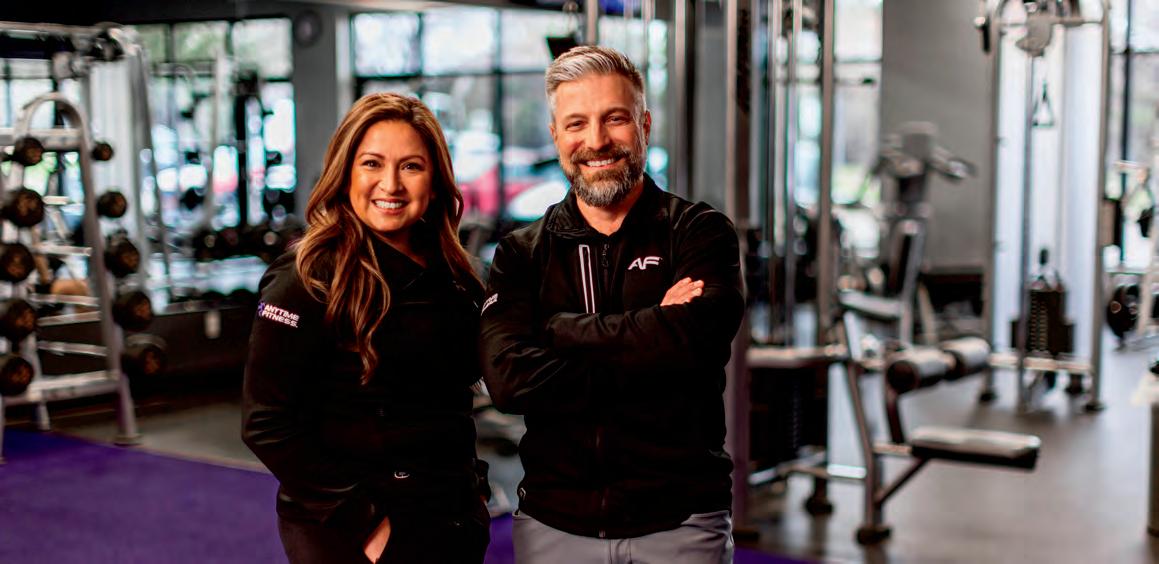

EDITOR IN CHIEF Jason Feifer
CREATIVE DIRECTOR Paul Scirecalabrisotto
DEPUTY EDITOR Frances Dodds
PHOTO DIRECTOR Judith Puckett-Rinella
MANAGING EDITOR Monica Im
SPECIAL PROJECTS EDITOR Tracy Stapp Herold
COPY CHIEF Jessica Levy
RESEARCH Andre Carter, Eric White
SPECIAL PROJECTS COORDINATOR Jordan Hall
INTERN Andrew Robinson
CONTRIBUTING EDITOR Liz Brody
CONTRIBUTING WRITERS Mario Armstrong, Jon B. Becker, Rachel Davies, Kim Kavin, Nicole Lapin, Hayagreeva “Huggy” Rao, Robert I. Sutton, Sal Vaglica
EXECUTIVE EDITOR Brittany Robins
DEPUTY DIGITAL EDITOR Melissa Malamut
SENIOR DIGITAL CONTENT DIRECTOR Jessica Thomas
ENTREPRENEUR STUDIO DIRECTOR Brad Gage
DIRECTOR OF EDITORIAL SUBSCRIPTIONS Caroline Olney
SENIOR BUSINESS EDITOR Carl Stoffers
EDITOR, CONTRIBUTOR NETWORK Maria Bailey
SUBSCRIPTIONS EDITOR Mark Klekas
SENIOR NEWS WRITER Emily Rella
FEATURES WRITER Amanda Breen
ASSOCIATE EDITORS, CONTRIBUTOR NETWORK
Chelsea Brown, Kara McIntyre, Micah Zimmerman
AD OPERATIONS DIRECTOR Michael Frazier
AD OPERATIONS COORDINATOR Daniel Belyaks
CHIEF TECHNOLOGY OFFICER Jake Hudson
VP, OPERATIONS Shannon Humphries
PROJECT MANAGERS June Munoz, Julianne Page
SENIOR ENGINEERS Jace Poirier-Pinto, Geoff Winner
ENGINEERS Angel Cool Gongora, Michael Flach, Abel Trotter
FRONT-END ENGINEERS Lorena Brito, John Himmelman
QUALITY ASSURANCE TECHNICIAN Jesse Lopez
ART DIRECTOR Christian Zamorano
SENIOR DESIGNER Jayla Buie
GRAPHIC DESIGNERS Andrew Chang, Isaac Contreras
DIGITAL MEDIA DESIGNER Monica Dipres
DIGITAL PHOTO EDITOR Karis Doerner
CEO Ryan Shea
PRESIDENT Bill Shaw
CHIEF OPERATING OFFICER Michael Le Du
ASSOCIATE PUBLISHER/MARKETING Lucy Gekchyan VP, SPECIAL PROJECTS Dan Bova
PRODUCTION COORDINATOR Mackenzie Truman VP, NATIVE CONTENT Jason Fell
SENIOR INTEGRATED MARKETING MANAGER Wendy Narez
INTEGRATED MARKETING ASSOCIATE Ashleigh Dennis
SVP, INNOVATION Deepa Shah
PRODUCT MARKETING MANAGER Arnab Mitra
MARKETING COORDINATOR Chris Desrosiers
SENIOR MARKETING MANAGER Hilary Kelley
SENIOR DIGITAL ACCOUNT MANAGER Jillian Swisher
DIGITAL ACCOUNT MANAGER Michelle Gaudy
BUSINESS DEVELOPMENT
VP, BUSINESS DEVELOPMENT Charles Muselli
GM, CONTENT SYNDICATION Matt Goldstein
BUSINESS DEVELOPMENT ASSOCIATE Michelle Buzga
ENTREPRENEUR BOOKS
VP, ENTREPRENEUR BOOKS Sean Strain
SOCIAL MEDIA
VP, SOCIAL Sana Ali
SOCIAL MEDIA SENIOR MANAGER Kennadi McCoy
CUSTOMER SERVICE entrepreneur.com/customerservice
SUBSCRIPTIONS subscribe@entrepreneur.com
REPRINTS
PARS International Corp. (212) 221-9595, EntrepreneurReprints.com
ADVERTISING AND EDITORIAL Entrepreneur Media Inc. 1651 East Fourth Street, Suite 125, Santa Ana, CA 92701 (949) 261-2325, fax: (949) 752-1180
ENTREPRENEUR.COM Printed in the USA GST File #r129677027
ENTREPRENEUR MEDIA NATIONAL ADVERTISING SALES OFFICES
SVP, NATIONAL SALES Brian Speranzini
VP, NATIONAL PRINT SALES James Clauss
NORTHEAST SENIOR ACCOUNT DIRECTOR Rikki Paribello
ACCOUNT DIRECTOR Krissy Cirello
CHICAGO
MIDWEST DIRECTOR, STRATEGIC PARTNERSHIPS Steven Newman
DETROIT
MIDWEST DIRECTOR OF SALES Dave Woodruff
ATLANTA
SOUTHERN ADVERTISING DIRECTOR Kelly Hediger
LOS ANGELES
WEST COAST ADVERTISING DIRECTOR Mike Lindsay
GREEN ENTREPRENEUR & ENTREPRENEUR, NATIONAL ACCOUNT DIRECTOR
Hilary Kelley
FRANCHISE AND BUSINESS OPPORTUNITIES
VP, FRANCHISE SALES Brent Davis
DIRECTORS, FRANCHISE SALES
Cassidy Ford, Casey Lamm
PRODUCTS AND SERVICES ADVERTISING Direct Action Media, Tom Emerson (800) 938-4660
ADVERTISING PRODUCTION MANAGER Mona Rifkin
EXECUTIVE STAFF CFO Chris Damore
DIRECTOR OF FINANCE Tim Miller
FINANCE SUPPORT Jennifer Herbert
CORPORATE COUNSEL Ronald L. Young
LEGAL ASSISTANT Cheyenne Young
Vol. 52, No. 2. Entrepreneur (ISSN 0163-3341) is published bimonthly by Entrepreneur Media Inc., 1651 East Fourth Street, Suite 125, Santa Ana, CA 92701. Periodical postage paid at Irvine, CA, and at additional mailing offices. POSTMASTER: Send address changes to Entrepreneur, P.O. Box 6136, Harlan, IA, 51593-1636. One-year subscription rates in U.S.: $19.97; in Canada: $39.97; all other countries: $49.97; payable in U.S. funds only. For customer service go to entrepreneur.com/customerservice or mail subscription orders and changes to Entrepreneur, Subscription Department, P.O. Box 6136, Harlan, IA, 51593-1636. For change of address, please give both old and new addresses and include most recent mailing label. Entrepreneur considers its sources reliable and verifies as much data as possible, although reporting inaccuracies can occur; consequently, readers using this information do so at their own risk. Each business opportunity and/or investment inherently contains certain risks, and it is suggested that the prospective investors consult their attorneys and/or financial professionals. Entrepreneur is sold with the understanding that the publisher is not rendering legal services or financial advice. Although
nor
Entrepreneur will be treated as unconditionally assigned for publication,copyright purposes and use in any publication or brochure,and are subject to Entrepreneur’s unrestricted right to edit and comment.
ENTREPRENEUR.COM / March-April 2024


























An entrepreneur’s path is never simple or easy— but you have more opportunities than you think.
YOU’VE HIT a wall. Maybe it’s an idea that won’t work. A pursuit you were rejected from. An effort that failed. Now you feel stuck and frustrated.
I’ve felt it too—but I learned four simple words that help me move past it. I think they can help you too.
To appreciate them, I’m going to take you back in time. The year is 2005. Kara Goldin and her husband Theo were making a lightly flavored, all-natural beverage in their kitchen. They called it Hint Water, and they thought it had potential.
But when they tried to mass-produce the drink, they hit a problem. Kara writes about this in her book, called Undaunted. Her husband tried to find a manufacturer for the drink, but everyone said it was impossible: They couldn’t make the drink without preservatives or other chemicals, because it wouldn’t have the shelf life for national distribution.
“Well, what can we do?” Kara asked Theo.
“We can have a product with a very short shelf life that we deliver locally out of our Jeep in a limited area in San Francisco,” Theo replied.
“Perfect, that’s what we’ll do,” Kara said. “We’ll find out what people think of the product and if it’s worth trying to solve this problem.”
This little scene made a big impact on me. I loved Kara’s
reaction. Theo tells her what they can’t do, and Kara asks what they can do.
I’ve since gotten to know Kara, and we’ve talked about this. That question—What can we do? become a mantra of hers. She calls upon it when hitting a wall, or when someone says something is impossible.
I wondered: Why is this such a powerful reframe? Then I realized: It’s because when we want something, we almost immediately limit our imaginations.
Think of something you want right now. Maybe it’s a certain kind of growth. Or a particular job. Maybe it’s being recognized for an achievement, or connecting deeply with another person.
I bet you have an idea of how to get that—first I’ll do this, then that, and so on. That’s your action-oriented, entrepreneurial self at work. But there’s a problem: When we imagine how we’ll get something, we start to think that’s the only way to get it.
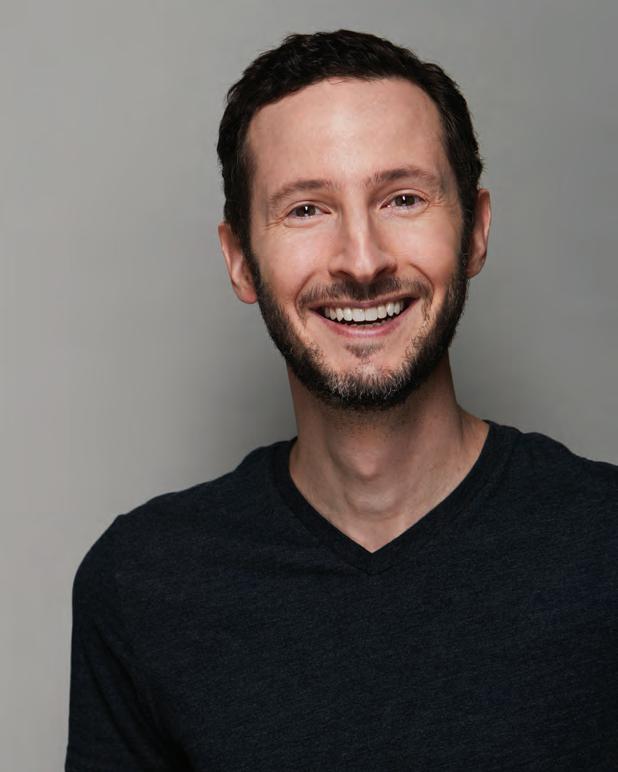
question to help my wife!
My wife, Jennifer Miller, is a journalist and author of five books (including one with me).
If our original idea doesn’t work out, we assume we’re out of luck. Our way became the only way, and now the only way is no way.
The antidote to that is Kara’s question: “What can we do?”
No matter the challenge you’re facing, there is an answer to that question. You can do something. It doesn’t mean you’ll always reach your goal exactly as you defined it, but it does mean you can find some action to take—a way to move forward, or
A few years ago, she met a former inmate with an incredible story—a captivating, true-crime tale, that was also a powerful story of redemption. She spent years earning this person’s and their family’s trust, wrote a book proposal, shopped it around to all the major publishers, and…nobody wanted it.
Jen was crushed. The rejection stung, of course, but she was also in a kind of mourning: If she couldn’t sell the book, she figured, then she could never tell this story.
But as we talked about it, Kara’s words came to me. OK,
in podcasting, but she liked the idea. She threw herself into learning the market and meeting the players—and after a year of hard work, she just signed a contract with a major production company and one of the world’s largest podcast distributors.
Now she’s making the thing many people said she couldn’t make. Because they were wrong. There is always something you can do.

Jason Feifer jfeifer@entrepreneur.com @heyfeifer subscribe: entm.ag/subscribe

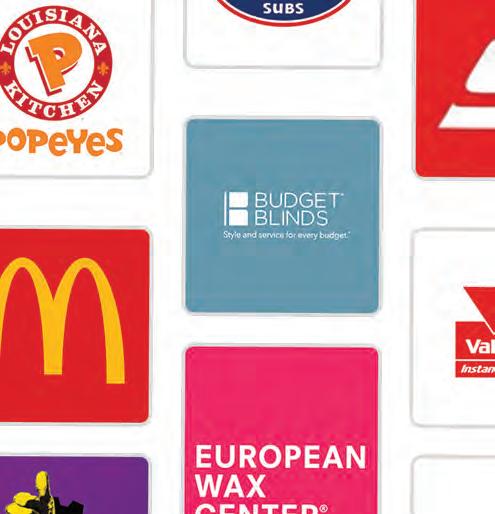







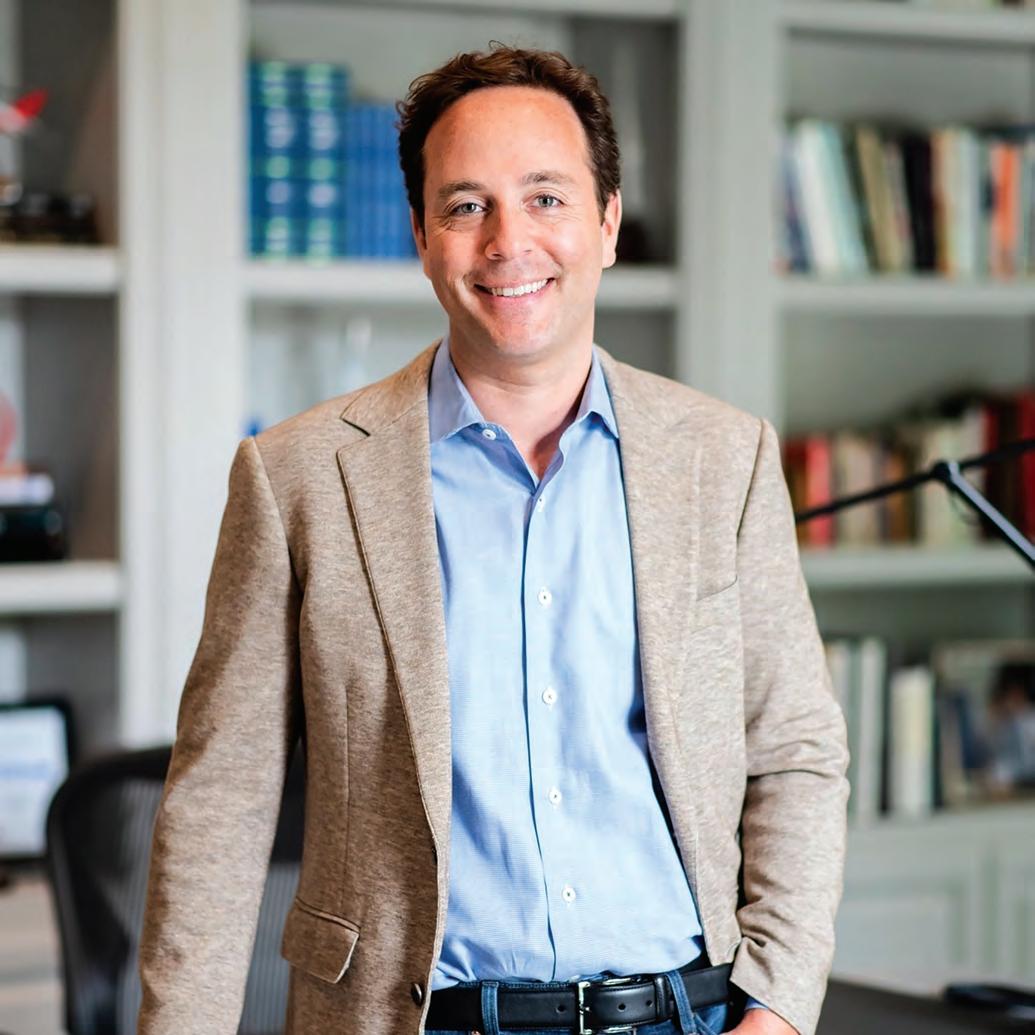
Spencer Rascoff cofounded Hotwire and Zillow. Now he’s an investor and serial startup founder. Here’s his advice for funding and growing a giant, ambitious idea. by
NICOLE LAPIN
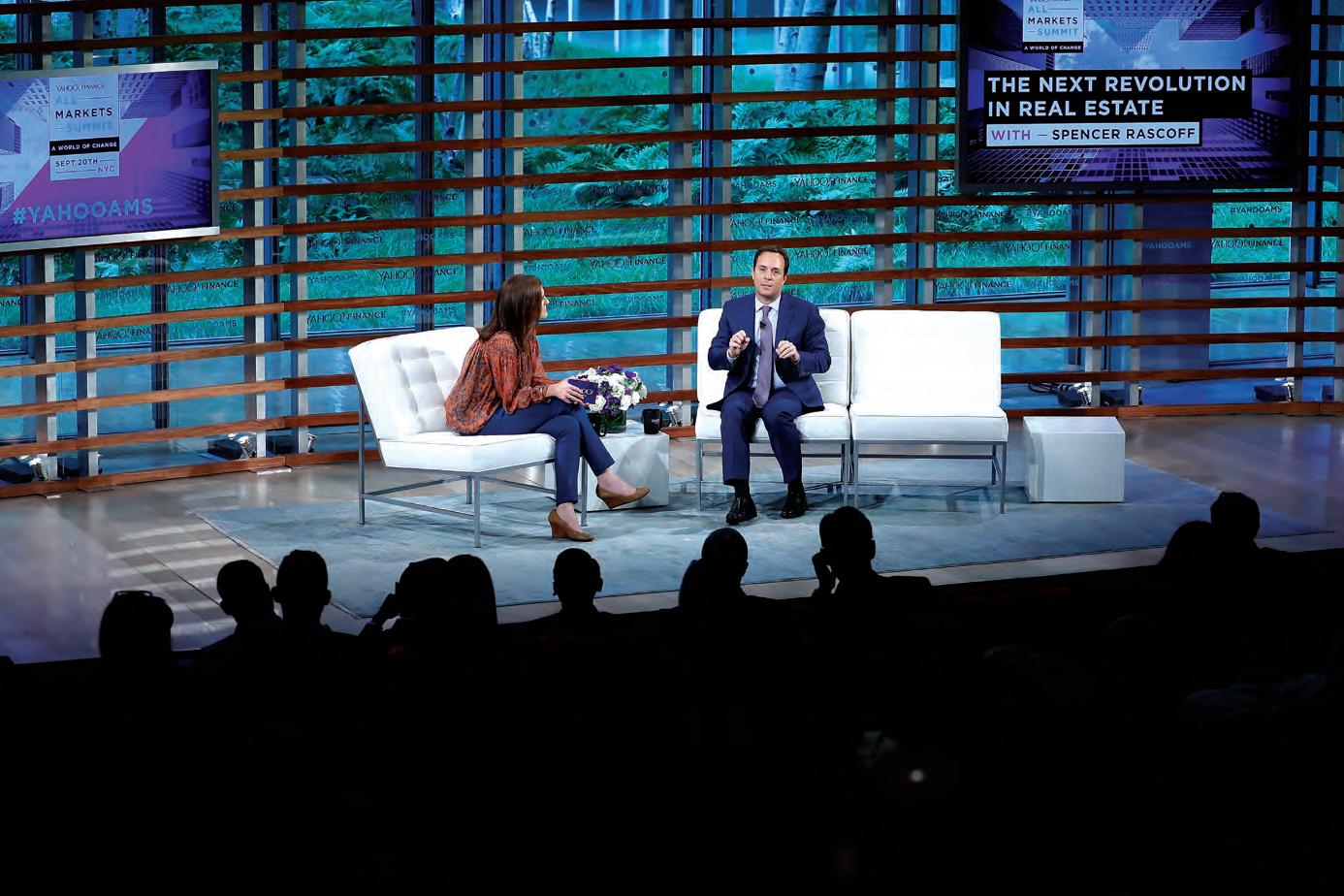
Want to start, fund, and sell a major company? Spencer Rascoff has some advice on that— because he’s seen it from all sides.
As a founder, he first cofounded the travel-booking site Hotwire, which he sold to Expedia. He then cofounded Zillow, which helped reshape nothing smaller than the real-estate market, and served as its CEO for nearly a decade. Now he’s a serial board member, an investor (including as general partner at the venture fund 75 & Sunny), and a continual startup founder—including building social platforms for sharing intel on food (Recon Food, which he started with his teenage daughter) or what’s best to binge-watch (Queue), saving creatives from the endless emails they face as they chase down business leads (heyLibby.ai), and simplifying the market for co-owning a second home (Pacaso).
“I find problems that I have in my life and feel passionate about, and I try to solve them by starting companies,” he says. But actually funding, growing, and selling those companies? That’s about great ideas—and also cold, hard numbers. Here, he explains.
You’ve said that Zillow didn’t start with the idea— it started with the team. Can you tell that story? Actually, this is true of a couple of my startups. I had sold my company Hotwire to Expedia. I had been at Expedia for about a year, and decided it was time to do something more entrepreneurial. So I left with two other folks, who were actually the founders of Expedia; then we added one or two more folks. And we sat in a conference room for,















Our credibility and longevity are unmatched. With more than 65 years of experience and over 26,000 centers worldwide, we know what it takes to help franchisees succeed.
• High Demand for Education Enrichment
• Industry-Low Franchise Fee of $2,000
• Extremely Affordable Startup Costs
• Comprehensive Training & Support Programs
• Generous Incentives Package Ranked on the Franchise 500 for 27 Years Straight #1 in Category for 23 Consecutive Years
gosh, maybe three months or more—just talking and kind of shooting the shit about: What’s important to you? What services do you love? What are you doing in your life right now? And all three of us were buying houses, all at the same time. We quickly realized that here we were in 2005, and the internet was more than 10 years old, and there still was no category-defining company that empowered the real-estate consumer, not the industry. So Zillow was born.
You often tell startup founders to look for businesses with a big TAM, low NPS. Can you break down those terms?
“TAM” is a Total Addressable Market. A big TAM means there’s lots of money spent in the category. “NPS” is Net Promoter Score. It’s a measure of how much people like a product or an industry. Generally speaking, it’s calculated by asking people, “Would you refer this service to a friend?” A low NPS means people are dissatisfied.
Real estate has a big TAM: something like 15% of the economy is in real estate. And it has a low NPS. Everybody finds it to be a pain in the neck. Nobody likes their real-estate agent. Nobody likes homeshopping. Definitely nobody likes home-selling. It’s just, it’s a very unpleasant thing. So that makes it ripe for startups. But entrepreneurs also need to know the difference between TAM and “SAM”: the Serviceable Addressable Market.
Because every investor pitch starts with something like, “This is a trillion-dollar opportunity,” right? How do you feel about those claims? They create skepticism for a
good investor. So I think it’s useful for founder pitches to cop to the SAM. Basically, say, “Look, I understand that this market’s massive”—TAM—“but realistically, this is how much of it I, and my startup, and my idea, and my team, can truly go after”—which is SAM. And even if that’s a much smaller number, at least it’s more realistic and therefore credible.
about exits? What should that look like?
So, if you’re raising institutional venture capital, you should not be focused on an M&A (mergers and acquisitions) exit. You should believe that the idea and opportunity is big enough that it could be a publicly traded company, which means it could be worth over $1 billion. Generally, that’s a threshold above which you can go public. So to get to a $1 billion-plus valuation, you probably need at least $100 million of revenue.
to invest in companies that they think do have that potential.
If you have an idea that’s smaller than that, then bootstrap it or raise “friends-and-family” capital from noninstitutional investors, because VCs are not going to fund you.
Institutional investors are kind of like a nesting doll, right? They have investors themselves.
I’m glad you brought that up. I think this is misunderstood or just not well known among founders: When you get a check from a VC firm, where is that money coming from? The fact is, it’s not sitting there in their checking account.
Let’s say a VC has a billiondollar fund, and they put $10 million into your startup. They’re not going to their checking account and taking $10 million out of the $1 billion. Instead, the general partner— the person who founders meet
lot to say about how the general partners invest.
Everyone has a boss. Even when you’re raising money. I’ll tell you a quick story. Maveron is a top venture capital firm that has invested in a couple of my companies. I’m also an LP there. They had a couple of their LPs attend a meeting a few months ago where they spoke to the CEOs of Maveron’s portfolio companies. The LPs were a children’s hospital and a university endowment and, I think, an environmental organization—so, these huge nonprofits that each have $5 million, $10 million, $25 million in the Maveron fund as limited partners. It was so interesting to hear them talk. They were like, “Look, if this fund that has invested in all of your startups is a 5x fund, then I, at the hospital, will be able to add another 25 beds to our intensive care unit.” And then
IT’S USEFUL FOR FOUNDER PITCHES TO BASICALLY SAY, ‘LOOK, I UNDERSTAND THAT THIS MARKET’S MASSIVE, BUT REALISTICALLY, THIS IS HOW MUCH OF IT I, AND MY STARTUP, AND MY IDEA, AND MY TEAM, CAN TRULY GO AFTER.”
Now, there are plenty of great ideas and plenty of good companies that should be started—and will be successful— that have a smaller opportunity than that. Just realize that you’re not going to be able to raise institutional venture capital, because the VC business model is predicated on spreading a lot of chips out on the roulette table: They will accept a lot of zeros, but two or three of their roulette bets are going to pay off big—100x, 1,000x, 10,000x. So they’re only going
with to try to convince them to invest in their company—issues a “capital call” to the VC’s limited partners (LPs).
LPs are, say, a university endowment fund or a firefighters’ pension fund or a highnet-worth individual. They’ll each have a commitment to the VC’s fund, and they’ll get a capital call that says, “OK, we just invested $10 million in this new startup. Send us your piece.” And then the VC passes it on to you as a startup. And those limited partners have a
the environmental organization LP says, “You know, if this is a 5x fund versus a 3x fund, that’s the difference between us protecting another million acres of the rainforest in South America versus only a hundred thousand acres.” It was eye-opening for the portfolio company CEOs to understand what actually happens when we create an exit for the VCs.
To hear more of this conversation, listen to Nicole Lapin’s podcast, Money Rehab.








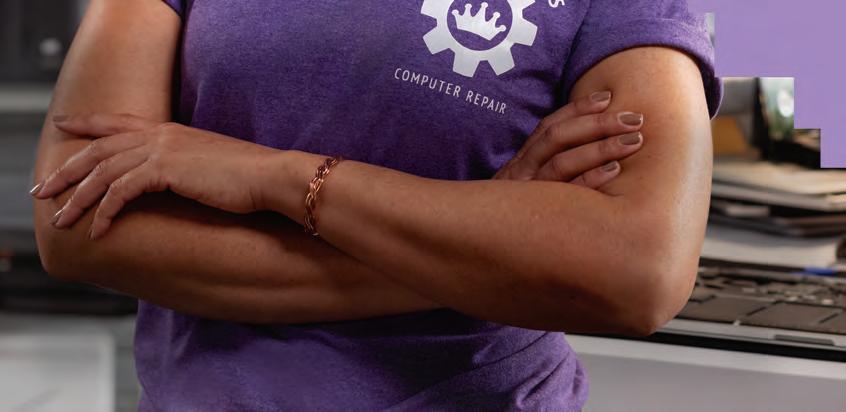














































































adding friction to a process makes it run smoother.
how do you know when to do it? And how do you do it well?
by ROBERT I. SUTTON and HAYAGREEVA
“HUGGY” RAO
Everyone knows the exasperation of unnecessary friction.
We’ve all navigated systems that create maddening ordeals rather than give us simple answers, services, or refunds. We’ve sat through endless meetings with blabbermouths and ill-defined agendas. We’ve pulled our
hair out over rules, procedures, traditions, and technologies that once made sense, but are now antiquated, pointless, and inefficient. These are all soul-crushing forms of organizational friction that make it difficult to do simple things. And as professors at Stanford’s School of Engineering and Graduate School of Business, we spent the last seven years
researching the causes and cures for these problems.
But one of our biggest discoveries surprised us. It turns out that friction isn’t always a problem. In fact, sometimes it can be a solution.
For example: We may love how simple it is to order a ride on Lyft or Uber, or rent a place on Airbnb—but when a sixyear-old asks Alexa to get her a
dollhouse, and a $162 KidKraft Sparkle Mansion arrives the next day, her parents aren’t so enthused. That process could have used some friction.
Here’s another example: Unfettered, overconfident leaders can rush their half-baked creations to market, burning a lot of cash along the way. That process, also, needs friction. Piles of studies show that to do creative work right, teams need to slow down, struggle, and develop a lot of bad ideas in order to find a rare good one.
The value of friction is all around us—as are the downsides of removing it. Technologies like Slack and Zoom can make communication frictionless, but they can also make it easy for clueless leaders to inflict long and convoluted communications on colleagues and customers. Product innovation can make delivery and setup nearly frictionless—but studies on everything from military boot camps to assembling Ikea products show that “labor leads to love.” The harder we work at something, and the more we suffer, the more we come to value it.
Ultimately, our research showed that friction must be taken seriously—and nobody should make snap judgments about what ought to be easier. Instead, leaders should hit pause and question their assumptions to figure out what to make easy, hard, or impossible. When and where you want friction requires weighing an organization’s goals, values, talents, and constraints—including money, traditions, rules, laws, and power dynamics.
We call this the art and science of “friction forensics,” and we’ve developed eight diagnostic questions to help guide you through such decisions.

If you’re figuring out whether to make a process easier or harder, here’s what to ask:
1/ Is adding (or removing) friction the right—or wrong—thing for you to do?
2/ Do you have enough skill and will to do it well? Or do you need to learn how to do it? Or crank up your motivation?
3/ Is failure cheap, safe, reversible, and instructive?
4/ Is delay wasteful, cruel, or downright dangerous?
5/ Are people already overloaded, exhausted, and burned out? Or do they have the bandwidth to add more to their plates?
6/ Does it require people to work alone or with one another? To do it well, how much do different people, teams, and organizations need to coordinate (work together) and cooperate (be willing to work together)?
7/ Will reducing or eliminating friction for some people result in it being heaped on others? Are you making things easier and harder in the right places? Is the redistribution of friction ethical and fair? Or is it heartless, destructive, exploitative, and cruel?
8/ Are the commitment, learning, and social bonds that can result from hard work, frustration, suffering, and struggle worthwhile given the human and financial toll?
AFTER FIGURING OUT your answers to the first two questions—what the right (or wrong) thing is to do, and if people have enough will and skill to do it well—then you can debate the six additional questions to decide whether to make something easy, hard, or impossible.
As an example, consider a simple obstacle that Laszlo Bock imposed when he headed People Operations at Google.
Google cofounder Larry Page believed that hiring people who fit Google’s quirky culture and had strong leadership potential was essential for scaling the company, so he imposed a tradition of seemingly endless rounds of interviews with job candidates. Page knew he was making enemies among candidates because Google interviewed them 10 times or more and still rejected most—but he believed it was worth it.
As Google grew, however, this practice devolved into a sacred cow that was unnecessary for most job searches. It drove away
1/ Bock had good reason to believe that endless interviews were a big problem, and this obstacle would be effective—or at least worth a try.
2
/ The rule was so simple that his HR team had no trouble implementing it, and Google interviewers had no trouble learning it.
3/ The rule was cheap to implement, and easy to modify or reverse.
4/ The rule reduced frustration and delay for eager candidates and for Google teams that wanted to hire them.
5/ Most Google interviewers were already busy; burnout and exhaustion were problems in
BOCK’S RULE is elegant and instructive, and—except for the possible dimming of the “labor leads to love” effect—appeared to help everyone affected. This is a good example of why policies that make use of friction should be evaluated over time. Page may have originally viewed the strikingly high number of interviews as some necessary friction in the hiring process, to ensure the most ideal candidates make it to the end. But as the company grew, that particular bit of friction became obstructive, and a new type of friction was needed to clear the path forward.
ULTIMATELY, OUR RESEARCH SHOWED THAT FRICTION MUST BE TAKEN SERIOUSLY—AND NOBODY SHOULD MAKE SNAP JUDGMENTS ABOUT WHAT OUGHT TO BE EASIER. INSTEAD, LEADERS SHOULD HIT PAUSE AND QUESTION THEIR ASSUMPTIONS.
ABOUT WHAT OUGHT TO BE EASIER. SHOULD HIT PAUSE AND THEIR ASSUMPTIONS.
top talent, and burdened the six, eight, 10, 12, or 15 Googlers who interviewed, evaluated, and discussed each candidate. Sometimes it was even worse. Bock told us, “People had up to 25[!] interviews before being rejected.” So he made a simple rule: If more than four interviews were to be conducted with a candidate, Bock needed to personally approve an exception. This didn’t forbid more interviews, but it added friction to the process. Most Googlers were hesitant to ask an executive vice president like Bock for an exception, so the ordeal disappeared for most job candidates. “It was one of my first lessons in the power of hierarchy to actually do some good,” Bock told us.
Let’s assess Bock’s simple hiring rule by returning to our eight questions:
many corners of the company. This change reduced rather than increased the burden on these beleaguered people.
6/ Implementing the change required little coordination or collaboration; it was simply announced, and (for the most part) Googlers gently pressed one another to follow the new rule. Coordination and collaboration were still essential for writing job descriptions, selecting and interviewing promising candidates, and deciding whom to hire. But involving fewer people reduced such burdens.
7/ The obstacle created by this rule wasn’t exploitative or cruel, as it added friction in the right places and reduced it in the wrong places.
8/ The old practice of endless interviews did have “labor leads to love” effects, increasing commitment and social bonds among the interviewers and candidates who survived the gauntlet. This is a potential negative effect of the rule.
Ultimately, the wrong kinds of friction can squander the zeal, damage the health, and throttle the creativity and productivity of good people—while burning through company cash and other precious resources. All organizations, even the most successful, can make the right things too hard and the wrong things too easy. If a process at your company is gobbling up time and resources, maybe it’s time to ask: Could I make this easier by making something about it harder?
This essay was adapted from The Friction Project: How Smart Leaders Make the Right Things Easier and the Wrong Things Harder by Robert I. Sutton and Huggy Rao. Copyright © 2024 by the authors and reprinted by permission of St. Martin’s Publishing Group.





Take charge of your entrepreneurial journey with PuroClean, a proven franchise system. With our comprehensive training programs and unwavering support, you can confidently expand your business empire and achieve remarkable success.







































WANT TO KNOW MORE? Scan the QR Code to learn more about your investment opportunity
It’s an old cliché: Failures make you stronger. But how, exactly? Here’s the way one entrepreneur put them to good use—and now drives $25 million in annual sales. by
LIZ BRODY

→ THE STARTUP CURE
Shizu Okusa built success with Apothékary by remedying what ailed her first company.
When Shizu Okusa decided to start a new business, she knew where to find the best guidance. “I wanted to reverse engineer everything I did wrong in my last company,” she says.
Raised on a farm in Vancouver by Japanese immigrants, she’d founded a cold-pressed juice brand called JRINK after feeling burned out at Goldman Sachs. It had nine shops and sold in two Whole Foods stores. But it was hard to make a lot of money. So in 2020, Okusa took all the lessons she learned and created Apothékary—an herbal remedy
business that’s now profitable, and drove roughly $25 million in revenue last year. Here’s what Okusa saw go wrong, and how she made it right.
DON'T Give it a short shelf life.
DO Make it scalable.
JRINK launched when cold-pressed juices were in demand, but the product’s three-day shelf life made it nearly impossible to grow beyond a local business. In her next company, she chose a product built for scale. “I wanted very high gross margins, a shelf life of 18 months or more, and a category-defining opportunity,” she says.
DON'T Move fast and grab any investors you can.
DO Move slow and find the right investors.
With JRINK, Okusa took whatever investors she could—only to discover that some were not so helpful. “People don’t talk about this,” she says, “but once you have an investor, you can’t just get rid of them—and it can be very expensive or sometimes impossible to buy one out who turns out not to be a good fit.” This time around, she’s looking for relationships, not just dollars. “We’ve raised roughly $13 million, but mostly from angels and family offices that share a more patient, long-term view. We’ve
also looked for founder funders who have operational experience and relationships to offer.”
Go all in on one
sales channel.
Try everything!
Okusa focused on foot traffic to drive business at JRINK—using pop-ups in gyms and yoga studios to increase brand awareness, so people would buy more at their local store. “But that’s a very capped audience,” she says. With Apothékary, she’s trying everything she can think of: affiliate, social media, paid advertising, free consultations, pop-ups. “Recently, we partnered with Truemed to get our products qualified so people can buy them with their HSA and FSA funds. We’ve seen so many new customers come in with very large ticket sizes.”
DON'T Keep trying to make it work.
DO Pivot fast.
“JRINK was an eight-year journey that I should have ended sooner,” she admits. “With Apothékary, my whole team is constantly thinking ahead.” They saw the rise of “sober curiosity” coming and in 2023, did a major rebrand including new refillable jars and tincture products, which she estimates will be 70% to 80% of its business this year. The rebrand also added phone consultations—a new sales tool with a 50% conversion rate. “Consumers want to be taken with the company ahead of the game,” she says.


Your next gig is waiting on Florida’s Cultural Coast ® .
Here, creativity, culture & arts, and the nation’s best beaches combine to ensure a healthy quality of life. Entrepreneurs welcome, or discover your next role.



Every brand needs a look—but how do you create an eye-catching design that’s true to your company’s purpose? Here, six business leaders explain how they did it.


“The food delivery space is extremely crowded, and our competitors have raised over $20 million each, while we’ve never raised a Series A. So we couldn’t rely on huge media budgets or celebrity endorsements. Instead, we focused on the aesthetics of our experience, so that photos or videos of our food would grab people’s attention on their Instagram feeds. Our meals are packaged in reusable glass jars with millennial-pink lids, and reusable oval, pastel bento bowls that look like Easter eggs.”
—JULIE NGUYEN, cofounder and CEO, Methodology
“Because we intended for our pots and pans to be sold globally, we wanted to use shapes that felt familiar—yet new—in the East as well as the West. So we took our favorite elements of Japanese design and mashed it up with mid-century Scandinavian design, and added a contemporary perspective on colors and finishes. We wound up with a product that was a little retro, a little futuristic, a little minimalist, and a little maximalist. And when pitching the products to retailers, I’ve realized they really want to know the stories behind the design.”
—MJ TRUONG, head of brand, Meyer Cookware
and Cookware

3/ Design that amplifies your purpose
“In 2023, we did a brand refresh to capture the wide range of emotions inherent to eating-disorder recovery. Our curving line represents the nonlinear recovery journey that is universal to treatment, and our new color palette is brightened and more modern. We added a pop of peach for warmth and compassion, modernized our navy to a more youthful periwinkle, and added colors like lime and bright teal for a jolt of energy. Our website also now showcases a wide range of photography to honor the unique identities of those who struggle with eating disorders.”
—LAUREN GERBER, head of brand and communications, Equip

5/ Design that scales with you
“With cereal, we knew we were entering the most colorful aisle in the supermarket. We joined the color explosion, but in a monochromatic, simpler way, to read healthier. We also wanted to visualize each flavor, but real food photography looked too corporate. Our big unlock was what we call ‘delicious illustrations.’ However, as we grew outside the natural grocery channel, and researched consumer insights from mainstream grocers, we gave our boxes a facelift with brighter hues, more prominent messaging, and more of a focus on flavor.”
—IAN WISHINGRAD, cofounder and CMO, Three Wishes

4/ Design that mirrors the product
“When a customer takes a box of our mochi out of the freezer, we want them to know they’re getting a premium product. Early on, we leaned heavily into sophisticated aesthetics, but found that our product was suited for a gentler nod to luxury. That means rainbow color palettes that are elegant but still fun, inspired by our flavors and ingredients. This is contrasted by navy and sandstone on the exterior packaging. It all emulates our mochi: simple on the outside, but a world of imagination inside.”
—CHRISTOPHER WONG, cofounder, Mochidoki


Design that welcomes people in
Bring your team and America’s Finest City will deliver the ‘wow factor.’

Networking. Brainstorming. Planning. Problem solving. These are all elements of a productive business meeting. As the leader of your team, setting goals and charting a course for the future are critical. But so is a meeting’s “wow factor.” The more your employees and clients have fun and engage in new experiences while talking shop, the more memorable and effective your business meeting will be.
No other meetings destination offers an inspiring mix of stunning venues, breathtaking views, vibrant nightlife, rich culture, exciting attractions, and enviable outdoor lifestyle like San Diego. Things like positivity, innovative thinking, and team synergy come naturally thanks to 70+ miles of wide-open coast and a downtown area that’s buzzing with excitement.
San Diego’s downtown is pleasantly walkable and its close, convenient proximity to the San Diego International Airport makes America’s Finest City an ideal location to host a national sales meeting, a planof-action meeting (POA), or conference. When it comes to delivering that “wow factor,” San Diego doesn’t disappoint.
Revel in hands-on competition with a touch of elegance. There’s arguably no better way to relax and unwind (while engaging in a little competitive fun) than by hitting the links. And there’s no more breathtaking golf course than Torrey Pines. Located in San Diego’s La Jolla region, the course boasts two picturesque championship 18-hole courses, both situated atop cliffs that tower over the Pacific Ocean.
Once your team finishes a round and taking in the spectacular view, head next door to The Lodge at Torrey Pines, an award-winning luxury resort. Whether you’re there for the spa, fresh regional cuisine, or a delicious beverage served on the outdoor terrace, you may never want to leave.
Sometimes a business meeting needs a dash of luxury, and you’ll find it at the Fairmont Grand Del Mar. A grand Mediterranean estate nestled amidst San Diego’s Los Peñasquitos Canyon, this is where business meets elegance, offering a variety of luxury accommodations and gorgeous outdoor spots with sweeping lawns and views.
Enjoy some thrilling sports action.
Want to get employees amped up? Why not treat them to a thrilling sporting event? That’s where Petco Park comes in. This architecturally magnificent ballpark is home to Major League Baseball’s Padres baseball team. It’s located downtown, steps from the Gaslamp Quarter and Convention Center, where there is ample variety of sensational venues for meetings of all sizes.
If baseball isn’t for you, then a trip to Snapdragon Stadium may be more your speed. Located in Mission Valley, the stadium is home to the San Diego Wave soccer team and hosts exciting events and entertainment all year round.
Just minutes away from the San Diego International Airport and within easy reach of all that San Diego has to offer, Mission Valley and Old Town are conveniently located in the center of San Diego County within a 10-minute drive of numerous attractions, museums, and experiences.
Bask in the sunshine and get out by the water.
Nothing brings the “wow” factor quite like a business meeting right on the water. Take your team to San Diego’s Mission Bay and Beaches.
One of the area’s prime event venues is Belmont Park Coaster Terrace. Overlooking the ocean and sitting just steps from the historic Giant Dipper Roller Coaster, this is a 4,000-square-foot venue that can accommodate up to 300 guests. With an indoor space and outside area, this beautiful rooftop retreat is a front-row seat to Mission Beach beauty. A company event in San Diego is one your team won’t soon forget.
Ready to plan a business meeting everyone will remember? Learn about all San Diego has to offer at sandiego.org/meetings
Funded In Part With City Of San Diego Tourism Marketing District Assessment Funds

Some product categories are truly dull, but that doesn’t mean their brands have to be. Tom Rinks knows that better than almost anyone. by LIZ BRODY

I→ TIME TO BRUSH, KIDS!
This new toothpaste line did $5.5 million in sales in nine months.
n 2021, when Tom Rinks was asked to rebrand an oral care company, he had a few thoughts: The name sucked, for one. The market looked impenetrable. And the product was boring as hell. It was right up his alley. Rinks is an unusual guy, with an even more unusual skill set.
Intense and given to obsession, he studiously maintains an in-
visible profile online and wears his lucky Tupac socks to every important meeting. He’s also developed a reputation as a brand savant—with a specialty in turning unexciting things into fun, cool merch.
His largest hit was Sun Bum, which he cofounded and sold for around $400 million. And he’s credited with popularizing the chihuahua—the dog once
just seen as an ugly, annoying rodent—by turning it into a countercultural clothing brand and inspiring the iconic Taco Bell campaign (although, it’s complicated; we’ll get to that).
All of this is to say, Rinks was a good match for Spotlight, the oral care company. Three dentists, including two sisters from Ireland, had poured their hearts and
was looking for: Great brands start on the inside. An athlete and track coach started Nike. Computer geeks started Apple. Bikers started Harley-Davidson. But Crest and Colgate came out of giant corporations. So Rinks renamed Spotlight for its founders: “Made By Dentists.”
“If someone’s partner goes, ‘Why did you buy this toothpaste?’ they can say, ‘Because it’s made by dentists—I thought it would work better!’”
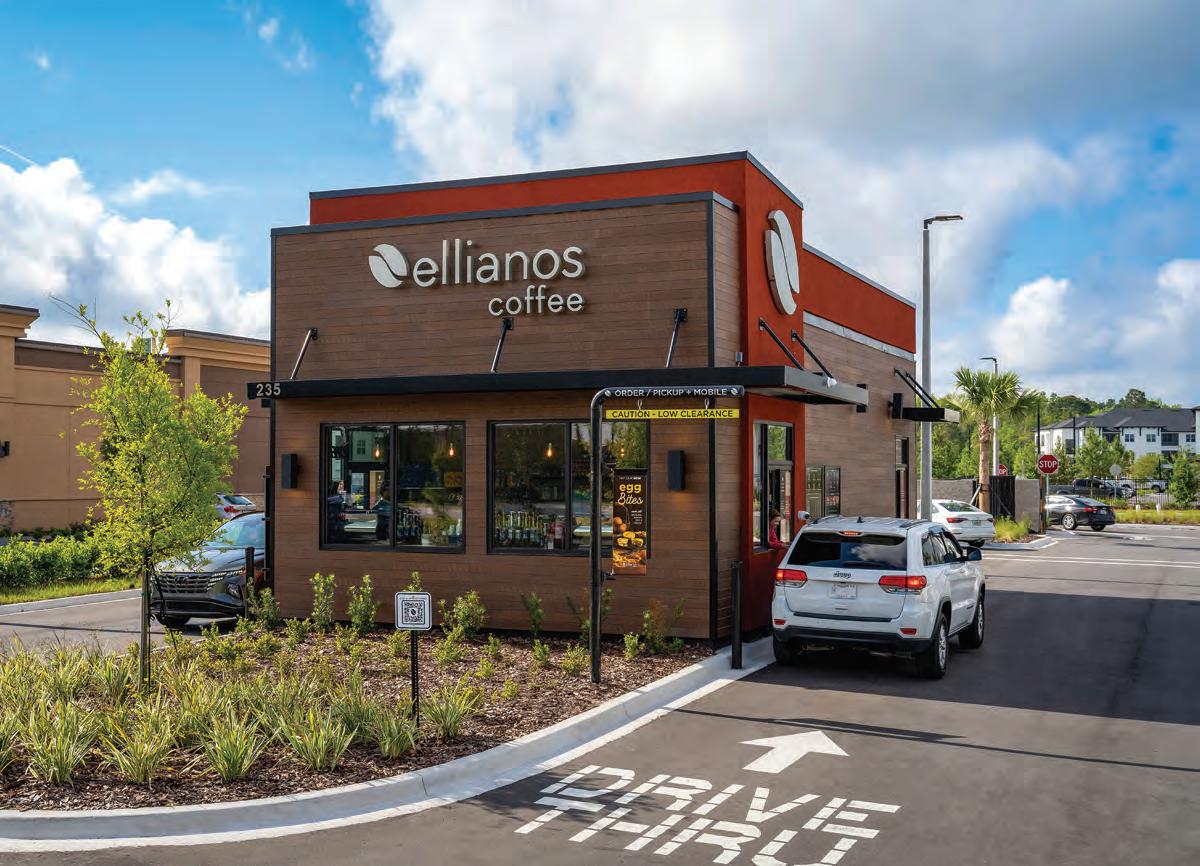
$1,024,602 SYSTEM-WIDE AUV*

He designed the packaging to feel like a prescription from a doctor, and the new look launched in March 2023.
UNFORTUNATELY, after all of that aisle stalking, early sales were disappointing. “I missed it,” Rinks says.
He wasn’t the type to sit around and hope things worked out, so he began ruminating on his past work, searching for what he’d done wrong. The first thing he realized was that the brand had no humor— the very skill that had launched his entire career.
He’d been 26 and working at a furniture store in Grand Rapids when one day, he stood on the shore of Lake Michigan and saw surfers. As a Southern California native, he couldn’t believe his eyes. Surfers. On a lake? He went home and drew
an old Castaways-style dude sitting on his longboard in the middle of the calm water.
He printed the cartoon on a shirt with the words “Waiting for the big one.” Then he called Meijer, the Midwest supercenter chain, and pretended to be a surfwear rep. It got him a meeting. When Vivian Dryer, a buyer there, walked into the room, she found Rinks in a suit with a single shirt and some artwork to show. Even so, it struck her as incredibly fresh.
“Let’s do it,” she said, and put in an order for 1,800 shirts. It was the beginning of a thriving apparel business.
That taught him something valuable: Underwhelming things can be flipped into valuable ones, especially if you poke some fun at them. In 1994, he saw a similar opportunity. He’d been reading a
→ SURF’S DOWN ...but sales were up! Rinks turned this cartoon into his first true business.
magazine, and saw a photo of Madonna with a chihuahua. “At that time, it was all about big dogs and top dogs and No Fear brands,” he says. “There was no Legally Blonde. No Paris Hilton with an accessory chihuahua. People hated them. But Madonna is now holding a chihuahua—a rat dog? I thought that’s just in itself gonna make it cool.”
Rinks partnered with cartoonist Joe Shields, who drew a raggedy cartoon dog character they called Psycho Chihuahua. When accompanied by captions like “Bite Me!” it became a new hit on T-shirts. From there, Rinks and Shields allege a direct line to the famous “Yo quiero Taco Bell” campaign that was out by early 1998. They filed a lawsuit over it. In court documents, a Taco Bell employee admitted that he saw the Psycho Chihuahua character at a trade show and asked Rinks to develop promotional ideas around it, which led to months of work together. But the actual chihuahua campaign came from the ad agency TBWA\Chiat\Day, which said it conceived the idea independently. After lots of legal back and forth, the case was settled in 2005.
Rinks doesn’t love talking about it. But it taught him a lesson: “If you’re trying to create brands,” he says, “you really need to understand people’s feelings.” And people love a funny underdog.
THAT FED into the second major insight of Rinks’ career: A company shouldn’t just have char-
acter; it should be a character. “You’re creating a person that other people like,” he says. “Not a brand that people like.”
This was the guiding principle behind Sun Bum. In 2010, Rinks and his business partner René Canetti had a branding agency, when a client asked: Could they create something new in the sunscreen aisle? It was a tough category. Nobody enjoys wearing sunscreen, and brand loyalty was scarce.
Like a novelist imagining his protagonist, Rinks drummed up a detailed persona for Sun Bum. It was Tommy Lee from Mötley Crüe—edgy, tatted, and bad-boy sexy—but this Tommy was also the best dad ever and volunteered at the soup kitchen. This Tommy had the cool of an idiot at the beach who might get tangled up in their boogie board cord and is unbothered by it all—the type to say, “Hey, come hang with us at the bonfire.”
“He was what I want people to think a Sun Bum guy was like,” says Rinks. “And so they go, ‘OK, I like that guy. And if I like that guy, I like the brand.’”
Of course, they couldn’t actually use Tommy Lee from Mötley Crüe. So Rinks and Canetti created a mascot named Sonny: He was an ape wearing shades and exuding an amiable chill, who appeared in ads that said things like, “We don’t care if you use ours. Just use sunscreen.” The packaging was a “mash-up style”–of ’60s surf culture, Japanese street art, and the wood grain of an Eames lounge chair—to bring everyone together at that metaphorical bonfire. “No one was doing anything fun and disruptive like this,” says Lisa Motzko Hamilton, a merchandising exec at Ulta Beauty when






















JUST LIKE CHIHUAHUAS AND SUNSCREEN, NOBODY LIKES THE DENTIST. “I LEARNED THIS LONG AGO,” RINKS SAYS. “IF YOU CAN HIT ON THE TRUTH OF SOMETHING WHERE PEOPLE GO, ‘YEAH, I AGREE,’ YOU’RE GETTING THEM THAT MUCH CLOSER TO BUYING.”
Rinks brought the brand there. Eric Carl, who was at Target for 13 years, agrees. He remembers taking meetings with Rinks back then, and being in awe at how large his thinking was. “Brand people think very transactionally,” Carl says. But not Rinks. For example, Sun Bum expanded with a kids’ line—“and Tom’s there ready to create Nickelodeon shows around his Baby Bum characters,” Carl recalls. “He’s going on, out of left field. And the buyer’s like, ‘Wait, so which SKU is going to go on the shelf?’”
SO THAT’S what Rinks missed
with Made By Dentists: It had no humor or character. He began to fix the problem by designing a new kids’ line for the toothpaste, which looked like a mash-up of Creepy Crawlers, graffiti, Vans checkerboard, and skater streetwear. He drew an alien character and a great white shark, and offered flavors like “eyeball juice” and “monster slime.” He posted zany videos on Instagram called “In-Sink Entertainment,” with little characters and funny, snarky plots. It all had a knowing nod to parents—as if to say, “Anything to make the kid
brush, right?”
In the first nine months, the kids’ line crushed, doing $5.5 million in sales. But the adult line lagged with $3.3 million— not the traction he wanted.
Rinks knew what he needed to do, but not how—until finally, one night at 2 a.m., he got an idea. He was in bed scrolling through eBay when he came upon a clone of a 1962 Ben Casey doll from Hong Kong. “He just looked at me like a villain from a James Bond movie,” Rinks recalls. “And I said, ‘Man, who is this guy?’”
Then he knew: It looked like “the dentist everyone loves to
→ CAVITY COMEDY
Scenes from a new Made By Dentists ad, featuring a very unlucky dentist and a sharp new rebrand.
hate.” This would be the humorous muse of Made By Dentists. He outbid himself all night to win the thing.
On his first attempt, Rinks realized, he played it too safe. He had tried to show people why they should care about toothpaste by making it an official, dentist-approved thing. But he should have done the opposite—and made the dentist the bad guy! Just like chihuahuas and sunscreen, nobody likes the dentist. “I learned this long ago,” he says. “If you can hit on the truth of something where people go, ‘Yeah, I agree,’ you’re getting them that much closer to buying. Because you’re not changing anybody’s mind. You’re connecting with all the people who already think like you. And then you show that, ‘Hey, we’re vulnerable enough to poke fun at ourselves,’ and they’re with you.”
With that vibe in hand, Rinks did a second rebrand. Will the new dentist scheme work? We’re about to find out—it launches in stores this March.
In the meantime, Rinks prepares himself, thinking about a tattoo he has on his chest. It says “37,” Paul Newman’s prison number in Cool Hand Luke. There’s a poker scene in the movie, where Newman’s character gets dealt a terrible hand— but bluffs his way into winning. “Sometimes nothin’ can be a real cool hand,” he tells the group. For Rinks, with his product résumé of unexciting cards, that resonates. “I’ve always told people it’s not the hand you’re dealt, it’s how you play it,” he says. “Same goes for brands.”

The International Franchise Show
April 12-13 | London, England
Partnership event with MFV NSE
FRANCHISE EXPO WEST
April 12-13 | Los Angeles, CA
Partnership event with MFV Expositions/Comexposium
LEGAL SYMPOSIUM
May 5-7 | Washington, DC
IBA/IFA JOINT CONFERENCE
May 7-8 | Washington, DC
INTERNATIONAL FRANCHISE EXPO
May 30 – June 1 | New York, NY
Partnership event with MFV Expositions/Comexposium
FRANCHISE CUSTOMER EXPERIENCE CONFERENCE
June 18-20 | Atlanta, GA
Partnership event with Franchise Update Media.
Franchise Expo South
September 6-7 | Ft. Lauderdale, FL
Partnership event with MFV Expositions/Comexposium
IFA ADVOCACY SUMMIT
September 9-11 | Washington, DC
FRANCHISE LEADERSHIP AND DEVELOPMENT CONFERENCE
October 16-18 | Atlanta, GA
Partnership event with Franchise Update Media
FRANCHISE EXPO AUSTIN
November 15-16 | Austin, TX
Partnership event with MFV Expositions/Comexposium
EMERGING FRANCHISOR CONFERENCE
November 18-20 | Austin, TX


Mario Armstrong, gear expert and two-time Emmy Award winner, recommends tech solutions that keep up with you wherever, and however, you work.






1/ A smartphone stand that follows you.
Tired of doing video selfie-style? The Belkin Auto-Tracking Stand Pro with DockKit [$180; belkin .com] acts as your personal cameraman. On video calls with Zoom, TikTok, FaceTime, and others, the dock holds an iPhone magnetically while charging it, while you dial in the perfect tilt position. Content creators can use the iPhone’s Apple DockKit tracking feature to rotate and tilt the Belkin, keeping your face focused in the frame automatically, whether in portrait or landscape mode.
3/ The go-anywhere desktop.
4/ A straight-shooting tripod.
Want to record a conversation and transcribe it? You usually need a recording device, and to then send the audio file somewhere. But not with the Plaud Note [$159 plus $10/month subscription; plaud.ai], which is a credit-card-size recorder that automatically transcribes whatever you capture (and summarizes it in a companion app with a subscription). The battery records up to 30 hours of meetings and the 64GB memory holds about 480 hours of conversations—and it can even capture calls on your phone.
HP Envy Move All-in- Stand Pro
Laptops and tablets were the only mobile computers—but the HP Envy Move All-inOne [from $900; hp.com] now brings big-screen performance wherever you can carry the 9.04-pound desktop. Work in front of the 23.8-inch touch screen while typing on the keyboard and trackpad for up to four hours using the rechargeable battery. A pair of feet spin into position when you set the screen down, keeping it upright, then rotate out of the way when you yank the Envy up by its built-in handle.
Tripods hold cameras, but it’s a lot of fuss to get your shot leveled. The Edelkrone Tripod X [$2,599; edelkrone .com] fixes that automatically, thanks to a gyroscope accelerometer and motors. Splay open the feet, and the tripod moves at nearly 50 inches a minute—even when topped with 66 pounds of camera equipment—to level itself on uneven ground at the push of a button. Control how slowly the tripod moves and connect a shuttertrigger cable for silky video and stop-motion shots.
Clicks [from $139; clicks.tech] makes the old new again, adding a BlackBerrystyle physical keyboard to iPhones 14Pro and newer. The rubbery case slips around the smartphone, creating a fourrow keyboard with clicking buttons—which not only feels great, but returns valuable screen space otherwise occupied by the virtual keyboard. The case supports wireless and corded charging, backlights the keys, and includes a few iOS keyboard shortcuts— like Command-H taking you to the home screen.







































If you’ve been hearing a lot about side hustles lately, you’re not alone. The term has slipped into our common consciousness in recent years—so much so that Merriam-Webster added it to its dictionary in 2022.
“Side-hustle is a word on the move,” the entry says. “Although the precise definition of this term is still in a bit of flux, it appears to be centering on ‘work performed for income supplementary to one’s primary job.’”
“In a bit of flux” is right. As you’ll see on the following pages, having a side hustle means many things to many people. Some rely on the extra cash to pay their bills, others want a fun hobby that makes a little money, and still others want to build an entirely new business or career. A 2023 Bankrate survey found that nearly 2 in 5 of all American adults now have side hustles, and more than half of all Gen Zers and millennials. Among these younger side-hustlers, 1 in 5 Gen Zers and 1 in 4 millennials hope to one day make their side gig their full-time job.
Factors like the normalization of remote work and a general sense of economic instability have surely fueled this trend, but one thing is clear: It’s not slowing down. As one side-hustler, Justin Cambra, told us: “In today’s world, stability is from multiple sources of income. I’m trying to generate as many revenue streams as possible.” Hopefully, the stories here will help you do just that.











When people talk about side hustles, they usually think of gig work for the likes of Uber or DoorDash, or starting a company in their off-hours and growing it into a full-blown business. But we found people making thousands of dollars on all sorts of weird, wonderful side hustles that fall somewhere in the middle. Peruse their ventures, and get inspired!
by FRANCES DODDS and AMANDA BREEN
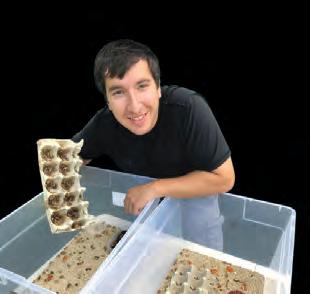
makes thousands of dollars on all sorts
If you don’t get squirmy around creepy-crawlies, try breeding insects! Crickets, Dubia roaches, and mealworms are all easy to cultivate, and lizard-owners never stop needing to feed their reptiles. learned this in 2016, when he bought his daughter a bearded dragon. He was shocked by how expensive crickets were, so he researched how to breed them himself. “It was really easy, because crickets are rampant breeders,” he says. So rampant, in fact, that he had a surplus to sell. Neal created a site on Shopify and promoted it on reptile-owner forums.
There were challenges—keeping crickets alive during shipping is tricky. But when the pandemic arrived, “It seemed everyone bought a bearded dragon,” Neal says. “All the local pet shops were closed, so everyone went online looking for live insects.” These days, he earns about $30,000 a year from his crickets. “It’s profitable and gives me something to do with the kids.”

Some furniture-lovers scour Facebook Marketplace for those rare perfect finds. But what if you pounced on imperfect pieces instead? There’s money to be made refurbishing and selling old stuff.
Lilly Skjoldahl discovered this in 2022, when she got hit with a $10,000 dentist bill—almost a quarter of her annual income as a program manager in public health. She needed cash, and fast. She started spending weekends and after-work hours searching for and refinishing furniture. Her first item was a $50-ish nightstand, which she sanded, stained, and transformed into a liquor cabinet. She sold it for about $195. “I really enjoyed the process and loved the cash, plus I had leftover supplies,” she says, “so I decided to keep going.”
In early 2023, Skjoldahl was able to quit her day job. By the end of the year, she’d earned over $235,000 from furniture flipping and related streams of income, like brand deals and social media content.
Teach a class online. Just like this retiree making

If you’ve used Eventbrite, it was probably to buy a ticket to an in-person event. But the platform actually hosts all kinds of events— including virtual courses (as do other platforms like Teachable, LinkedIn Learning, and more). So what’s it like to teach? A retiree Bill Reichman tried it out, and now makes about $250 per class.
Reichman always loved to bake, and after retiring, he started teaching at a local cooking school—“like a date-night function.” During the pandemic, he offered a free class for kids on Zoom, which he advertised on Eventbrite. Later, he began teaching classes for adults at $25 a ticket. “Once I attached my checking account to the [Eventbrite] system,” he says, “the money just flowed automatically.”
Reichman prefers Zoom classes of 10 or less, so he can see what everyone is doing. “I use recipes to teach the science of baking,” Reichman says. “So you’ll know what’s going on in your bowl and in your oven.”


Maybe you have an idea for a simple product that could be improved. You don’t want to start a full-blown company, but you’d happily sell something in your spare time. That’s Barry Farris started making $80,000 a year selling cat
Barry worked as a pharmaceutical rep, but always had an innovative streak. After retiring, he wanted to invent something. “That’s when he came up with the idea for the cat fountain,” Patricia says. “He’d lost a number of cats to kidney disease, which is related to cats not drinking enough water.”
Cats prefer chilled, flowing water. So in 2009, Glacier Point Pet Fountains was born. Today, there are hundreds of cheap pet fountains on sites like Amazon. But the Farrises source nontoxic, pharmaceuticalgrade materials like high-fire ceramic with antimicrobial tubings and fittings, and assemble the fountains at home. They sell 300 to 400 a year for $120 to $340 apiece.

If you spend hours online browsing and screenshotting things you can’t justify someone should because they’re so cute, or funny, or nifty—you could turn your mindless scrolling into pocket money. did this after retiring in 2019. “I was incredibly bored,” she says, “so I started a blog of unique gifts for those who have everything.” She named it Gifter World, and scoured the internet for items to delight and surprise. Then she started monetizing with affiliate partnerships— where a website links to a product, and earns a commission if someone clicks and buys. Torrey joined the Amazon Associates Program and affiliate networks like Awin, Skimlinks, and ShareASale, which offer access to thousands of retail websites.
“At first it was just a hobby,” Torrey says, “but now I make about $1,500 per week with Gifter World, and during the holidays, it goes up to around $3,000.”

If you have a creative itch, a love for thrifting, and an eye for potential, then revamping old apparel could be a lucrative—and environmentally responsible—venture. Many shoppers are looking for alternatives to fast fashion and are thrilled to find a one-of-a-kind item. Maddy Clements realized this when she was studying fashion design in school, and using thrifted clothing for her projects instead of spending money on new fabric. “I enjoyed taking something old and drab and figuring out ways to make it new and exciting,” she says. She didn’t know if it would go anywhere, but she began posting about her creations on TikTok under an account called Junk Gold. She worried that, at almost 30, she was “ancient to the Gen Z crowd”— but after two of her videos got a million views, she was bombarded with customers. Within three months, sales soared from $500 to $10,000, and by the end of that year, she made $50,000.
Rent

Have some extra space? An app called Neighbor lets users rent parking spots, basements, attics, and garages to others looking to store personal items or vehicles.
Justin Cambra, an investor who recently left his job at Amazon, is making over $1,300 a month doing this. He lives in Seattle, where he had an unused, paved lot on his property. One of his first Neighbor customers was going to the Philippines for eight months. “Airport parking is about $10 a day, so that’s $300 a month, and I was half that at $150,” Cambra says. “It’s only a $20 Uber to the airport from my place, which saves you a lot of money. So I get people like him who are long-termers, and then I get people who are taking an extended trip and need parking for two to four weeks at a time.”
With 20 spots, he’s experimenting with prices. He started at $200 a month, and then dropped incrementally to his current rate of $125. “Now I’m getting more traction,” he says, “so I may even drop it to $100.”
Just like this retiree making $1,000 a

Maybe you’ve considered driving for Uber or Lyft—but aren’t crazy about chauffeuring strangers in your own car. Well, you might be interested in Alto, a high-end ride-sharing app that makes drivers actual employees, with training and hourly pay—and gives them all-white Buick Enclaves to drive on their shifts. Alto is currently operating in Dallas, Houston, Los Angeles, Miami, and Washington, D.C., and is swiftly expanding.
Larry Mack lives in Dallas, where he’s retired. The idea of driving appealed to him, but the one time he tried Uber, someone threw up in his car, and he was stuck with the bill. So when he heard about Alto in 2019, “It seemed like a no-brainer,” he says. He drives 20 to 30 hours a week, which comes out to about $1,000 a month. “I’m an explorer, and driving for Alto has allowed me to see places in the DFW area that I didn’t know existed. It doesn’t even feel like work!”
out your pool.
Just like this couple making $84,000 a year

If you’re fortunate enough to have a swimming pool at your house, you may be looking at a liquid cash opportunity. The online marketplace Swimply lets people rent out their pool—or other private recreational spaces like tennis, pickleball, and basketball courts—by the hour.
When Stuart Doty heard about this, he knew he had the perfect setup. He works in healthcare and lives with his wife in Portland, Oregon, where they have an indoor pool and a tennis court. In December 2020, after hearing about Swimply, Doty says, “I entered my pool’s info quickly and arbitrarily named it the Mad Men Pool. The bookings started rolling in.” On weekends, they charge $80 an hour for access to the pool and $40 an hour for the tennis court, and offer a 20% discount on both during the week. Because the pool is indoors, groups book the space all year round. The income varies by month, but in their first year, Doty and his wife made $84,000.

Do you know a lot about something? Your knowledge is valuable. The site JustAnswer hosts more than 12,000 experts across 150 categories, who are paid a dollar amount per question based on their category and quality rating on the site. JustAnswer says the average expert makes $2,000 to $7,000 per month, with the biggest earners hitting as high as $20,000 per month. (Other sites serve more targeted niches, like Paperial, where you can answer students’ questions.)
Jennifer Sheffer, a New England-based antiques dealer, has been working as an appraisals expert on JustAnswer since 2012. She makes $10,000 to $20,000 a month, and typically puts in 40 hours a week. “The great thing is that JustAnswer treats the experts equally, whether they work a lot or just here and there,” she says. To become an expert, the platform has you fill out an online application.

If you have a teaching background or a passion for kids, there’s never been more need—or methods— to connect with students. Outschool is a platform that offers live, online classes on everything from core subjects to fun after-school activities.
Elementary school teacher Tara Laczynski was laid off during the pandemic, so she started teaching math on Outschool. “The biggest challenge is getting ‘seen’ in the search engine,” she says. “Most of my early students were friends, family, and classmates of other early students. Social media is also a great way for families to find you. You can create tips to share as reels.”
Early on, Laczynski put a lot of time into her curriculum, but now works about 32 hours a week—27 teaching, plus another five on administrative work, content creation, and meetings—and makes an average of $12,600 a month. “In the traditional classroom, I worked 40-to-50-hour weeks.”



Calling all extroverts! If you want to build your own schedule and meet new people, then representing brands at events like festivals, sports games, conventions, and conferences could be the perfect side hustle for you.
A decade ago, Tremont Turner was in college, working at Chipotle and Panera, when he heard that being a brand ambassador paid double his hourly wage. The work involves stuff like handing out products (say, samples of Aperol Spritz at a music festival), taking pictures with fans, and getting people to download an app or follow a brand on social media. “Probably my favorite jobs are summits where CEOs get together to network,” Turner says. “Our job is to facilitate them meeting each other and having a good time.”
Turner says groups on Facebook are the best place to find these jobs (search “brand ambassador” in your city, or “promotional models”). And once you’ve worked for a brand, you’ll get on their email blasts.

If you have a hobby—say, word games, knitting, meal planning, or anything that can be rendered in templates—your pastime could translate to passive income. Put your best ideas down on paper, and sell them as “printables” on sites like Etsy and Shopify. started doing in 2017. As a full-time middle-school teacher, she wanted a side hustle, so she began designing printable games for kids that teachers could use in their lesson plans or parents could print off on rainy days. Fink tried to create the experience of an “escape room” on the page, with reading passages, ciphers, and comprehension questions. She sold her creations for $4 to $5 on her own website, ThinkTankTeacher, as well as Etsy and Shopify. Sales trickled in at first. But within six months, she was making five figures a month. “The best part about printables is that the income is passive,” she says. “One single lesson can sell over and over again.”

Do you have a car and some time to kill? You’ve got what it takes to become a loan-signing agent. They guide people through the process of signing paperwork, mostly on real estate transactions—everything from reverse mortgages to home equity loans. Barbara Hill became a loan-signing agent while working a full-time software sales job. But after being laid off at 62, she upped her loan-signing game, and now makes about $66,000 a year. Signings pay between $50 and $175 for beginners, and $100 and $250 for agents with experience.
The first step is getting commissioned by your state as a notary public. (Find instructions on your state’s Department of Revenue website.) Then, educate yourself a bit. “I came across this guy, Mark Wills,” Hill says. “His course ‘Loan Signing System’ taught me, step by step, everything I needed to do and all about the documents, and where and how to get work.”
Find a way to make AI tools useful. Just like this financial analyst making $4,000 a month

We’re still in the early days of figuing out how to use AI in our lives, so pay attention if you notice an application that would come in handy.
Soon after ChatGPT launched, financial Dhanvin Sriram observed that “ChatGPT is only as good as the prompts you give it, and there was no database where you could find these prompts. So I was like, Let me build something very simple and see what happens.” He compiled prompts from Twitter and Reddit threads, and created a simple website called PromptVibes, where users can search for prompts by category, or explain their “task” to a chatbot that helps to identify a prompt. Within a few months, the site had gotten 100,000 organic visitors, so Sriram started sending a newsletter on ChatGPT prompts five days a week. He began selling ad spots in the newsletter: a big one for $300 and a small one for $70. He now has 19,000 subscribers, and makes about $4,000 a month in ad sales.
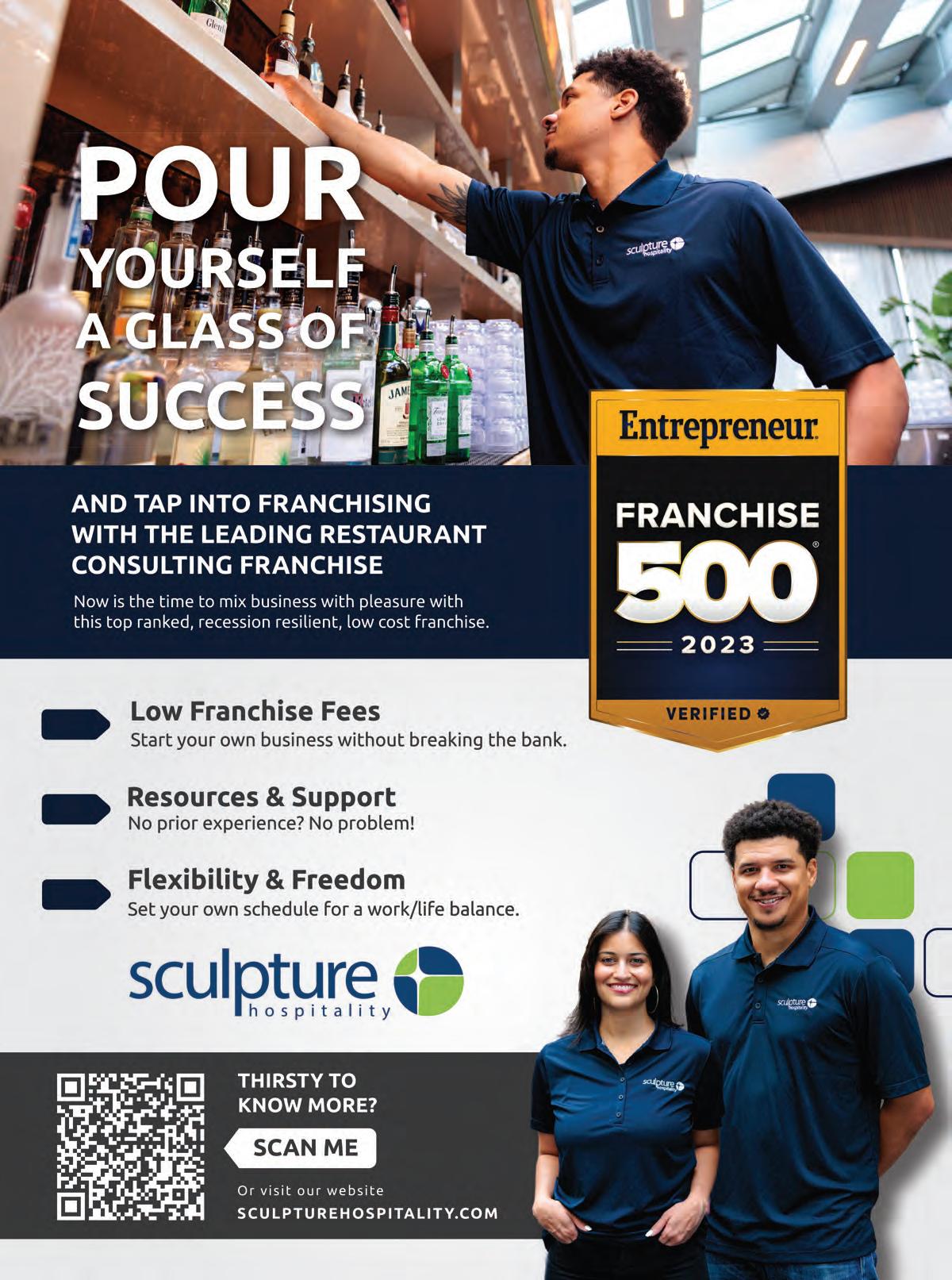

Some side hustles just earn you extra cash. Others are the seeds of full-fledged businesses. Here are three tactics to build long-lasting companies, from three founders who turned their side hustles into full-time operations.
by AMANDA BREEN

If you have marketable skills, but you aren’t sure how to spin them into a business, try teaming up with someone from an entirely different industry. Together, you could pinpoint opportunities for innovation. That’s what Gene Caballero did. Back in 2012, he worked in sales at a Fortune 500 company, and started talking with a childhood friend who’d built a landscaping business. They came up with an idea—a platform to connect homeowners with lawn care professionals. Caballero would run sales, while his friend navigated the industry. They called their company GreenPal. “We devoted countless hours to cold-calling vendors to join our platform,” Caballero says. “We even set up a kiosk in the mall.” At last, in 2017, GreenPal started making consistent income, and in 2021, surpassed what Caballero made at his full-time job. Now, in peak season, earnings exceed $3 million a month. “Hold onto your primary job as long as possible,” Caballero advises. “It’s the financial backbone for your side hustle during those early, uncertain days.”
TACTIC NO. 2/
Treat your day job like industry research.

If you’re working a full-time job, you have an inside look at how your industry operates—and its unmet needs. Plus, you already have connections. International trade specialist Wendy Wang realized this when she was working for a textiles company and noticed something strange: “The covers for outdoor furniture available in the market were either exorbitantly priced or subpar quality,” she says. She wondered why that was— and whether she could make high-quality covers at lower costs. “I did in-depth research to understand the nuances of the market, and spent a considerable amount of time sourcing high-quality materials,” she says. “Then I set up an e-commerce platform to facilitate easy transactions.” She called the brand F&J Outdoors, and it launched in 2018.
About a year in, the business started generating monthly income. Two years in, it surpassed her salary from her day job, so she quit. Now, she says, F&J Outdoors makes a monthly average of $66,000 in revenue.

A person identifies a need in their own life, creates a solution, and then turns it into a business. It’s maybe the most tried-andtrue business origin story—and also a great kickoff for a side hustle.
Publicist Blake Geffen discovered this when she was planning her wedding in 2017. She wanted high-end accessories, but didn’t want to splurge on expensive pieces she’d wear once. “That’s when I realized there was a hugely untapped market for borrowed luxury accessories,” she says. She told her soon-to-be husband about her idea, and the newlyweds spent their honeymoon fleshing out a business plan.
Geffen returned to her day job, but continued developing the idea for what would become Vivrelle. “On weekends, we were pitching potential investors and garnering relationships with vendors and partners to help us create a website, help with marketing, etc.,” she says. They launched with a modest goal of 50 subscribers in the first month, but “far surpassed” that. Since then, they’ve raised more than $60 million.

Maybe! A startup called OpenStore gives Shopify store owners two interesting options: Sell and walk away with a generous payout, or take a vacation while they grow your business for you.
by RACHEL DAVIES
Stefan Gehrig’s side hustle was doing well—and that became a dilemma.
The Melbourne, Australia-based entrepreneur had started a gym bag brand called Knkg, also known as King Kong Apparel, in 2011. It began as a side hustle that scratched an entrepreneurial itch untouched by his academic day job, then grew into his full-time business. But by 2021, he’d hit a wall: To scale up, he needed resources that he didn’t have.
Meanwhile, in Miami, investor and former PayPal executive Keith Rabois had just helped found a startup called OpenStore, which acquires Shopify stores with growth potential. Gehrig heard about OpenStore, but wasn’t interested in selling Knkg. Then, in 2023, the startup launched another offering called OpenStore Drive, which lets Shopify owners retain ownership while handing off operations to OpenStore. That interested Gehrig a lot more.
Here’s how it works: For one year, OpenStore Drive offers Shopify brand owners monthly payments comparable to what they were making before starting the program, while Drive scales the brand and keeps any revenue beyond that monthly payment. At the end of the year, owners have the choice to sign up for another year, sell to OpenStore if they make an offer, or take the company back. For Gehrig, this arrangement had basically no downsides. “Signing up for Drive was not just about having more time for myself, but about putting Knkg in better hands,” he says. “I’m still a full owner of the brand, but they’re kicking goals on my behalf.”
For both acquisition and Drive, OpenStore looks for brands that do the majority of their business on Shopify, have at least $500,000 in net sales, and sell primarily to U.S.-based customers. “Where it becomes more of an art than a science is when we project whether a store has significant upside under our operation,” says OpenStore’s
head of sourcing, Frank Kosarek. “Knkg was really the golden situation. We saw very strong potential and realized we absolutely needed to work with this brand to take it to the next level.”
The road to getting noticed by OpenStore is straightforward. To be considered for both acquisition and Drive, entrepreneurs upload their financials to the OpenStore website and connect their Shopify and ad accounts. Within a business day, business owners can expect to receive an estimate of how much OpenStore would pay to buy them out (acquisition deals typically fall between $500,000 and $10 million) or how much they would receive in monthly payments.
From sign-up to sale, the process generally takes under a month, with the majority of time spent in due diligence after an offer is accepted. Once that hurdle is crossed, a transition phase allows the OpenStore team to learn more about the intricacies of the brand. As Gehrig was considering Drive, his main concern was whether the customer experience would change. After visiting the OpenStore team at their Miami office, he was convinced that they would operate the brand with care and were invested in the Knkg brand guidelines he’d established.
OpenStore has many success stories to show off. Jack Archer, a brand that was acquired in 2022 with a revenue of $1 million, reached $10 million after just nine months with OpenStore. Regen Health, a Drive brand, saw new customers grow 50% month over month after just a few months on Drive. “Whether we’re driving a store or acquiring a store, we’re treating it with the same growth playbook that we’ve developed to scale any new Shopify brand,” says Kosarek.
These days, Gehrig is a few months into his time on Drive—and still not sure what he’ll do at the end of the year. But he does know this: Having more time has allowed him to spend more time with his kids, go golfing more often, and, true to the entrepreneurial spirit, work on developing a new brand. “If I do take Knkg back, I’ll get a much better brand than I left,” Gehrig says.



















































Nick Loper is the founder of Side Hustle Nation, where enabling other people’s side hustles to thrive is his full-time job. Here, he shares his top insights for right now.
by RACHEL DAVIES
Nick Loper doesn’t just teach the art of side hustling—he’s a side-hustler himself. In 2006, while working a full-time gig at Ford Motor Company, he launched a website that recommended footwear through affiliate links. After six years and about $10 million in sales, he turned his attention to another side hustle: an education company called Side Hustle Nation, which teaches others how to build and run—you guessed it—side hustles. Here, he answers users’ most common questions.
Side hustles take a lot of time and work. What’s the key to staying motivated?
First, choose one you’re excited to take action on. But also, when I ask this question to guests on my podcast, they often say, “I was afraid to stay where I was. It pained me to ask my boss for time off.” You hear these deep-rooted motivations of, “I needed to get out, I needed to be in charge of my own thing.” So connecting with your “why” is super important. You almost have to hit rock bottom.
Are there certain side hustles you’re seeing that are really lucrative right now?
I see a lot of opportunity in blue-collar services—everything from window washing to mobile car cleaning to pooper-scooper businesses. Fewer people are going into the trades, so there’s a shrinking supply and a growing demand from millennial homeowners, like me, who aren’t very handy. Plus, a lot of the competition is still not digitally savvy with their marketing.
There’s also demand for niche online agencies, where you’re not even selling your own expertise—but going out and playing matchmaker between the people who do have the expertise For example, a virtual assistant company called Belay has gotten really big by tapping into the talent pool of stay-at-home professionals, and putting a layer of unique branding and management on top of that.
There are similar opportunities in graphic design, web design, content writing, or video editing. Like, there are agencies
that say, “We’ll make TikTok videos for you, we’ll turn your longform content into short form and slice it up, we’re the pros at that.”
How do you know when to go all in on your side hustle?
My typical rule of thumb is to have profits from that business—going back three, six, or 12 months, depending on your comfort level—that at least cover your monthly expenses. I don’t want you to dip into savings or take on additional debt.
Any rookie mistakes to avoid? Investing too much upfront before an idea is proven out. I’ve talked to some people who’ve put $30,000 into designing a website, and it’s almost done. That’s kind of scary. I wonder, Do you have any customers yet? For most projects, you can get it off the ground—or at least put out a proof of concept—for a far smaller investment.
Side hustles can be isolating. What’s your advice for that?
We see a huge benefit in having some sort of peer or accountability group. In my company’s Facebook group, people post things like, “I’m looking for an accountability partner,” or, “I’m looking to form a mastermind group for the next 90 days or beyond.” That stuff is valuable.
What’s the most unexpected benefit of a side hustle?
For me, it was this almost “CEO mindset.” When I started my original side hustle, and was running it on nights and weekends, I started to see the bigger picture stuff at my day job. It made me a better employee.

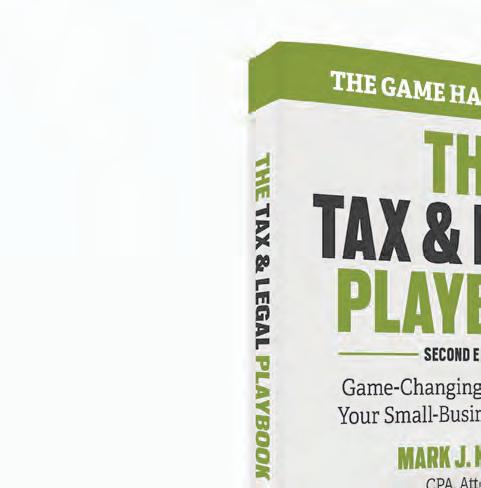


CPA and Attorney Mark J. Kohler reveals clear-cut truths about tax and legal planning and delivers a comprehensive practical, play-by-play guide that help you build wealth, save on taxes, and protect your assets. Buy The Book at entm.ag/tax-and-legal
SCAN TO MAXIMIZE YOUR REFUND



From Facebook and Twitter to Instagram and TikTok, social media is a marketing goldmine— if you know how to use it to your advantage. Ultimate Guide to Social Media Marketing is your go-to guide for getting noticed and converting likes into leads. You’ll get a 360-degree look at how social media marketing can work for your business including:
Strategic plans for setting up marketing campaignson today’shottest social networks
Recommendations forhowtoleverage imagesand video in your social media outreach
Tipson howtocraft yourbusiness’ssocial media strategy
Proven methods forusing chat bots, paid social media, and influencermarketing
Advicefor building your business social marketing team
It’s time to get social. Buy the book at entm.ag/ugsocial
Srettha Thavisin Prime Minister of Thailand
With its world-famous tourism industry, robust manufacturing, and flourishing financial services sector, as well as an agriculture base that ranks in the world’s top-15 exporters, Thailand boasts an enviably diverse economy. It is also a dynamic one - a recent report by global professional services firm Deloitte forecast that private investment will play an important role in driving GDP growth in 2024, with major investments in electric vehicle and electrical appliances and electronics manufacturing in particular.
Investor confidence in Thailand has been strengthening partly thanks to the energetic leadership of Prime Minister Srettha Thavisin, who has been traversing the world promoting his country. His government has pledged to increase Thailand’s annual growth rate to 5% in the medium term. To this end, it has provided support for farmers and small businesses and raised the minimum wage, while pledging to bring new foreign investors to the country to raise growth in the near term. Over the coming years, the government’s strategy is to develop Thailand as a regional centre for advanced technology and high-value manufacturing.
“The most urgent task of this government is to get the economy back on track and set Thailand up for success in the long run through reducing the cost of living, encouraging domestic spending, raising people’s quality of life, creating opportunities for Thai people, and expanding investments and businesses,” Sretta said in a speech late 2023. “Thailand is set to promote new economic developments and industries, such as digital economy, hightech industry, green industry, and national security industry; improving infrastructure such as airports to facilitate expanding international trade and
Ranked the third most competitive ASEAN country in the IMD’s latest World Competitiveness report and located in the heart of Southeast Asia, Thailand offers foreign businesses a wealth of world-class investment opportunities.
According to the Office of the Cane and Sugar Board (OCSB), Thailand is the world’s second-largest exporter of sugar, behind only India. Reflecting strong global demand for sugar, the value of Thai sugar exports rebounded quickly from the pandemic, amounting to USD 3.17 billion in 2022 after USD 1.6 billion in 2021, according to Statista.
Founded in 1945, Khon Kaen Sugar (KSL) is one of Thailand’s leading sugar producers and the long-term supplier of choice to global. KSL offer high-quality sugar meeting international standards as well as other by-products to industrial customers (B2B). The company is also behind several consumer favourite brands and was the first sugar producer to be listed on the Stock Exchange of Thailand (SET).
KSL offers a wide variety of sugar products, including high polarisation sugar, raw sugar, refined sugar, liquid sugar, and white sugar – as well as other products related to the sugar production process, namely molasses, bagasse, and filter cake.
Most recently, KSL expanded its business by launching Kane’s the first and only Low GI sugar product, healthy sugar in Thailand. With high technology and produced under license by KSL, which retains high levels of polyphenols from sugarcane that have antioxidant properties. Through the processing process and less attrition. It has been scientifically proven that it helps slow down the absorption of sugar into the bloodstream. It is considered a Low GI sugar with
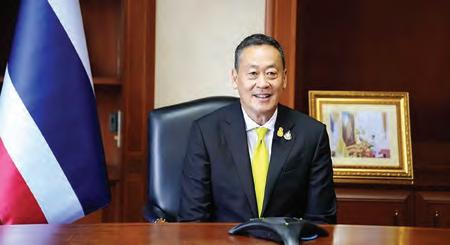
The government is making a multi-faceted push to boost growth an investment, including accelerating FTA negotiations and enhancing the ease of doing business and improving incentives for foreign investors. Sretta is taking a personal lead in building relationships with global business leaders, courting companies including Tesla, Alphabet, and Microsoft and pledging his personal support for investment. The Prime Minister has also been promoting Thailand’s $28bn Land Bridge megaproject, which would connect the Indian Ocean to the Gulf of Thailand, and thus provide an EastWest transportation alternative to the Malacca Straits.
The government’s pro-business reforms and planned investments across the board should help not only lift growth, but make Thailand a global investment destination of choice for businesses in high-tech segments such as electric mobility.
“In the EV industry, the government is set to establish a comprehensive EV supply chain that includes electric cars, electric bikes, electric buses, parts, and components,” Srettha said. “The government will implement measures to enhance the business environment to attract investors, provide privileges in the special economic free zone, establish a centre for battery testing, design academic course syllabus for skilled labour, and expand infrastructure for charging stations. The goal is to turn Thailand into the comprehensive supply chain EV manufacturing hub in ASEAN.”
properties consistent with international testing standards ISO 26642:2010 “Originally, our target market was Thai consumers, but as soon as we placed them in the international supermarket Villa, demand skyrocketed,” explains the company’s CEO, Chalush Chinthammit.

Given the response from foreign markets for KSL’s Kane’s range, Chinthammit says the company is looking forward to partnership opportunities as it aims to widen its global footprint. “We’re open to collaborating with companies that align with our values and long-term goals. Being a supplier to world-class brands entails meeting exceptionally high standards – it’s important for people to understand that. We’re constantly working to educate consumers.”
Ultimately, the secret to KSL’s success lies in the unwavering support it gives its sugarcane farmers. “We work closely with all our farmers to promote higher yields and collectively foster a positive business cycle,” says Chinthammit. At the same time, KSL’s sugar mills have the leading edge when it comes to management efficiency, and as the company increases its sugar-crushing capacity, its stock price is expected to rise.
Building upon decades of growth, KSL’s journey has taken it to the very top of the global sugar industry. Throughout, one factor has remained constant: the advantage of doing business in Thailand. “Thailand’s central location amongst populous countries such as China, India, and Indonesia is perfect for overseas firms targeting the region; it’s also the ideal export stepping stone to Myanmar, Laos, Cambodia, Vietnam, and Malaysia,” says Chinthammit.

Big companies take a long time to pay their suppliers. Sometimes, so long that the supplier goes out of business. Two entrepreneurs wanted to find out why this system is so broken—and wound up creating a solution.
by FRANCES DODDS
of business. Two is so broken—and wound FRANCES
DODDS

Instead, Stacey Abrams and Lara Hodgson were sitting in an Atlanta restaurant, dazed with disappointment, talking in circles, returning again and again to the same confounding question: How did we not know this?
It was 2010, and three years earlier, the women had cofounded a company called Nourish, which made grab-and-go baby bottles filled with premeasured, purified water for easy formula mixing. The company had
been finding its legs, one wobbly step at a time. Then, Whole Foods placed a huge order of their product.
“It was, like, orders of magnitude bigger than anything we’d done before,” Hodgson says. They were ecstatic. This is what they should’ve been celebrating. But then they read the payment terms. “We discovered that we weren’t going to get paid for three to four months. I mean, no small business can handle that.”
The women had run headlong into an unspoken rule: the bigger the buyer, the longer they take to pay. And it didn’t even matter what the official payment schedule was. “If your invoice says net 30 or net 60 or net 90—that’s just a suggestion,” Hodgson says. “We know now that the average net 30 invoice pays in 54 days. But back then, when we realized all this, I just remember thinking, like, Was I sick one day in business school? Why does no one talk about this?”
They had more questions, too. Why was this the status quo? Why did no one seem to think it was a big deal? And why—in a country that calls small businesses the backbone of the economy—had no one bothered to create a better solution?
Suddenly, they couldn’t stop talking about it. They talked with each other, and then with other small business owners, and then with academics and investors. And eventually, they decided to do something about it.
Later that year, the duo cofounded NowAccount, a novel business-to-business financing solution that lets small business owners get paid for invoices right away, with low, flat-rate fees, while building up their credit and outsourcing the time-consuming task of tracking down payments. Since its inception in 2010, Now has fasttracked almost $1 billion in payments for nearly 1,000 businesses, and in the past two years, more than doubled in growth.
But getting to this point took a long time: years of asking, and listening, and explaining, and insisting that something could and should be done.
“We had to convince people we could solve the problem,” Abrams says, “because it sounded like magic.”
Hodgson and Abrams met at a leadership program in Atlanta—but they might not have connected so fast if Abrams hadn’t fessed up to her audacious ambition.
It was 2004, and they were both enrolled in a tough session: The facilitator had researched attendees ahead of time, and made it his mission to target their insecurities, in order to prompt deeper conversation about biases. Hodgson is an extrovert who loves to talk—so the facilitator didn’t let her do that. “At the end of the weekend, he told me he needed me to know what it felt like to have no voice,” she says. “I did not like that.”
Abrams is an introvert, so the facilitator treated her the opposite way—constantly pressing her to speak. Eventually, he asked Abrams a direct question: “What is one
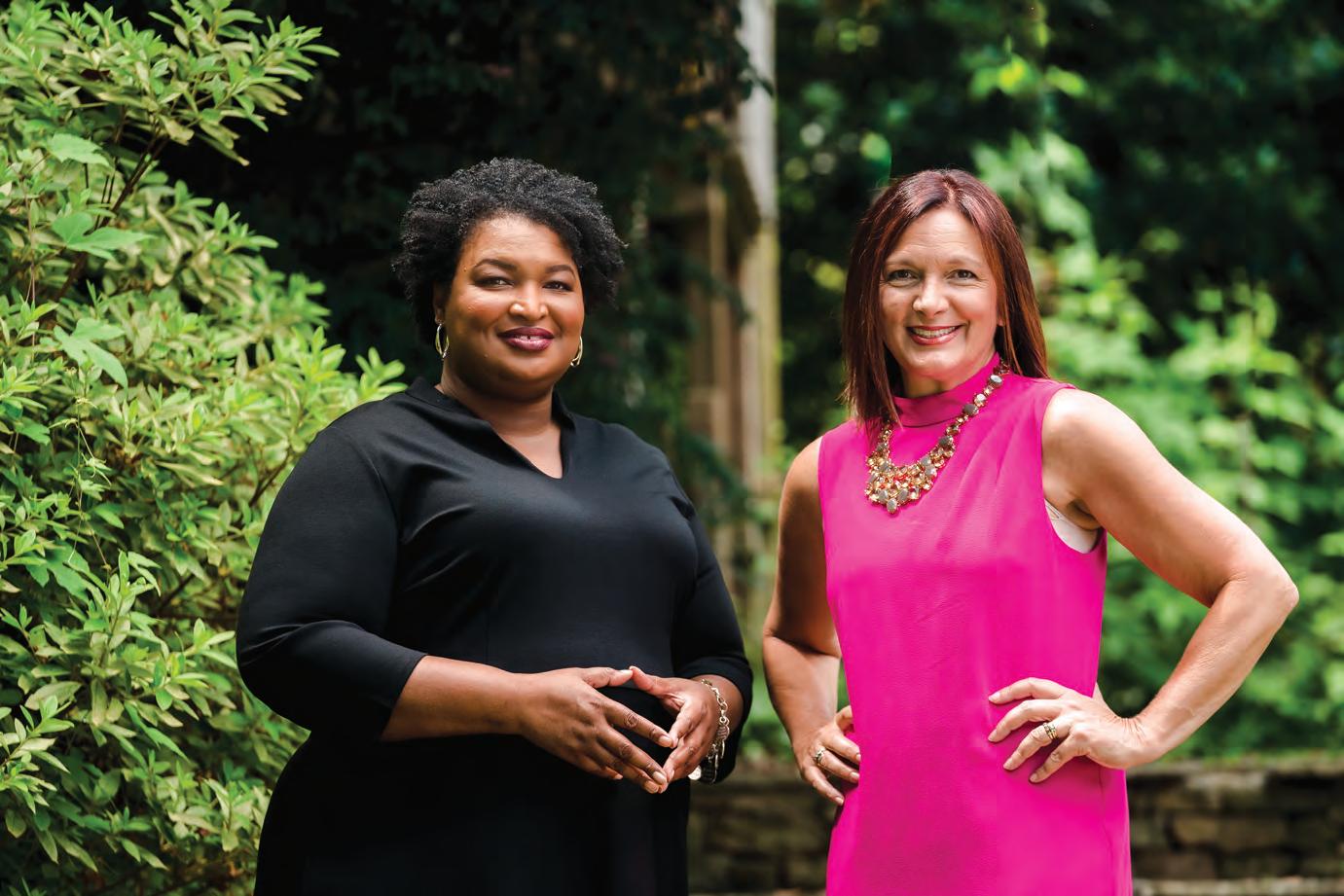
great ambition you’ve never wanted to say out loud?” She paused, then said she wanted to be president of the United States. Across the room, Hodgson remembers thinking, I always said that as a little girl, and girls don’t say that out loud! When they broke for lunch, Hodgson made a beeline for Abrams in the buffet line.
The women were assigned to the same study group. “We found that while we had different approaches to problems,” Abrams says, “we almost always aligned on solutions.” They became friends, and a couple of years later, founded a consulting company together, making use of Hodgson’s business connections and Abrams’ knowledge of local tax law. Then they founded Nourish. And that brought them to that bleak lunch in 2010, agonizing over how to get the money for their Whole Foods order. They were searching, once again, for an answer.
They’d scrambled to find conventional
bridge-funding solutions—a bank loan or invoice factoring—but found the first inaccessible, and the second predatory. Bank loans are hard to get for small business owners without solid credit, or for anyone who doesn’t feel comfortable with personal guarantees. Recourse-factoring companies, which buy invoices from small companies, charge variable fees, along with additional accruing fees for late payments (which the small businesses can’t predict or control), and often use invasive tactics like collecting money from the business’s bank account on a daily or weekly basis. Plus, if a payment falls through, the small business is on the hook for the full payment plus late fees, which leaves a liability on its balance sheet for months.
The best option Hodgson and Abrams had found—“a creative factoring agreement from a community bank”—also came with personal guarantees. This was uncomfortable for both women. Hodgson had a new
baby and worried about losing her house because of the loan, and Abrams had a mortgage and a lot of student debt. Plus, she was financially responsible for her parents and niece.
To both women, this situation just felt wrong. They knew they couldn’t be the first entrepreneurs to find themselves suddenly “growing out of business.”
“When you encounter a massive problem that’s been around forever,” Abrams says, “you tend to think, I can’t possibly be the first one to see it. So you assume what’s happening is your fault, or that the problem would have been solved if it could have been. And you usually stop there. But instead of critiquing ourselves, Lara and I decided to ask: OK, but why hasn’t it happened?”
When Abrams and Hodgson began talking about solutions, the first thing they thought of was simple: What if Whole Foods could pay them with a credit
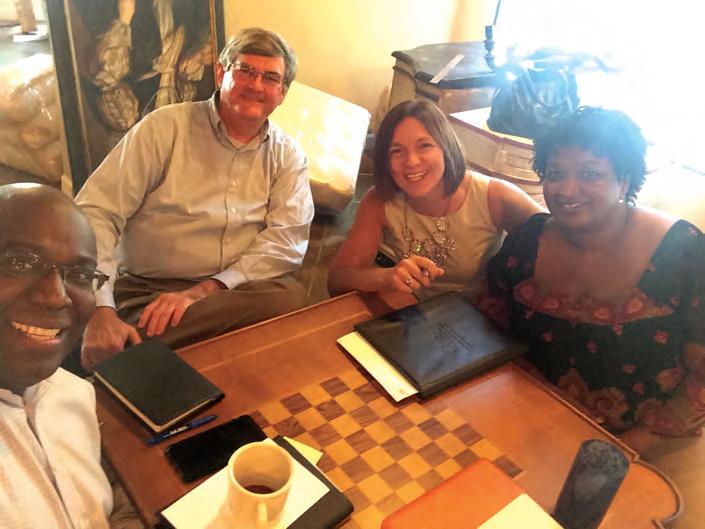
card? In this case, Nourish, the seller, would be charged the flat 3.5% transaction fee, and get paid right away. Then Whole Foods, the buyer, would pay down the balance on their own time with interest.
But therein lies the dilemma: Whole Foods doesn’t want to pay its suppliers right away—and certainly doesn’t want to pay interest. And because it’s a giant company, it doesn’t have to. That’s the way the capitalist cookie crumbles. Bigger companies set payment terms, and the smaller companies accept them—until they prove critical enough to negotiate.
But what if Hodgson and Abrams created something for small businesses that was like being paid with a credit card?
This is the idea that eventually became NowAccount: Small businesses would apply to be Now’s clients, and pay an annual membership fee of $750. When clients received an invoice from a new buyer, Now would assess the buyer’s risk, and if they approved, the client could start uploading invoices. Now would vet each invoice, then pay the client the full amount almost immediately, minus a flat fee based on the payment terms (ranging incrementally from 3% for a net 15 invoice, to 8% for a net 120 invoice). And Now would be reimbursed when the payment is made.
This would shrink the payment schedule from a few months to just a few days. In the case of Nourish and Whole Foods, it would have looked something like this: If Whole Foods placed an order of, say, $50,000
worth of goods from Nourish, with 90-day payment terms, Nourish would take that invoice to NowAccount, who would confirm its validity with Whole Foods, and then pay Nourish $50,000 right away (minus the 7% fee for a net 90 invoice). Then Now would be reimbursed in, say, 117 days, or whenever Whole Foods actually paid.
For a small business owner, the advantages of this setup are numerous: No added interest for late payments you can’t control, no liability on your balance sheet, no unforgiving credit checks or invasive debt collection strategies, and no personal guarantees. Unlike factoring companies, which hold you responsible if a payment falls through, NowAccount absorbs the risk of every invoice it accepts. In this way, Now acts as a kind of insurance for their clients.
Hodgson and Abrams knew their concept was groundbreaking.
Unfortunately, at first, the people they needed to join them were not convinced. Part of the problem was that the concept didn’t lend itself to pithy, 30-second elevator pitches. “It’s complicated to explain,” Hodgson says. “And because nobody had seen anything like this, when they heard ‘get paid fast,’ their brains immediately went to, ‘Is it a loan? Is it a payday loan? Is it factoring?’”
From the finance side, there was also some confusion about why this was even a problem. What’s stopping any small business owner from going down to their local bank to get a loan at a lower annual interest rate, or negotiating better terms with their
factoring company or buyer?
What financial institutions often overlook are the countless variable barriers for small business owners. Many are becoming entrepreneurs for the first time, figuring it out as they go, without a lot of financial education or resources.
Patricia Wilson is a NowAccount client who worked in technology for 20 years before deciding to start her own consulting business, Online Media Interactive. When she started out, she says, “Honestly, going after a bank loan didn’t even occur to me. I was still trying to feel out what I wanted to do from a business perspective. And with traditional factoring companies, I was very intimidated by the aggressive nature of how they collect the money. I just wanted a way to have consistent income coming in.”
Another Now client, Mike Riordan, is the founder of Freeze Sleeve, a cold/hot compression therapy he developed for his daughter, a pre-Olympic gymnast. Riordan had previously run a struggling construction company that tanked his credit, so he couldn’t get a bank loan for Freeze Sleeve. And he was put off by the “loan-shark mentality” of factoring companies.
“I think there’s a kind of business amnesia that occurs in the financial sector,” Abrams says. “The people making these decisions forgot what it was like to be a small business owner.” Moreover, Hodgson thinks there’s a misconception in the finance world that you can take funding solutions for large companies and “miniaturize” them. “I tell people, ‘Small businesses are not miniature large businesses. You can’t just, like, shrink a solution,’” she says. “Think about it: If I’m a small business selling to, say, Walmart, and they’re demanding net 90, that means they might actually pay in 120 days. So I’m essentially Walmart’s free bank for 90-plus days. My cost of capital is way higher than Walmart’s, so efficient economic theory suggests the best solution for Walmart is to borrow money really cheaply, pay me faster, and get a discount. But anyone who’s tried that knows a large company will just take the discount and still pay you late.”
In fact, Hodgson tried this kind of dynamic discounting with one large retailer when they were running Nourish. She’d offer, say, a 2% discount on a net 30 invoice if they paid her in 10 days. But in the end, she says, the retailer just took the discount and still paid her late.
“What am I going to do, sue them?” she says. “My legal bill would be way more than the 2%, so it’s not worth it. I could threaten not to sell to them again, and they’d be like, ‘OK, move over! There’s a line of people who would gladly take your shelf space.’ When
you have an imbalance in power, efficient economic theory just doesn’t work.”
Dr. Richard Bliss, a professor of finance at Babson College and the national academic director for Goldman Sachs 10,000 Small Businesses, confirms this. “It’s the classic ‘because they can,’” he says. “There’s a huge power dynamic, and big companies just take advantage. I often hear stories from small business owners who are so excited they got this big contract, but they lose sight of the fact that they still have to make this positive from a financial standpoint. A lot of them don’t have the rudimentary forecasting tools to plug in their new contract, look four months down the road to say, ‘Holy smokes, we’re gonna run out of money.’ By the time they realize the predicament they’re in, there are very few options.”
Slowly but surely, investors began to hear Hodgson and Abrams’ message. First came credit unions, then equity investors, and finally Goldman Sachs. Taking different types of funding presented some tension, Hodgson says, but she thinks it made the business more sustainable.
“Equity investors usually prioritize growth more than profitability, whereas lenders want you to be focused on profitability. So at times, I was like, Oh my gosh, I can’t make everybody happy! But in hindsight, I think it forced a kind of discipline.”
The thing about discipline is that it doesn’t exactly lend itself to meteoric change. It’s an act of faith that, eventually, the baby steps will get you somewhere.
“You know when your shoelaces are tied together, and you can’t take a step that’s longer than the shoelace or you fall on your face?” Hodgson asks. “That’s the image that comes to mind about starting and scaling NowAccount. We had to go get capital and then get some customers, then we needed more capital and then more customers. And if I tried to do either of those too big, I’d fall on my face. So we just sort of trudged along, little by little.”
NowAccount’s investors were pulling on one shoelace, and clients were tugging on the other. Small business owners didn’t need convincing that there was a problem. But they did need some convincing that these two nice Southern ladies weren’t selling them some fanciful money “magic,” as Abrams says, “or worse!”
“The first question we’d get from small business owners is, ‘Why would you give us this money?’” Abrams says. “They were trying to understand: ‘If this other financial institution wants to charge me 30% on my
entire inventory, or this one wants my DNA swab, or to mortgage my house, why would I trust you?’ Entrepreneurs are trained to believe no one is coming to help them, so we were trying to convince people we could untie their shoelaces when they’d gotten used to walking that way”—restrained, cautious, and slower than they should have to.
But once NowAccount started delivering on its promises, they started getting more applications than they could accept. This was partly because they needed more funding, and partly because they needed to mitigate risk. “We wanted to serve more businesses, because that’s why we existed,” Hodgson says. “But if we went too far, someone’s going to take the dollar and run. So in the early days, it was a lot of learning, like, what are the signs? And analyzing data to tell us if certain industries or company profiles are more prone to risk.”
Now learned to spot certain “behavioral indicators.” For example, if someone has a Gmail account instead of a business
business that wanted to go national with our products, and they gave us a very substantial order. But Now wouldn’t approve them. We were frustrated because it was a big order, so we ended up doing it on our own. Well, guess what? That company went out of business and left us with a big hole.”
Now was always intended to serve small businesses. But a few years in, something surprising happened. “We got a call from Coca-Cola’s chief procurement officer,” Hodgson says, “who was like, ‘This seems to be a huge benefit to suppliers. Maybe we could partner to make sure more of them know about it.’”
Coca-Cola had been trying to diversify its supply chain to include more women and people of color, but its payment terms made it impossible for many of these businesses to work with them. “They’re going to take 90 days to pay, and if that’s going to kill you, they can’t give you the contract,” Hodgson says. But with Now, Coca-Cola saw an opportu-
“
“WHAT AM I GOING TO DO, SUE THEM? MY LEGAL BILL WOULDN’T BE WORTH IT. I COULD THREATEN NOT TO SELL TO THEM AGAIN, AND THEY’D BE LIKE, ‘OK, MOVE OVER!’ WHEN YOU HAVE AN IMBALANCE IN POWER, EFFICIENT ECONOMIC THEORY JUST DOESN’T WORK.”
email, it’s worth a closer look. Maybe it’s a fly-by-night operation, or maybe it’s a new business that just hasn’t set up its website yet. But with each invoice Now processed, its system became more informed. “Every data point we have about a customer and who their buyer is, and when they pay, that just makes the system incrementally smarter,” Hodgson says. “So mistakes happen less and less as we grow.”
And this practice of mitigating risk isn’t just for Now’s benefit. It’s also become a crucial service for clients.
Riordan, the founder of Freeze Sleeve, says the buyer-vetting that NowAccount does is invaluable. In addition to being able to sell to big companies that are “horribly slow” at paying, Riordan says, “We also use NowAccount almost like our credit check people. Every time somebody wants to come on board, I send them over to Now, and they do their due diligence on the company. One time we had a cryotherapy
nity: If there was a small business they wanted to buy from, but the supplier couldn’t afford their payment terms, they’d send them to NowAccount. That way, the small business didn’t have to worry about how long it would take to get paid, and Coca-Cola would know they had the capital to deliver. It was a win-win for everyone.
Not long after, the city of Atlanta began a push to boost the local economy by connecting Atlanta-based corporations with local small business suppliers. Now was perfectly positioned to partner with the city to make these connections.
Then, in 2020, the George Floyd protests happened, and corporations across the country started making public pledges to spend more with minority-owned businesses. At that point, Now realized it was sitting on a goldmine of data.
Sure, there are plenty of business databases out there—but only Now has years’ worth of invoice data, giving them visibility into

which suppliers can deliver at what level.
“If you’re a procurement person, and you’ve bought a database of businesses, and you’re looking for one with a Latina founder, there are probably hundreds of them,” Hodgson says. “How do you pick? And most importantly, how do you know which of those hundreds can do a million-dollar contract versus a $5,000 contract? Because that matters. If I give you a contract that’s too big and you don’t have the staff to deliver, neither of us win.”
What if they created a curated platform that helped big businesses find diverse suppliers capable of meeting their needs? It would be free for the small businesses to join, while the big businesses paid a membership fee. And that’s how the next Now product—NowNetwork—was born.
When Hodgson and Abrams talk about Now, people often ask: Why is it like this? Why don’t these big businesses just pay their suppliers faster?
Hodgson likes to tell a story about a conversation she once had with a Fortune 500 CFO. They were talking about NowAccount, and the CFO said, “You know, this is fascinating, but I could probably just pay my suppliers immediately for cheaper than you can.”
“Well for sure you could,” Hodgson replied. “You’re a Fortune 500 company and we’re a startup. But you won’t.”
The CFO paused for a moment. “You’re right,” she said. “I won’t because if I turn around and paid all my suppliers immediately, Wall Street would take me down.”
What Hodgson and the CFO were acknowledging is how common it is for corporations to beef up their capital stacks by leaning on “accounts payable”—the money owed to suppliers but not yet paid.
“Take any public company and look at their financials,” Hodgson says, “If you look at their short-term debt, like what they’re borrowing from the bank, compared to their accounts payable—what they owe suppliers—their accounts payable are almost always two to three times what they owe the bank. Because there’s a smart CFO who knows he can delay payments for free versus borrowing money at some cost greater than zero. If you yanked that away, they’d have to turn to more expensive capital, their net earnings would drop, and Wall Street would kill them.”
This notion—that it’s common for corporations to deliberately delay payments—is provocative. But each year, the consultancy firm The Hackett Group does an annual
analysis of something called Days Payable Outstanding, or DPO. It’s an accounting measure that calculates the number of days it takes for a company to pay suppliers. And it sheds light on the pattern.
Of the top 1,000 publicly traded U.S. companies, for the decade running up to 2021 (when payment terms started to shorten due to pandemic supply chain pressures), “DPO was consistently increasing— around 5% year after year—which is significant,” says Shawn Townsend, a director in Hackett’s finance transformation practice. “On a compounding level, that adds up to a 32% increase [in how long suppliers are waiting to get paid]. And you would assume the same trends are happening to an even greater extent to smaller companies, because it’s about leverage.”
Townsend says DPO can’t distinguish between long payment terms and late payments. But when asked if it’s common for corporations to deliberately delay payments, he says, diplomatically, “It does happen. We hear some companies saying, ‘This month, we told the accounts payable
one like Hackett, or start doing our own reports?” Hodgson wonders. “This data could be incredibly interesting to investors, because if you’re investing in a company, and they are continuously paying very late, there may be a weakness in its business model. Or if you’re a small business who wants to sell to the airline industry, and they’re saying they pay in 45 days but they really mean 60, that could be the difference between making a payroll and not. It won’t change reality, but you can plan for reality. And that’s what got Stacey and I into all of this trouble in the first place.”
Alot has happened since that fateful lunch in 2010. Abrams kept working at NowAccount during her tenure in the Georgia House of Representatives, but left the company in 2016 to pursue those two runs for governor. (Or as she says, “I had this other job I was interested in applying for, but my application was rejected.”) After that, she and Hodgson decided that NowAccount and NowNetwork should be separate companies, which act as partners with service
“THE FIRST QUESTION WE’D GET FROM BUSINESS OWNERS IS, ‘WHY WOULD YOU GIVE US THIS MONEY?’ ENTREPRENEURS
TRAINED
people, pay a certain group of suppliers, don’t pay the others.’ The most critical suppliers are always the first to get paid. And then the other ones, you know, they just stop the payments until the following month. It’s very anecdotal, obviously, because nobody’s going to admit that.”
But Now’s data is not anecdotal. They have unprecedented visibility into exactly when the biggest companies in the U.S. say they’ll pay, and when they actually do.
“We know what the normal behavior is for certain companies and certain industries,” Hodgson says. “I was talking to someone at a major bank and they said, ‘Well, we typically pay in X days.’ And I said, ‘No you don’t.’ They said, ‘Well, that’s our policy.’ And I said, ‘But that’s not what you do! I know because I’ve been watching you pay invoices for over a year.’”
More recently, the Now team has been asking what they can do with all this information. “Could we partner with some-
agreements. Hodgson will run NowAccount, and Abrams will run NowNetwork.
Unlike Hodgson, who’s had a long career in business, Abrams admits she never really wanted to be an entrepreneur. “I liked paychecks,” she says. “It was a frightening idea to be solely reliant on my own efforts.”
The thing that changed her mind, though, was meeting Hodgson.
“We often believe we have to be the leaders,” she says, “but having a partner challenges you. It helps you grow, sharpens your mind, gives you a different perspective. Lara and I have always been curious about what the other person knows.”
Curiosity, more than anything, is what brought the friends to this place. And it’s what will guide them toward whatever’s next. “Curiosity is about more than simply seeking information,” says Abrams. “We want to know: Are we asking the right things?”
Frances Dodds is Entrepreneur’s deputy editor.

These past few years have been witness to an extraordinary economic renaissance in the world’s third-largest economy. From cost-cutting and sluggish to dynamic, growth-orientated, and rocket-fuelled by active investment, healthy inflation, and a high-flying equity market, Japan has become the ‘buy’ of this decade.
According to Morgan Stanley, nominal growth – which gives a clearer picture of Japan’s economy than real growth – reached 5% in 2023, its highest level since 1991. For comparison, Japan’s nominal growth averaged just 0.2% between 1995 and 2020. Likewise, inflation has kept above the Bank of Japan’s 2% target for the past 18 months, incentivising businesses and households to switch from saving to investing. Recognising the opportunity, global investors are piling in. According to Nikkei Asia, foreign holdings of Japanese stocks have jumped to 30%, up from 4% in 1990, with many rotating their investments out of China and the USA. Notably, the minimum amount required to invest in Japanese blue-chip stocks has reduced by about 85% over the same period, as more listed companies have embraced stock splits.
The government is laser-focused on sustaining Japan’s economic momentum, making investments in digitalisation, artificial intelligence, education, and advanced technologies to offset and capitalise upon demographic challenges such as an ageing society. As Japan’s prime minister, Fumio Kishida, outlined in his New Year’s Reflections statement, “I want to make 2024 the year in which we break completely free of the deflationary mindset... we will mobilise a wide range of policies, aiming at a vibrant new economic stage, with human resources, goods, and capital all thoroughly set in motion... As for the economy, wage increases and share prices have reached their highest levels in 30 years.”

Japan is one of the world’s best enablers of talent, according to the latest Global Talent Competitiveness Index (GCTI). It also ranks top worldwide for youth access to growth opportunities.
With its densely populated cities and natural disaster risk, Japan’s civil engineering industry plays an integral role in the country’s growth. According to Statista, the industry registered around JPY 25 trillion worth of investments in FY22. And as the government continues to invest heavily in construction projects, demand for specialist firms is rising.
Established in 1951, Pacific Consultants is a leading construction consultancy based in Tokyo. The company has worked on some of Japan’s most challenging projects, motivated by its vision of a brighter future.
Pacific Consultants began in Delaware, USA, but established its Tokyo branch soon after. Aligning with Japan’s ‘miracle’ economic growth following World War Two, Pacific Consultants expanded rapidly as demand for major infrastructure projects boomed. It soon established itself in Southeast Asia, the Middle East, and South America, and as a

Fumio Kishida Prime Minister of Japan
For firms like Curves, a leading women’s gym franchise, Japan’s demographic challenge represents a golden opportunity they are taking in their stride. “Thanks to Japan’s ageing population, our main target audience is expanding. There’s substantial potential in the health services sector and disease prevention market, and the government’s support of the private sector will play a crucial role in Japan’s economic resurgence,” says its representative director and president, Takeshi Masumoto.
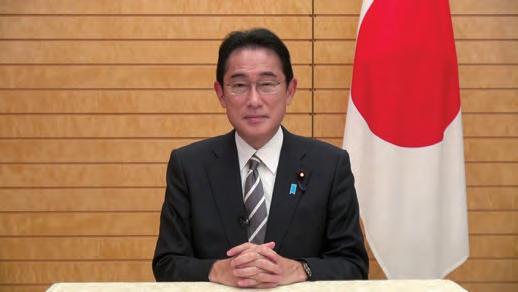
Plus, with the return of inflation, Japan’s ultra-rich businesses are now deploying their sizable reserves in R&D and forward planning. According to The Economist, the growth rate of planned capital investments is at its highest since the BOJ began collecting data in 1983. Crucially, they are also raising wages, fulfilling their half of the Bank of Japan’s winning formula for a ‘virtuous cycle of rising wages and rising prices.’ The timing could not be better for foreign businesses, many of which are looking to Japan as a source of inspiration for tackling the demographic issues they will soon face. Takeshi Seto, representative director and president of fitness leader Rizap, for one, notes: “Investors looking to experience markets and discover solutions they have never seen before will appreciate Japan. Finding local partners to work with here is easy. Equally, we, as Japanese companies, are keen to explore partnerships abroad.”
Wrapping up his New Year’s statement, Kishida declared that “Japan is heading into an era of great change.” Promising national security and economic prosperity, he took a moment to remind the world that “looking back on history, during times of enormous change... Japan has [always] taken hold of those trends, transforming that change into strength.”
leader at home. In 1974, it made significant contributions to the establishment of The Association of Japanese Consulting Engineers (AJCE), with one of its founders working as a director and chairman to establish Japan’s international standing in consultancy from the beginning.
Today, Pacific Consultants draws on a rich bank of experience, knowledge, and creativity to offer a unique array of services. These range from transport links and city planning to disaster prevention, project development, and R&D. Past achievements include project managing the complex redevelopment of Shibuya Station and its surrounding areas, a feat of engineering brilliance, the Jakarta Urban MRT project in Indonesia, and many award-winning designs.
“We’re expanding into various fields, primarily civil engineering, including PFI/PPP, digital transformation, Carbon Neutral, PM/CM, smart city development, and energy projects. Going forward, we aim to further expand our presence overseas,” explains Osamu Omoto, Pacific Consultants’ representative director and president. “Our present business amounts to JPY 61.5 billion, and 90% is domestic. Our target is JPY 120 billion by 2030, with domestic revenue accounting for 70% and the rest international.”
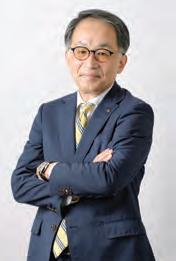
To help assert itself in European, US, Asian, and emerging markets, Pacific Consultants is keen on M&A opportunities and capital investment partners on new projects. Omoto reveals multiple US firms have contacted the company to help them enter the Japanese market, as well as Singaporean and Malaysian firms. For inbound investors, Pacific Consultants is providing support in construction projects of data centres and international schools. “Our knowledge about social infrastructure and the bureaucracy here means we’re highly sought-after. Plus, we cover topics such as digital transformation and project management.”
Above all, Pacific Consultants embodies the values that uphold not just the civil engineering industry but also Japan’s business community as a whole. For Omoto, companies like it tell a story that goes much deeper than Japan’s GDP. “Japan is always innovating to accommodate the challenges society faces, whether cherishing the environment or combating an ageing population by streamlining administrative services and infrastructure management in PPPs. Japanese people are among the top worldwide for embracing new technologies and we have a lot to offer the world when it comes to the likes of AI, automated driving, smart city concepts, and much more. Japan is also an extremely safe and resilient nation, thanks to its dual strength in autonomous distributed energy systems and renewable energy.”


According to the latest Global Innovation Index (GII), Japan is the 13th most innovative country in the world and the fourth most in its region. Dubbed a ‘world innovation leader’ in the 2023 GII, Japan ranks as part of a select few high-income countries that are performing above their development level, scoring highly on key parameters like business sophistication (11th globally), infrastructure (13th) and institutional environment (11th).
Japan’s retail industry is integral to its economic stability, contributing 10% of its GDP on average. Remarkably, the industry experienced no overall dip in annual sales during or after the COVID-19 pandemic, instead hitting a decadehigh JPY 154.4 trillion in sales in 2022, up on JPY 150.46 trillion the year before, according to Statista. Given Japan’s past experience with deflation, fixed-price stores – so-called 100-yen stores – have carved out a significant share of the market, surprising savvy shoppers with ingenious everyday items for them to ‘discover’ at unbeatable prices.
With 4,280 stores in Japan, Daiso Industries Co., Ltd. is the country’s most recognisable 100-yen retail chain and the biggest player in the market, selling everything from daily necessities, stationery, and hobby items to homeware, Japanese ‘dagashi’ snacks, and DIY supplies. Daiso is also the only Japanese fixed-price chain to translate its home success onto the world stage, boasting 967 overseas stores, including in Taiwan, Singapore, Thailand, Canada, the USA, the UAE, Brazil, India, and more.
Daiso initiated the 100-yen craze when it founded its first directly operated store in 1991. Previously, the company had traded as a street vendor before switching to the 100-yen format as a distributor in 1977. During the 1990s, Daiso gained widespread attention for its rapid nationwide expansion, opening as many as 60 stores in some months and surpassing the 1,000 stores milestone


in just eight years. In 2001, Daiso began its overseas expansion in Taiwan, where it was later voted as the number one brand chosen by consumers. By 2005, the company had consolidated a strong presence in 10 countries and regions outside Japan; by 2008, that figure had doubled to 20. Today, the company operates stores in all 47 prefectures of Japan and 25 countries worldwide, spanning a total of four continents, and averages almost 300 new stores each year.
According to the company’s president and representative director, Seiji Yano
– whose father founded Daiso – the reason for its popularity lies in its extensive product range, which he says offers customers an unforgettable “treasure hunt” adventure: “In Japan, we offer around 76,000 stock keeping units (SKUs), whilst our largest store carries 50,000 SKUs. The diversity and sheer quantity of products available in our stores makes for a truly unique shopping experience.”
Daiso designs about 90% of its products in-house, allowing it to develop an astonishing 1,200 new products every month to surprise its customers with. And despite low price tags, Daiso always keeps quality high. In FY22, three Daiso items were chosen for the prestigious ‘Good Design Award’ – sponsored by the Japan Institute of Design Procurement – marking the fourth time its products have

received the award.
Despite challenging economic conditions like a weak yen, Daiso has no plans to end its famed 100-yen price tag despite challenging externalities like a weaker yen. “We’re actively working to reduce costs while maintaining our commitment to the 100-yen flat price in all stores,” says Yano. Since becoming president in 2018, Mr. Yano is trying to attract more customers by investing in premium brands that feature products priced a 300-yen price. These include the playful and colourful homeware and fashion accessories concept brand, ‘THREEPPY,’ and ‘Standard Products,’ which offers a curated selection of stylish everyday ‘Made in Japan’ products.
But the main way Yano plans to reaffirm Daiso’s 100-yen model is through increased international expansion. Going forward, he intends to establish Daiso as a truly global brand. “Our aim is for 30% of all sales to be generated overseas by 2030, up on 10%, relying on three pillars: First, by establishing a dominant presence in Singapore and Taiwan; second, by expanding our focus on the USA, where we aim to increase our number of stores from 100 to 1,000; and third, by concentrating on our ‘store within a store’ model in Brazil.” Yano also foresees Daiso entering Mexico, and the EU.
As it expands globally, Daiso is keen to partner with distribution firms to help enhance its substantial domestic and worldwide distribution network –the company currently owns 25 domestic and worldwide distribution centres totalling 826,466 m2, as well as several global warehouses and factories. Additionally, Yano says the company is open to M&As: “We’ve bought several companies via M&As in the past. Our most important criterion is finding synergy – we’re looking for companies that can positively impact the business.”
Over the past two decades, Daiso has perfected the ‘discovery retail model’ and, in many ways, is a symbol of what Japan offers international investors: a treasure trove of opportunities. “Japan is known for producing high-quality products at reasonable prices and with the latest technology. This makes it an incredibly attractive investment. Our primary goal is to enhance people’s lives worldwide; we’re extremely proud of our role in bolstering Japan’s image,” says Yano.


Amidst the global drive to decarbonise, Japanese businesses are paving the way with world-class environmental research, market-leading sustainable technologies, and tactical ESG investing. According to Nikkei Asia, Japanese companies’ environmental spending is set to increaseby45.8%thisfiscalyear (ending in March), bolstered by thegovernment’slucrativegreen stimulus funds and the country’s escape from deflation. Japan’s shift towards a net-zero future represents a wealth of untapped potential for investors. “We believe mainstream ESG investors have not yet looked into this space,” says Morgan Stanley, “from a market perspective, global investors are still underweight in Japan.” Inbound investors will find Japan’s appetite for ESG investing reflected in a broader trend – the rapid creation of new business opportunities owing to a change in attitudes amongst the younger generation.
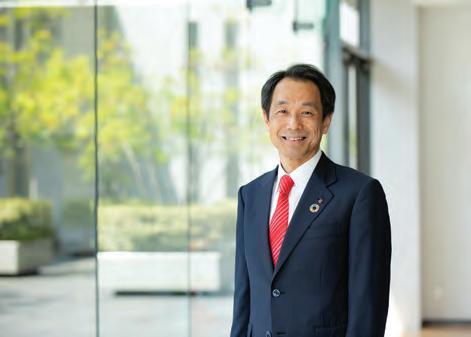
Mr. Hiroshi Shimizu President
or asset management, childcare, long-term care, or healthcare,” says Nippon Life’s president, Mr. Hiroshi Shimizu.
Since its founding, Nippon Life has provided reassurance and security to clients and local communities across Japan, emerging as an exemplary model of the ‘system of mutual aid’ that defines the traditional vision of insurance. In 1898, for example, Nippon Life became the first Japanese insurance firm to pledge and then pay dividends to policyholders, whilst two decades later, when the 1923 Great Kanto Earthquake struck, the company chose to pay all insurance claims immediately despite the government allowing deferred payments. Likewise, Nippon Life paid out JPY 32.2 billion in the aftermath of the 2011 Great East Japan Earthquake, placing regional revitalisation at the forefront of its business model. A similar response policy was implemented for the recent major earthquake.
Japan’s insurance industry is one of the world’s largest and most sophisticated. Given the country’s ageing population, life insurance accounts for the lion’s share of premiums written at almost USD 300 billion, according to Statista, with shifting demographics creating ever-increasing demand for new insurance products. Significantly, unlike other Asian countries, Japan’s insurance market is not dominated by foreign firms; instead, a crop of long-standing, highly trusted insurance firms have come to shape the market landscape, independently building relations with European and US insurers to suit their own customers’ needs. Over the past two decades, structural change and market liberalisation have left Japanese insurers in a powerful position, free to capture opportunities overseas and increase collaboration at home to consolidate their markets. According to a recent PWC report, Japanese insurers engaged in a total of 88 M&A transactions, inbound and domestically, between 2018-2022.
Celebrating its 135 anniversary this July, Nippon Life Insurance Company (Nippon Life) is Japan’s largest life insurance firm, giving peace of mind to 15 million people through a wide variety of well-being services. Besides its network of 14domestic insurance companies, Nippon Life operates a JPY 87.6 trillion asset management business comprising 50 subsidiaries spanning the Asia-Pacific region.
“Our vision is to deliver a variety of exceptional services to our customers throughout their lives, whether insurance
Having cemented its reputation in rebuilding Japan, Nippon Lifeisnowhelpingtoresolvesomeofitsbiggestsocialchallenges, such as an ageing population, as well as meet the increasingly diversified needs of a digitalised, technologically advanced society. Through a powerful portfolio of integrated services and products aimed at balancing the concerns of Japan’s older generations with the nurturing of its newer ones, Nippon Life hopes to make its next century as fruitful as its last. The company offers both conventional life-insurance products like ‘Mirai no Katachi,’ which covers death, serious disease, nursing care, and medical risks, as well as innovative healthcare services such as dementia and diabetes prevention. Together with numerous hit products and approximately 90,000 employees supporting 15 million customers, Nippon Life is steadily positioning itself as the premier insurer in the era of the 100-year life span.
While emerging trends such as digitalisation and advanced medical care have led the company to launch new products and services, one of the biggest areas of improvement has been to deepen its customer-orientated business model. Recent initiatives include specialised employee training for online face-to-face consultations as well as the construction of new distribution channels to help the company reach more potential customers across Japan. “We have about 50,000 salespeople in the company, and it’s our firm belief that in-person or face-to-face consulting provides our customers the most value and peace of mind. Through the economic security we deliver, our customers
have the space to live their lives to the fullest and jump on new opportunities – it’s an ongoing mission,” says Mr. Shimizu.
Mr. Shimizu also highlights Nippon Life’s leadership role as Japan’s largest institutional investor -inmanagingitscustomers’ insurance premiums and promoting ESG-themed investmentandfinance.The company launched its asset management business’ Nissay Asset Management’ thirty years ago – before which it conducted its own operations – and is now responsible for assets worth a staggering 6% of Japan’s economy. Over time, it has perfected the ALM (Asset/liability management) approach, ensuring it can uphold the long-term promises of its life insurance policies to policyholders. By investing primarily in yen-denominated fixed-income instruments – balanced against higher-risk assets like foreign securities – Nippon Life has secured a track record of stable returns and reliable dividends, leveraging its global investment structure to keep pace with a rapidly changing market environment and continually create value for its customers.

Nippon Life’s asset management business is also part of the company’s mid-term management plan – ‘Going Beyond.’
According to Mr. Shimizu, the plan also includes other important growth strategies: cultivating the domestic insurance market wider and more deeply and, following that, pursuing overseas growth. Nippon Life also hopes to expand its childcare and long-term care services – an area in which Mr. Shimizu reveals it recently scored an “epoch-making” deal. Mr. Shimizu notes: “In addition to synergies between overseas and Japanese business, we also want to create synergies between businesses, encompassing insurance, childcare, healthcare, and asset management as well. We hope to supply products between these businesses mutually.”
Given its domestic dominance as the leading life insurer and institutional investor, Nippon Life is optimistic it can compete with the giants of the global insurance industry. So far, the company has cut its teeth in diverse markets such as the USA, Australia, India, China, Thailand, and Indonesia, and Mr. Shimizu believes its impressive track record of M&As and joint venture partnerships will help it seize the opportunity. “Currently, we have a joint venture in Thailand with Bangkok Bank and another with National Bank Australia, whilst domestically, we’ve built partnershipswithseveralcompanies,includingmanufacturers,to launch preventative healthcare services. We’re actively seeking partnerships in insurance and asset management, whether joint ventures or M&As, to help expand our global footprint.”
Elsewhere, Nippon Life is paving the way for Japan’s decarbonisation effort as a champion of ESG investing and
financing. Since 2017, the company has invested over JPY 2.3 trillion (as of September 2023) via ESG-themed investing and financing, which it hopes to increase to JPY 5 trillion by the end of this decade. In recognition of its work, Nippon Life was chosen as the lead sponsor for the 2023 United Nations Principles for Responsible Investment (PRI) Conference, one of the world’s largest ESG investment events. Some of Nippon Life’s more localised initiatives include the ‘Nissay Forest’ fellowship, a voluntary group begun in 1992, which has since seen over 40,000 employees participate and 1.38 million trees planted. Nippon Life’s own decarbonisation targets include a commitment to reducing total emissions by 45% by 2030 (compared to 2010 levels) and emissions per investment by 49% (compared to 2020 levels).
Nippon Life’s commitment to creating society-wide support frameworks, from childcare and healthcare to sustainability, embodies its overall message of coexistence, prosperity, and mutualism – to ‘enhance today for your future.’ It also chimes with the social and economic changes Japan is undergoing as it blossoms into the world’s favourite post-pandemic investment destination. “If we have a bright future, Japan will be a country that continues to attract investment. Young people are responsible for creating this future. I recently heard a statistic that between 20-30% of graduates from Japan’s top universities choose to launch a startup rather than seek employment in a large company. They’re not afraid to make mistakes and be bold; they have an entirely different outlook from previous generations. Over the next decade, I believe this trend will inspire a new brand of Japanese businesses and ensure Japan remains attractive to foreign investors for years to come.”


Japan is at a turning point”, the Organisation for Economic Cooperation and Development, a grouping of affluent countries, noted in a January 2024 survey of the country’s economy. The OECD noted that the Asian giant is on track to meet its 2% inflation target, while rising wages, government subsidies, and a new fiscal package will help drive growth. It also highlighted Japan’s efforts to meet its climate goals through green investment, innovation, and carbon pricing.
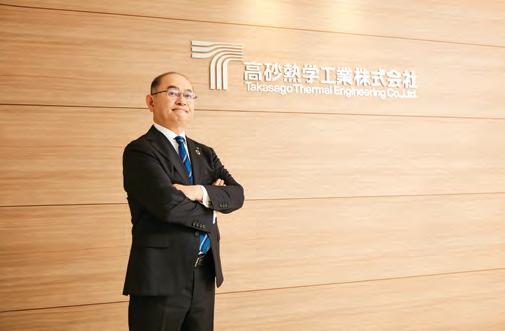
Kazuhito Kojima President
It is little surprise that Japan, one of the world’s most innovative and knowledge-intensive economies, is taking a global lead in developing hydrogen technology. In 2023, the government announced a revised hydrogen strategy that foresees investment of more than $107bn over the next 15 years to boost its hydrogen supply and support the shift to a low-carbon economy. The country aims to boost supply to 12m tonnes in 2040 and 20m tonnes in 2050, from 2m tonnes at present. The strategy foresees both the public and private sector participating in developing the sector, and for Japanese companies to boost global electrolyser capacity.
Takasago Thermal Engineering is a leader in the field of HVAC in Japan. The company celebrated its 100th anniversary last year, the milestone coming at a transformational time for the company as it shifts towards a focus on clean energy, including a growing hydrogen business.
“We have the spirit of a venture company,” says Kazuhito Kojima, Takasago Thermal Engineering’s president. “Initially, we focused on air conditioning and ventilation in a time when Japan lacked air conditioners. The first president coined our name, translating it as “air harmony” to capture the essence of what we do. Over the years, our growth paralleled Japanese society’s development. When I became president in 2020, I decided to rebrand the company as an environmental creator. So far, we’ve focused on creating air conditioning systems for buildings, but moving forward, our goal is to establish a global network for air conditioning systems with an emphasis on environmentally friendly energy.”
Around the time of World War I, the company began with providing humidity control for the textile industry – a crucial advance for the industry in Japan, in which Takasago Thermal Engineering was first in the business. In the 1960s, Takasago Thermal Engineering ventured into creating clean rooms for the semiconductor industry, supplying and collaborating with some of the world’s leading technology companies.
Another major milestone came in the 1970s, when Takasago Thermal Engineering started supplying air-conditioning systems for skyscrapers and other major buildings – installing its units in some of the Tokyo’s most iconic buildings, including the World Trade Centre and the Tokyo Dome. The latter, an indoor stadium, has an airsupported roof, a flexible fibreglass membrane supported by slightly
pressurising the air inside the stadium with independent blowers. The company installed air conditioning equipment in the dome space with a pneumatic structure. It is little surprise that this hugely innovative business has more than 750 patents – and counting. The company’s TCR-SWIT solution, an air-conditioning system for clean rooms in semiconductor manufacturing, holds several patents. Clean rooms require extremely precise, consistent control of temperature, humidity, and of course cleanliness. TCRSWIT applies SWIT, a swirl-inducing type stratified air-conditioning system that cleans and maintains the temperature manufacturing environments while saving energy and reducing CO2 emissions.
“In essence, our company has evolved with Japanese society, pioneering new air conditioning systems,” says Kojima. “Despite the perception of us as construction company, our core identity lies in engineering. We’re not just creators; we’re entrepreneurs, evident in our development of hydrogen production in 1996.”
Hydrogen is only a small part of Takasago Thermal Engineering’s business at present, but the company plans to expand its activities in this growing area over the coming years. The company is a corporate partner of ispace Inc.’s HAKUTO-R commercial lunar exploration program. Founded in 2010 with the vision “Expand our Planet. Expand our Future”, ispace specialises in designing and building lunar landers and rovers. The company aims to extend the sphere of human life into space and create a sustainable world by providing high-frequency, low-cost transportation services to the Moon. The next ispace mission is currently scheduled to be launched in 2024. As part of the mission, the lunar lander will carry Takasago Thermal Engineering’s hydrogen generator system on board, aiming to be the first to generate hydrogen on the moon. Takasago Thermal Engineering is taking on the challenge of pioneering new hydrogen technology to showcase its innovation to the world. Takasago Thermal Engineering already has an efficient hydrogen manufacturing process, using less energy than most, and it sees hydrogen as the key to its global future, putting green innovation at the forefront of its strategy.
“Historically, as a engineering company, we’ve grown alongside the development of Japanese society,” says Kojima. “However, our current focus is on the global environment. We aim to contribute to the prosperity of the global society by creating a highly efficient and environmentally friendly system. We are proud to have technology that enables us to provide our customers with the best quality products and services. In the carbon neutrality market, we will aim to create new business that includes investment in the creation of, and operations related to, renewable energy .”
Having grown hand-in-hand with Japanese society, Takasago Thermal Engineering now aims to evolve with global society as it
embraces clean energy technology. It is seeking to drive improvements in and implement environmental technologies that can realise a decarbonised, recycling-oriented society, while strengthening the environment for innovation through a more open innovation process. The company is eyeing expansion in South East Asia in particular. It already has deep roots in the region - this year marks the 50th anniversary of Takasago Thermal Engineering opening its business in Singapore, where it is established as a leading player in air conditioning for buildings. It also has group companies in China, Hong Kong, Thailand, Malaysia, Vietnam, India, and Mexico and aims to expand its business into carbon-neutral initiatives, applying its innovative solutions in these burgeoning markets.

To this end, it is actively seeking partners, particularly in the carbon neutrality, including the hydrogen field. It has already evaluated potential acquisitions in South East Asia. Takasago Thermal Engineering plans to allocate expenses for mergers and acquisitions in its cash allocation plan, and leverages its long experience of forming partnerships with some of the world’s leading technology companies.
“Over the past century, even though we transitioned from being mere construction company to engineers, we’ve played a leading role

in supporting the foundations of both industry and society. ,” says Kojima. “Presently, we continue to collaborate with a wide range of trusted manufacturers, including several that are household names globally. As a company, we boast a strong network and teamwork that we proudly showcase to the rest of the world. We believe it’s the opportune moment to highlight our capabilities to the broader Japan team. Our technology is not just about specifications; it’s a constant introspection of what we can do next and how we can continually improve.”
Takasago Thermal Engineering’s long history of success, innovative hydrogen technology, and ambitious expansion plans also make it an enticing prospect for investors. The Tokyo-listed company has seen its share price soar by nearly 90% in the year to mid-January 2024, and boasts assets of more than JPY300bn. Takasago Thermal Engineering’s medium-term management plan is the first phase of the
company’s long-term strategy leading to 2040, and has set the target of ordinary income of JPY20bn and consolidated ROE of approximately 10% by 2026. By 2040, it aims to make the carbon neutrality business a major pillar of earnings to achieve consolidated ordinary income of JPY40bn, more than double its JPY16.6bn performance in the 2022 financial year. Carbon neutrality is one of four business domains the company is focusing on in its work in the built environment and the broader global environment, along with the construction business, equipment maintenance and management, and environmental equipment manufacturing and sales. All are linked by Takasago Thermal Engineering’s commitment to digital transformation. Underlining its commitment to people at the heart of innovation, the company has pledged to increase its investment in human capital by JPY10bn year on year –including employee training, improving working environment, increasing wages, and hiring new employees. Indeed, recruitment is one of its most important initiatives for the coming four years.
The company has an excellent track record in achieving the goals it sets. Its GReeN PR!DE100 management plan that ran from FY2014 to FY2023, it increased its ordinary income from JPY9.1bn to JPY16.6bn, as well as achieving a range of M&A transactions aimed at expanding and stabilising its international business revenue, and invested in new businesses utilising environmental technologies that will stand it in good stead for the next phase of its development. Between FY2013 and FY2022, it raised its return on equity from 4.4% to 8.9%.
Takasago Thermal Engineering is building its international presence in the decarbonisation sector, while it remains rooted in the innovative, skill-intensive, industrious culture of its homeland.
“Why Japan?,” says Kojima. “In one word: Trust. The Japanese commitment to custom product making is unparalleled globally. Exceeding expectations is hard-wired into Japanese values. We’re proud to promote Japan as an investment destination, and want to continue to strengthen the Japanese brand globally.”


Major Japanese stock indices have reached their highest levels in decades and foreign investment is growing, according to a recent report by investment bank Goldman Sachs. The bank noted that these trends are supported by domestic macroeconomic growth, a price breakout after years of deflation, and accelerated corporate governance reform. It concluded that the outlook for the Asian giant is more favourable than it has been in the past, benefitting active investors in particular. Indeed, the bank noted “a meaningful shift in investor sentiment”. It identified particular benefits for Japanese companies with ample foreign exposure, given the exchange rate situation, with the yen trading at levels not seen for nearly two decades.
In this affluent, health-conscious society, the gyms, health and fitness club market is large and flourishing, generating estimated revenue of $4bn in 2021, making it by some way the largest in the Asia Pacific region, accounting for more than a quarter of overall regional market size, according to MarketLine. The industry is growing quickly, with the number of active sports participants in Japan recently hitting an all-time high. Gym membership is relatively low compared to other developed markets including the US, UK, and Australia – showing huge potential for growth.
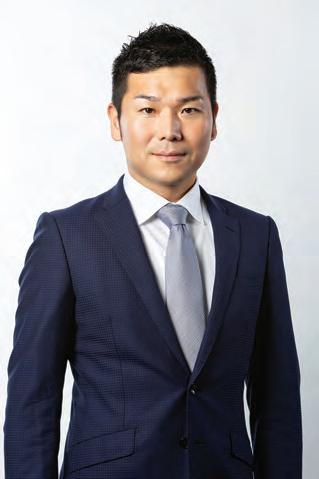
Takeshi Seto President and Representative Director
retail store chain including entertainment goods, kitchen appliances, home interior goods, travel goods and apparel; and other investing group companies.
Within the self-actualization business, RIZAP supports people’s desire to change, aiding and harnessing their efforts to expand their personal potential, build confidence, and shape a better future. Its core message is “people can change”, and it continuously strives to provide goods and services that match that principle, providing true value and avoiding selling mass-produced and unsuitable products.
RIZAP is committed the principle that everyone, regardless of age or status, has an idea of their ideal self – and that RIZAP can help customers meet those goals. Supporting customers in tackling their challenges has in turn helped strengthen the company itself, and underlines its relentless focus on delivery.
RIZAP Group has become a leader in this thriving sector, with over 1,000 gyms across Japan as well as in Los Angeles, Beijing, Shanghai, Hong Kong and Taiwan.
“Our business model is to create gyms that are in a way like Japanese convenience stores, with a low barrier to entry due to convenience and low prices,” says Takeshi Seto, the representative director and president of RIZAP Group. “We aim to attract clients including people who have never trained in the past.”
Costs are kept low partly by having gyms without staff – support is provided via mobile technology. It is a successful model, and the group is trying to expand in Asian markets in particular, and is keen on establishing partnerships with local investors as it grows internationally, marrying its unique business proposition with domestic capital and expertise.
RIZAP aims to be no less than the number one global brand in the self-actualization industry – a sector it sees as committed to making lives “healthier and brighter”. To this end, it aims to continue providing products and services that attract people around the world. The business is clearly aligned with the essential human desire to live happier, more radiant lives, and it is a model that has generated considerable success, with brands not just in the gym business but a beauty and health-food e-commerce company; a
“We’ve reached numerous milestones, making it challenging to pinpoint a single one,” says Seto. “However, a source of immense pride for us is our resilience during the COVID-19 pandemic. Initially, RIZAP gained recognition as a personal trainer gym, where our trainers made explicit commitments to their trainees. Clients were assured visible results within the first two months of training, with a full refund for their gym membership fee if expectations were not met. Our distinguishing factor lies in our unwavering commitment to delivering tangible results. To achieve these outcomes, we utilise a wide array of data to enhance individuals’ health and fitness. Initially, we exclusively offered private training, but we’ve expanded our offerings to make our services more accessible. When COVID-19 made in-person training challenging, we innovated by introducing chocoZAP, a fully digitalised gym membership service.”
ChocoZAP has proved such a success that the company is rolling it out internationally, banking on its universal appeal. One year after its launch in July 2022, annual sales reached JPY20bn, with 1,010,000 members and 1,160 gyms engaged by November 2023 – from an initial 77 gyms, and well ahead of target. Its consumer base has diversified at the same time, with a corporate programme involving 1800 companies with 280,000 employees, as well as partnerships with over 30 local governments. The company aims to open 2000 chocoZAP gyms over by March 2026. ChocoZAP is already Japan’s largest fitness brand by members.
“Pre-pandemic, much of our service delivery was in-person, but we’ve successfully transitioned to a digital model,” says Seto. “Our clients have come to appreciate our high-quality services at competitive prices. We’ve amassed unique expertise in this sector, and our method empowers clients to apply our approach to their daily lives, continually improving their health. Our online gym subscription, including chocoZAP, stands out as a unique offering
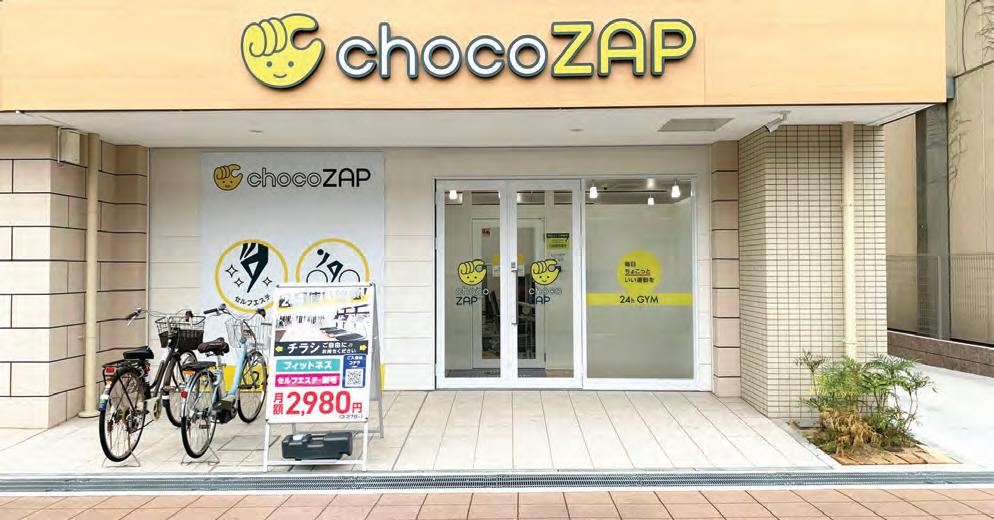
globally, not limited to Japan alone. With chocoZAP, we aim to cater to newcomers to fitness who seek affordable health solutions. In terms of the fitness market, the US and Japan differ in their everyday approach. We’re exploring innovative strategies to make fitness more accessible.”
ChocoZAP gyms are all directly-managed, which provides flexibility in gym management and high profitability. RIZAP’s strategy is to attract customers using only advertising costs, which are easier to control, and with advertising order placements for only up to two months, to prevent costs from becoming fixed. From April 2023, the gyms were advertised in television commercials featuring actor Ken Matsudaira, emphasising the opportunities

for a quick work-out at chocoZAP gyms, and the ease of signing up with a smartphone. As the chocoZAP offering develops, it will increasingly deploy AI and big data to deliver the best for its clients. Its app already offers round-the clock support to members, with everything from matching them to the best trainers, to step counting, body temperature measurement, and food records. The company is now rolling out AI and repast management functions, which will give AI-based instructions about nutrition.
The gyms are also operated in an agile manner, with negotiations with landlords to ensure that restrictions on early termination are eased. The opening strategy will follow a comprehensive analysis of recovering demand post-pandemic, the operating cash flow of existing gyms, and the funding situation, among other factors.
“While fitness remains our primary focus, we’ve observed a
shift in people’s attitudes toward health and well-being postpandemic,” says Seto. “Our target audience comprises individuals willing to invest in their health, happiness, and beauty. In Japan, we’ve championed the concept of 24-hour convenience stores for consumer goods, but there’s currently no equivalent for gyms. We’re exploring the possibility of offering affordable 24-hour gym services to enable continued investment in health and self-actualization. This is a concept we’re actively exploring.”
RIZAP’s diverse business makes it an excellent choice for investors looking for exposure to the Japanese market, the world’s third-biggest economy. In the financial year ending March 2023, the group achieved net sales of JPY160bn. It is currently investing heavily upfront in the expansion of chocoZAP, with JPY7.7bn invested in the last financial year alone, but expects to enter the “profit growth” phase in 2024, with the medium-term goal of achieving operating profit of JPY30bn in the financial year ending March 2026. ChocoZAP gyms are already turning a profit. The company’s debt is expected to reach a peak in the current financial year, and decline from then on, while its equity ratio should also climb due to chocoZAP’s growing profitability and the repayment of debt.
RIZAP Group has become a market leader with its focus on supporting its clients in their desire to live better lives. In its innovative, people-oriented approach, it reflects the values and business principles of Japan as a nation.
“Looking ahead, two global challenges will be labour shortages and aging populations,” says Seto. “Japan is already grappling with these issues, necessitating improvements in productivity for companies to survive. Health is a universal concern, and our motto revolves around challenging the uncharted. We aim to ensure the health and fulfilment of the Japanese population, ultimately contributing to increased societal happiness. We welcome foreign companies to invest in Japan and explore our country’s unique attributes.”


After years of deflation, Japan is experiencing its fastest price growth in over three decades and has “convincing emerged from three decades of stagnation,” according to Morgan Stanley. On the level of businesses and people, expenditure and consumption trends indicate the long-awaited reversal of a ‘deflationary mindset.’
Younger people, especially, are more willing to accept price increases without changing their consumer behaviour, enabling businesses to be more assertive in price-setting and capital spending, a recent report by Lazard Asset Management found. In short, 2024 is the year Japan will finally be able to flex its economic muscle. For inbound businesses, Japan’s full health economy is the perfect backdrop to the country’s advantages as an innovation and logistics leader. Japan’s transport and logistics capabilities rank fourth in the world and first in the G7, according to the Japan External Trade Organization (JETRO), placing it first globally for rail services, third for airport connectivity, and fifth for seaport services.
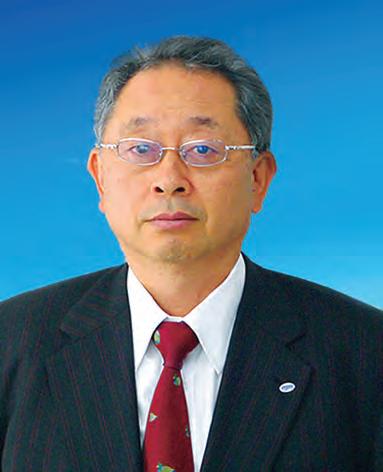
Atsuhiro Inaba CEO
Japan is one of the most pet-obsessed countries in the world. In 2021, Japan was the only country in the world where pets outnumbered children, according to the Japan Pet Food Association. Many childless households, particularly in urban areas, consider pet ownership an alternative to raising a child and are willing to spoil their pets with premium food and treats. According to Euromonitor, sales within Japan’s pet food market, which mainly comprises cat and dog food, are forecast to grow by about JPY 6.7 billion in 2024, whilst Statista projects market revenue to register a CAGR of 16.49% between 20232028.
Drawing on over 65 years of experience in the pet food industry, Inaba Foods has created some of Japan’s most beloved cat food brands, notably INABA and CIAO, and is synonymous worldwide with the best in quality. Inaba Foods prides itself on creating delicious, human-grade pet food products and occupies a staggering 70% share of the global market for premium cat treats.
Inaba Foods is one of Japan’s oldest family-owned and operated companies. Founded in 1805 in Shizuoka, on the
south coast of Japan, by father and son duo Yokichi and Kasuke Inaba, the company’s illustrious history spans eight generations of the Inaba family, all the way to the current president and CEO, Atsuhiro Inaba. Inaba Foods started as a small marine fish products business until the third-generation owner, Yoshizo Inaba, commercialised its production of dried bonito – an essential ingredient in Japanese cuisine once flaked (katsuobushi) – during the end of the Edo and early Meiji periods. By the fifth generation in the 1930s, Inaba Foods operated its own canning factory, an asset that helped usher in the ‘golden age of exports’ the company experienced post-WW2.
One of Inaba Food’s biggest achievements during the ‘golden age’ was the launch of Inaba Light Tuna – canned yellowfin tuna – which marked a world first in the canned fish industry. At the time, processing yellowfin tuna was rarely attempted for mass production, but Inaba’s success was a revelation. Inaba Foods went on to launch its now iconic Inaba Light Tuna Flakes product, taking the domestic light tuna market by storm in the 1960s and propelling it to industry leader. This was followed in the 1980s by the company’s timely entry into health-conscious fish products, such as low-salt and non-oil varieties of canned tuna, which helped the company increase its total sales-to-date to JPY 120 billion by 1992.
By the time it hit that milestone figure, Inaba Foods’ pet food business, founded back in 1948, was experiencing its own exceptional run of success. The company had just launched its cat food brand CIAO, based on the concept of ‘Freshness and Affection,’ which became an instant hit – it remains the number one premium cat food in Japan, winning a National Brand of the Year award at the prestigious World Branding Awards in 2018. Subsequently, in 1997, Inaba Foods established INABA PETFOOD, paving the way for an ever-expanding, global pet food business, notably establishing a production base in Thailand.
Today, pet food dominates Inaba Foods’ production, explains Atsuhiro: “Three years ago, it was a 50-50 split between pet food and human food production. Now it’s an 80-20 split. Our pet food is mainly focused on cats, but we also cater to dogs.” Atsuhiro himself had a hand in the shift. In 2012, he invented the Churu lickable cat treat, a grain-free,

non-additive, high-moisture treat that comes in a tube and is designed for hand feeding to help cat owners bond with their pets. “So far, dogs have been considered a part of the family, and cats not as much. If you call a dog, it will come, but cats will not. So, we thought about how to make them respond to calls and achieved that by making tasty treats that cats love,” says Atsuhiro.
Churu treats can be found in pet stores all over the world and are packed with high-quality ingredients to help cats thrive. “All our pet food is human grade; it’s something we truly care about. Our cat treats are the only ones in the world that humans can safely eat,” says Atsuhiro. By carving out a niche in a relatively open market, INABA’s products have experienced rapid success, explains Atsuhiro: “If we ventured into the main meal segment for cat food, we’d be up against a lot of competition. But with cat treats and mixers, which can be served between meals, the competition is much lower – it’s a completely new product. Our Churu product is expanding incredibly fast at the moment, and we’ve already hit all our financial targets for this fiscal year.”
INABA also leads the way in terms of innovation, collaborating with professors from the University of Tokyo to help develop its products. Cats naturally have a lower thirst drive than dogs, which means they are prone to kidney disease as they age, particularly when fed an exclusively dry food diet. All INABA treats are, therefore, tailored to provide as much hydration as possible to ensure cats enjoy a balanced diet. “The moisture content of our food is 91%. Dogs have a habit of drinking water, but cats don’t. This food will be able to resolve that. With this product, cats will be healthier. Our competitors can’t provide the same product as us. We have a huge passion for what we do; it’s what fuels our business,” says Atsuhiro. In 2022, INABA ranked as the world’s number-one brand of wet cat treats and mixers in terms of retail sales value, according to Euromonitor International. With INABA PETFOODS now the undisputed global industry leader, Inaba
Foods is keen to continue expanding the business under its motto, ‘Delighting Cats Around the World.’ So far, the company owns and operates two factories out of Thailand, including the world’s largest wet food factory, giving it a base to export to China. Two further Thai facilities are scheduled to be completed, the first – a dry food factory – this year, the second in 2026, and the company also has plans to expand production to Atlanta, USA, and Brazil, as well as to the UK.
Atsuhiro believes Inaba Foods is the ideal candidate for global expansion: “We’re not limited by anything – we can go anywhere in the world. Normally, companies are limited to market areas, but in our case, that’s not an issue; pet ownership is global. We’re doubling our sales every year and planning to increase our employee numbers as fast as possible to accommodate our strong growth. Whilst we want to keep our know-how a secret, we are open to partnering with distributors, retailers, or wholesalers to help us enter new markets.” Inaba Foods is also looking to increase its dog food sales, offering more opportunities to prospective partners. At present, INABA PETFOOD’s domestic market share for dog food is two and a half times bigger than its next competitor, and Atsuhiro is confident it can reach 15% and emulate the success of its cat food brands.
From domestic light tuna pioneer to global pet food heavyweight, Inaba Foods’ journey stretches over two centuries and five continents, telling the remarkable story of one family’s drive to bring Japanese culture and tradition to the world. Above all, it epitomises the honed skills and strengths that have allowed Japanese businesses to outstay their global peers and come out on top time and time again.
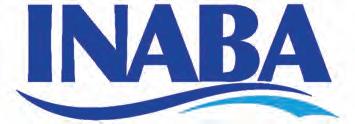

Last year, Japan’s stock market reached its highest peak in over three decades. This year, observers are optimistic it could go even further. Lazard Asset Management, for one, says now “is an excellent opportunity for investors to re-evaluate their portfolio weightings to Japanese equities, considering the extremely positive longer-term structural changes underway.” One such change lies in how Japanese businesses are being run. A new generation of C-Suite innovators is challenging the status quo and helping to undo decades of entrenched underperformance. Their efforts helped Japan move five places to second on the Asian Corporate Governance Association’s 2023 ranking. Courage is also back in style across the nation’s boardrooms. Management buyouts – where a company’s management team purchases its assets –are accelerating at their fastest pace since the 2008 crisis – so much so that the Financial Times estimates they could be the biggest driver of deals in the coming years.
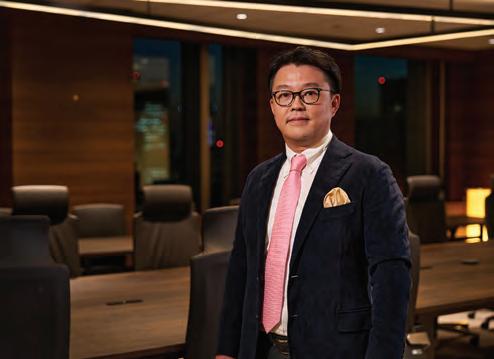
Tsuyoshi Komachi President
Another reason to invest in Japan is the country’s low-interest rate environment. One of the simplest ways to take advantage is through real estate. Just over 10% of Japan’s GDP is in real estate, according to Statista, and the market is currently experiencing what the CBRE has declared a ‘golden period.’ Over the first six months of 2023, international investors ploughed USD 14.5 billion into the market, according to Jones Lang LaSalle (JLL). That equates to 12% of the total investment received over the entire decade preceding it. Real estate prices remain the highest in the Tokyo Metropolitan Area – Tokyo, Saitama, Chiba, and Kanagawa – which enjoys a constant stream of redevelopment projects and booming tourism. Last year, JLL named Tokyo as the second-most investible real estate market in the world, proclaiming Japan to be “one of the few markets amongst advanced nations where one can expect a return on real estate investments.”
Founded in 1992, Raysum made its fortune buying up ‘bad assets’ during the downfall of Japan’s ‘bubble economy’ and is now one of the country’s most highly sought-after real estate players. As of September 2023, Raysum’s total assets amounted to JPY 121.22 billion.
“Our mission is simple: to create value for customers,” says the company’s President, Tsuyoshi Komachi. “To do that, we focus on three things: long-term security, high liquidity, and the fact that half our customers are individuals. Many of the properties
we handle are family assets, and they need rarity as precious family treasures, so we’re very careful about how we work.”
Raysum maintains this level of care across its three business segments: real estate purchasing and selling, real estate building management, and investing in emerging industries such as advanced medical care and gas-powered generators focusing on emergency use. Purchasing and selling accounts for about 90% of Raysum’s net sales and is where the company creates the most value. At each stage, Raysum’s unique skillset allows it to work faster than its competitors, whether turning buildings lacking in character into multi-floor commercial spaces or new condominiums for the mass market into luxury and premium residential property.
The company conducts most of its business in the Tokyo Metropolitan Area, where it mainly focuses on older mediumsized buildings and uses its stable relations within the finance industry to gain funding for difficult projects. “Other real estate players generally don’t like to invest in buildings that are 20 years old or more,” explains Komachi, “I wouldn’t call us niche, but others don’t buy medium-sized or older buildings. We’re one of the few firms operating in that segment.”
Raysum follows a simple strategy – taking low-liquid acquisitions and converting them into highly liquid assets. More specifically, the company seeks out real estate with an eye on future trends, rarity, and improving NOI. Additionally, Raysum’s close ties to contractors give it access to complex building and development methods, allowing it to deal in a wide range of asset classes – from JPY 1 billion to 10 billion or more. Currently, about 70% of the properties Raysum sells are for individual investors (by transaction value base). The company’s sales for corporate investors and institutional investors are increasing as the size of real estate Raysum handles gets larger.
To widen its customer base, Raysum launched RAYEX, which sells small-lot properties around the JPY 50 million mark. Raysum handles everything from borrowing to leveraging to give peace of mind to its investors – in addition to attractive yields, twiceyearly dividends, and prospective capital gains upon sale. Phase one, which launched at the end of 2021, sold out immediately, and phase two also sold out, whilst phase three just launched. RAYEX also encourages investment into Raysum’s larger assets,
as investors who get a taste of the company’s returns often come back for more.
An easier way to cash in on Raysum’s success is to invest in the company’s stock. From the start of 2020 to the start of 2024, Raysum’s stock price jumped 429.54%. In the process, the company became one of Japan’s top ten highest dividend stocks. Yet, there is still much more room for growth. In FY23/3, Raysum’s revenue from purchasing and selling real estate stood at JPY 61.4 billion. Meanwhile, in 2020, the value of transactions across the whole market stood at JPY 4.363 trillion. Raysum has already made a promising start to catch up with some of the difference – and with plenty of success: The value of net sales in Q2 of this fiscal year improved by 105.6% year-over-year (YOY), gross profit by 92.9%, and ordinary profit by 196.1%.


Raysum is active in what is arguably the fastest-growing segment in Japanese real estate – older small and medium-sized buildings. The market for leased office space is worth more than JPY 20 trillion, and offices under 16,500 m2 (5,000 tsubo) in buildings over 20 years old account for over 80% of the office space in Tokyo’s five central wards. In total, more than 5,000 properties fit this category, and the supply of old buildings is increasing over time. To put it into perspective, Raysum conducts around JPY 100 billion worth of
attractiveness to its unrivalled ability to position itself at the start of emerging trends. He recalls how, in the early years of the company, Raysum’s bet on ‘bad assets’ piqued the interest of a global commodity giant. “They were the first investors who expressed interest in us. This was before we went public in 2001, but they found out about our strategy and contacted us. Most Japanese companies hesitated to invest in these assets, but we didn’t, and they came to Japan to check out the situation.” It remains a striking example of just how ahead of the curve Raysum was compared to others.
Two decades later, Raysum is in a position to take advantage of these opportunities. And Komachi believes now is the time to partner up. He is particularly keen on partnerships with medical firms despite the segment being Raysum’s smallest business venture. “We’re open to all kinds of relationships. It’s evident that Japan is experiencing a super-ageing society, and I believe we have to do something about it. Japan also experiences lots of medical tourism from wealthy older people from China, Hong Kong, and Taiwan, and our medication is highly advanced.”

business each year with just 30 or so properties. As the most established player in this field, Raysum is poised to capitalise on the segment’s upward trajectory. “We’re always thinking of the future and where we’re going. Innovation is everything. But we’re also realistic – if you think too far ahead, the future becomes blurred. By being just one step ahead, we can continue to steadily add value for customers,” explains Komachi. Indeed, Komachi credits much of Raysum’s investment
Komachi also reveals that Raysum has hired a world-famous doctor as the adviser for the company’s medical department. The opportunity is huge, he says: “When we first ventured into medical care six years ago, many people said we shouldn’t touch it. They said it was too complicated and overly regulated by the government. But they didn’t see the gaps in the market. For example, the number of beds in hospitals in Japan might be over 100 times more than necessary, but there still aren’t enough specialised beds. We need a balance. The market is growing, and I believe we will be successful.”
Raysum has always remained one step ahead of everybody else. Above all, its courage to go against the grain speaks to the broader shift now taking place in businesses across the country – and the riches they could earn investors in doing so.


With the stars aligning in 2023 to unleash a multi-decadedefining performance across Japan’s equity market, observers around the world believe 2024 will be no different. Goldman Sachs, for instance, forecasts the TOPIX index – which tracks domestic companies listed on the Prime division of the Tokyo Stock Exchange (TSE) – to rally by 13% by the end of the year, “boosted by solid global economic growth and stock market reform.” Beginning in 2015 with a new corporate governance code for ‘growth-orientated governance,’ recent announcements by the government and TSE to reform the stock market have put Japan’s listed companies under more pressure to adapt to international standards, increase their valuations, and enhance their ROE. So far, their response has been incredibly rewarding for shareholders: According to BlackRock, share buybacks and dividends amounted to USD 200 million in 2022, more than double the figure posted in 2014.
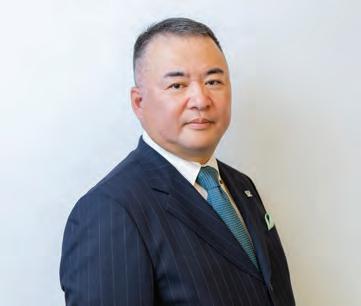
Kenji Oyama President and CEO
Broadleaf’s offering can be divided into three market-leading services: cloud-based infrastructure, IT solutions, and Operations Analysis Software. In terms of cloud computing, Broadleaf streamlines its clients’ IT innovations through a unique cloudbased digital business platform and exchanging data. Designed to integrate high-volume data gathering, highspeed search and analysis, as well as operational API services, Broadleaf’s cloud platform enables businesses across the automotive industry chain to implement technologies such as artificial intelligence and capture growth opportunities from big data.
Likewise, Broadleaf’s original IT solutions are geared towards making rapid improvements in its clients’ business management, including customs, sales, and inventory management systems. As a one-stop service, Broadleaf covers everything from development and sales to installation and deployment.
Amidst Japan’s shrinking population, one of the best-performing and most secure investments is the country’s automotive industry. Whilst the average household size has decreased, the number of households – and passenger-type vehicles – continues to grow. As such, revenue in adjacent sectors like the automotive aftermarket – worth over JPY 20 trillion, according to Statista –and the maintenance & repair industry has risen steadily over the past decade. In 2022, the total revenue of domestic maintenance shops stood at over JPY 5.7 trillion, according to the Automotive Inspection & Registration Association (AIRIA), an increase from JPY 5.55 trillion in 2021. Going forward, megatrends like digital transformation (DX), green transformation (GX), and smart cities are set to revolutionise the industry landscape. Yet in many key areas, Japan and Asia lag behind – an August 2022 survey by Statista found that over half of Japanese companies were not utilising cloud computing services – creating an unprecedented opportunity for IT firms to lead the way.
Founded in 2005, Broadleaf is the dominant IT player in Japan’s automotive aftermarket sector and provides cutting-edge software and cloud-based services to promote DX at home and abroad.
“In Japan, our main clients are engaged in the automotive aftermarket, from inspection, maintenance, and repairs to painting, vehicle recycling, and wholesale auto parts. We also provide services to mobile phone shops, travel agencies, bus operators, and machine tool dealers,” explains Broadleaf’s president, Kenji Oyama, who adds: “Almost 40,000 clients have trusted our services for many years as their core business system; we help power their businesses forward.”
Meanwhile, to help companies improve their overall operational efficiency, Broadleaf has created a superior and simple-to-use software product centred around the Japanese business concept of Kaizen, meaning ‘continuous improvement.’ It is a video-based movement analysis software that enhances labour efficiency and software to reduce on-site manufacturing costs. Since launching its Kaizen improvement product 20 years ago, Broadleaf has expanded its customer base outside of Japanese manufacturers to include the logistics, medical care, elderly care, agriculture, and education sectors, deploying them to over 6,000 users spanning 20 countries.
For the automotive aftermarket sector, Broadleaf provides an extended software option in the form of a platform for buying, selling, and categorising auto parts. The platform is built around a network of buyers and sellers of auto repair parts, from auto maintenance shops to recycling shops and auto parts dealers –Broadleaf is the only IT service company that incorporates this network in an IT product.
Under its Medium-Term Management Plan (2022-2028), Broadleaf is undergoing a landmark transition into a cloud-based monthly subscription business model, aiming to open its cloud platform services to new domains and double its revenue.
“This digital integration of cloud technology extends to all our business partners and customers,” says Oyama. “It marks a pivotal shift in our operations, aligning with our overarching six-year plan to broaden and enhance our business scope. It’s important to note that our original business in the automotive sector remains integral; however, our strategic focus on mobility within the broader automotive landscape will now encompass surrounding domains. Ultimately, our fundamental mission remains constant:

to elevate the overall standard of the industry and encourage all parties to advance to the forefront.”
Oyama takes great pride in Broadleaf’s unwavering commitment to its clients and views the company’s evolution as a way of fulfilling that duty. But he also acknowledges the distinctive nature of Broadleaf’s path, confident that it sets the company apart from the competition. “Subscription-based models are certainly not the norm here. Nevertheless, I consider myself a challenger who embraces and enjoys taking on challenges. By shifting from a position of constraint to one of significant growth, we’re departing from the conventional approach in Japan. Rather than being content with our top-ranking status, we aspire to go beyond. I believe it’s what makes us such a formidable contender in the global business arena.”
Backed by an enthusiastic attitude towards risk, Oyama envisions Broadleaf competing on equal footing with the giants of the IT industry. And in an equity market that favours the brave, Broadleaf’s pioneering spirit makes it an exceptional investment opportunity. Indeed, between January 2022, when it launched its new plan, and December 2023, Broadleaf’s share price rallied by 40%, whilst the revenue from its cloud services more than doubled to reach JPY 3.624 billion. Another advantage for investors is Broadleaf’s unique shareholding structure, featuring several prestigious foreign entities such as Baillie Giford, Norges Bank, and Vanguard, amongst others. Collectively, these investors own a 20% share in the company.
New horizons also mean new opportunities for collaboration, and as the company expands, Oyama is keen to get more
partners on board. “We’re actively engaged in discussions with potential partners who align with our vision, and we’re open to collaborative opportunities that leverage our cloud services.” One opportunity Broadleaf has already identified is partnering with global automotive inspection companies – a perfect match for Broadleaf’s unique Cloud Platform. Future partners will be able to provide services that utilise Broadleaf’s extensive database of automotive information, which maps the entire sector, from vehicle type information to auto parts, workspaces, and inspection and maintenance. Compiled and systemised over the past four decades, Broadleaf’s database contains an overwhelming amount of data, ofering partners an undeniable edge over their competitors.
Since its inception, Broadleaf has transformed the technological background of Japan’s automotive aftermarket sector, equipping clients with the tools they need to succeed in a crowded market. As the company forges a new path in next-gen mobility, Oyama hopes Broadleaf’s dynamic mindset resonates with Japan’s broader business community and encourages others to break the mould. “The cultural inclination in Japan is towards a safe and secure life, with a preference to avoid significant risks, particularly amongst larger companies. But now is the time to overcome this deep-seated fear. We hope to open the door to a more dynamic and innovative approach to decision-making in Japan.”


Japanese companies are geared up for more transformative mergers and acquisitions, global consultancy Bain wrote in its 2023 M&A report. It noted that financial investors are well-positioned to buy, while Japan’s private equity market remains hot; funds created to invest in Japan are growing, and many Asia-focused funds are shifting their attention to the world’s third-largest economy. Interest rates have also remained relatively low.
This wealthy market has one of the world’s largest “wellness economies”, totalling $241bn and ranking fourth in the world, according to the Global Wellness Institute. High levels of disposable income, a cultural tradition of health and wellbeing, and an aging population all support this growing industry.
It is these factors – and particularly demographic change – that have driven the growth of Curves Holdings, which operates gyms across Japan and is now taking its unique business model to markets internationally.

Takeshi Masumoto Representative Director
“In 2018, we acquired the license for the US, granting us global rights to the Curves brand,” says Takeshi Masumoto, representative director and president of Curves Holdings. “In 2019, we also acquired the franchise headquarters in Europe, making it our subsidiary and initiating franchise operations there. Our primary global strategy now revolves around expanding our European presence. In 2019, we began sharing and exporting our Japanese business know-how to Europe, utilising 10 model shops.
These efforts led to increased sales and reduced member attrition. Our main focus in Europe is Western Europe, with core markets including the UK, Ireland, Spain, and Italy. While we may not achieve our goal of opening 1000 gyms in the region within the next two to three years, we aim to lay the foundation for this ambitious strategy.”
Curves Japan, a subsidiary of Curves Holdings was established in 2005 before the founders secured a master licence agreement with US-based Curves International, granting the Japanese business the right to operate under the Curves brand in its home market. In 2006, the company initiated a nationwide franchise rollout, opening gyms in all of Japan’s 47 prefectures. By 2007, it had already established 600 locations. Yet the management found that 80% of these were struggling to replicate the business model and success that had been seen in its Corporate-owned gyms. This led to a change in strategy, a pivotal moment in the company’s growth story.
“Our initial step was to redefine our target audience,” says Masumoto. “While Curves in the US primarily catered to women in their 30s and 40s, our Japanese clientele skewed older, in their late 50s and early 60s. Our goal was to tap into the needs of Japan’s baby boomer generation, aged 50 and up, many of whom have rarely if ever been inside a fitness gym before. To succeed, we knew we had to offer top-notch services tailored to this demographic. We leveraged the exercise expertise from the US but adapted and refined it for the
Japanese market and our target audience.”
The cornerstone of Curves Japan’s success was investing in highly educated and skilled instructors, ensuring the provision of topquality fitness services to its clients. These changes revitalised the business, making all the gyms profitable, and from then on consistently opened 100 new gyms each year. By 2011, Curves had over 1000 locations in Japan, 1500 in 2014, and 2000 by 2019.The business has navigated several other major challenges, including damage to 100 of its outlets in the 2011 earthquake and tsunami, and the covid-19 pandemic, which had a huge impact on the sector across the world. Its strengths lie in its franchise development, with franchise owners and more than 8000 instructors working collaboratively, sharing know-how and embracing the cooperate philosophy. Curves can also leverage its high levels of brand recognition and respect. Additionally, there are no direct competitors that target the specific demographic that makes up most of Curves’ client base in Japan.
That target market includes people who have never exercised or used gym or wellness services, many of whom are grappling with health issues associated with aging, such as hormonal imbalances. It is this hugely successful model that Curves Japan aims to bring to its international businesses.
“By applying Curves Japan’s know-how, we have the confidence to drive the revival and success of Curves in North America and Europe,” says Masumoto. Curves Holdings is listed on the Tokyo Stock Exchange, giving international investors the opportunity to participate in its success.
In its 2023 fiscal year, the company achieved operating profit of JPY3.851bn, up 140.4% year-on-year, on sales of JPY30.022bn (up 109.1% y-o-y). This was driven by growth in a range of areas, including royalty fees and merchandise sales.
Masumoto is confident that the outlook for the company is strong – and is similarly upbeat about the future for Japan. “Japan remains a substantial economy, with a high GDP per capita,” says Masumoto. “Japan is a land of abundant opportunities, often underestimated by those outside the country. Additionally, while Japan’s labour force population is decreasing, companies are finding ways to boost productivity in this context. We are investing in IT services to enhance productivity, and rising wages are increasing purchasing power. We anticipate a revival of Japan’s economic growth and individual consumption for our services in the next few years, potentially attracting more investment interest to our country.
Despite the challenges posed by COVID-19, Japanese companies have become more resilient, positioning us for future success.”


Following a record-breaking performance by its stock market, Japan topped off 2023 with a third straight quarter of improving business sentiment as its largest firms continued to grow more optimistic. In the Bank of Japan’s final ‘tankan’ survey of the year, sentiment amongst Japanese manufacturers rose significantly to plus-12 – up on plus-5 in June – indicating the long-term return of domestic and overseas demand. Entering 2024 on a high, Nikkei Asia has reported that capital investment by large Japanese companies will hit a record JPY 31.9 trillion by the end of FY23 this March.
Fasteners – whether bolts, nuts, or screws – are used in almost all manufactured products and several key global industries, including the aerospace, automotive, and shipbuilding sectors. Around the world, Japanese International Standard (JIS) screws, also known as metric screws, are synonymous with exceptional quality and craftsmanship, with manufacturers pushing to gain the leading edge with the latest technologies and most diverse ranges. According to the Fasteners Institute of Japan (FIT), there are approximately 3,000 manufacturers of fasteners in Japan, producing a total of JPY 1 trillion worth of fasteners each year, supported by a fine-tuned network of over 400 distributors and trading companies, which collectively generate JPY 450 billion in annual revenue.

Yoshihide Okuyama CEO
computers in the world, allowing customers to place 150 orders each day with us. All our parts picking is automated, and we have machines to perform quality assurance so we can deliver to customers in the automotive market,” says Sunco’s CEO, Mr. Yoshihide Okuyama, whose grandfather established the company.
Everything at Sunco is geared towards maximising convenience. “Our computers can also evaluate each customer’s order, so we can provide recommendations on the screws they need. This is something no other company does,” says Mr. Okuyama, who sees Sunco as the Amazon of fasteners. Most importantly, Sunco’s state-of-theart logistics means it can handle more orders than any of its competitors, and as the company continues to strengthen its distribution system on a daily basis, Mr. Okuyama believes its biggest strength is ultimately geographical. “We’re located in Higashi-Osaka City, the capital of Japanese fastener production. There are about 450 screw manufacturers in the area and about 150 companies within a 3-kilometre radius of us.”
With over 75 years of specialist experience and an inventory exceeding 2.0 million types of fasteners, Sunco Industries is the trusted B2B distributor of choice for JIS screws at home and abroad. Sunco currently occupies a 10% share of the domestic market and offers one-stop shopping as well as international Door to Door (D2D) shipping across its product range.
Sunco’s unrivalled industry presence encompasses business relations with over a third of all Japanese screw manufacturers, ensuring its exclusive range covers all customer needs. Whether JIS screws or pre-assembled (SEMS) screws, thin-headed screws, or RoHS-compliant screws, Sunco meets the diverse requirements of key industries, both traditional and cutting-edge. The company even offers sales of individual screws, fulfilling its motto: ‘There is no screw that doesn’t exist.’
But where Sunco truly excels is in its world-class logistics and distribution operation. In total, the company ships a staggering 30,000 orders each day, offering next-day D2D for domestic firms as well as rapid international shipping, utilising advanced logistics systems and mathematical modelling to streamline everything from procurement and warehouse storage to distribution and customer queries. “We’re incredibly proud of our distribution centres, specifically the use of sophisticated IT and mathematics in our patented control system. We have the best data analysis
Leveraging its prime location, Sunco has managed to quadruple its inventory size over the past decade, growing its sales by an average of 7% each year. But despite its top-ranking position, Mr. Okuyama believes there is still plenty of room for growth, particularly in maximising its global footprint. “We started our overseas business in 2020. It’s a fairly new business, accounting for just 1% of our sales, but the potential is huge. Many overseas companies, including in the USA and the UK, are in the business of restoring Japanese automobiles and bikes, but they face a challenge in obtaining JIS screws or machinery parts. We’re fixing this issue.” To this end, Sunco launched its B2B e-commerce platform ‘3Q Net,’ offering overseas customers access to its entire inventory for the first time, allowing them to check the status of specific products and order with D2D shipping.
By allowing overseas firms unprecedented access to JIS screws and fasteners, Sunco has overcome one of the most entrenched obstacles to Japanese firms exporting overseas – the inability of non-Japanese firms to maintain Japanese machinery and equipment. In laying the groundwork for the globalisation of ‘Made in Japan,’ Sunco proudly symbolises everything Japan’s business community stands for. “Japanese people are extremely good at focusing on the details – it’s why we can pick out and deliver a single screw to a customer from a sea of thousands of fasteners. Japanese businesses here are experts at scaling up quality,” says Mr. Okuyama.


For global businesses expanding into Asia-Pacific (APAC), Japan’s exceptional trade infrastructure and extensive catalogue of free trade agreements (FTAs) make it the ideal choice. From Kansai International Airport, located in Osaka, businesses can easily access major Asian markets, including Seoul in under two hours and Shanghai in under three. Japan’s FTAs also cover key markets like the USA and the EU, and the country is the world’s fifthlargest exporter and the fourth-largest importer of goods, according to the World Bank, with foreign trade accounting for 37% of its GDP.
Boasting automotive giants like Toyota and Honda, Japan is currently the world’s thirdlargest producer of cars. Behind the scenes, Japanese carmakers are supported by an army of world-class logistics providers who work tirelessly to ensure the entire supply chain runs like clockwork. In FY22, sales across Japan’s logistics industry totalled a staggering JPY 24.6 trillion, according to Statista, with most business conducted via truck transportation and coastwise shipping.

Masato Oue CEO
can offer its customers unrivalled customisation options, including sequential delivery matched to their production chain, perfected with realtime demand forecasting and live inventory data.
Constantly seeking new ways to add value to its customers’ businesses, Logicom prides itself on being much more than just a logistics provider. “We always strive to go beyond traditional logistics, offering superior solutions that exceed our customers’ expectations,” says Oue. For example, since 1965, Logicom has manufactured its own automobile parts, offering customers unrivalled customisation and flexibility. From high-precision prototypes based on customer drawings to secure delivery of the finished goods, Logicom takes control of the whole process. The company’s capabilities even extend to assembling and performing in-depth quality control on all parts before delivery.
Drawing on 65 years of experience in the logistics industry, Logicom Holdings is the trusted logistics firm of Japan’s top automobile manufacturers, enjoying strong relationships with the likes of Toyota, Suzuki, Honda, Mitsubishi, and Nissan.
Logicom’s ability to consistently deliver a superior service to its customers has cemented its reputation in a fiercely competitive industry, enabling it to rise through the ranks and carve out a niche for itself. “We bridge the gap between parts manufacturers and automakers,” says Logicom’s president, Masato Oue. “We’re primarily a logistics and warehousing company, but specialising in automotive parts. We deliver a range of components, from tyres and wheels to steering, windows, and headlights - essentially everything a car requires.”
The lifeblood of Logicom’s business is its unique transportation system. Oue says Logicom can have up to 600 truck drivers on the roads on any given day, but where the company truly excels is through its use of fine-tuned distribution models. One example is cross-docking, where goods are sorted upon reception and then immediately loaded onto outgoing trucks – removing the need to store goods in warehouses for long periods. Logicom also utilises the milk-run logistics model –instead of sending an individual truck, it transports mixed loads and visits multiple customers on a single run. Both methods enable efficient just-in-time (JIT) delivery to customers, and the company even goes one step further in offering to pick up products and deliver on a Doorto-Door (D2D) basis.
To coordinate everything, Logicom relies on a highly sophisticated Warehouse Management System (WMS), which encompasses the entire process from receiving goods to transportation, warehouse storage, distribution, processing, and finally, delivery. Logicom developed its WMS as early as 1976, and today, it forms an integral part of the company’s bespoke logistics service. Through its WMS, Logicom
With such a diverse skill set, Logicom has forged an enviable financial position over recent years. “We recovered quickly from the COVID-19 pandemic, and in the final half of our last fiscal year, we registered our highest-ever sales and profit figures,” explains Oue. “We’re continuing to increase our market share and anticipate a strong performance this fiscal year, with sales forecast to reach JPY 33 billion. In comparison, our pre-COVID turnover was roughly JPY 25 billion.”
As Logicom pilots its course towards future success, the company aims to channel new growth through its international business. So far, Logicom has established local subsidiaries in China, Thailand, India, and Indonesia, with capabilities for D2D worldwide shipping backed by a wealth of experience in international air and ocean freight shipping. Plus, as an AEO-certified customs broker, Logicom ensures its customers have access to the best routes and the fastest delivery times.
Logicom also provides an invaluable service to foreign firms looking to do business in Japan, something Oue is keen to expand through joint ventures. “We can handle all the administrative aspects and inventory management. Currently, we’re doing this with a Chinese company, importing wheels from China and then selling them to Japanese carmakers in Thailand.” Logicom has also agreed to form a joint venture with the same Chinese company and will begin working together this year in Mexico.
To celebrate its 65 years anniversary this year, Logicom remains guided by the same core values that proved foundational to its success, a business philosophy embodied in its motto, ‘Trust and Contribution.’ Chosen to represent the company’s overarching vision, Logicom’s motto is also synonymous with the unwavering care and attention Japanese firms of all stripes offer their customers. Whether at home or overseas, companies like Logicom define what it means to do business the Japanese way.


Buoyed with confidence by the return of inflation, record wage growth, and low interest rates, foreign investors have made one thing clear: Japan is Asia’s most liquid “not China” buy. Their outlook is boosted by several key factors, including shareholder activism, governance reforms, and examples of strength in times of crisis. “The Japanese economy is resilient, undervalued and becoming more productive,” stated the Bank of America, praising the country’s response to the January 1 Noto Earthquake.
Hideki Tomita President

Japan’s recruitment industry is one of the largest in the world, valued at over JPY 1 trillion, according to Statista. Over the past few years, the industry has experienced substantial growth across four key sectors: dispatching, outsourcing, job advertising, and placement services. Worth about JPY 696 billion in 2021, according to Statista, job advertising is central to Japan’s booming employment market as the primary method for job seekers to gain employment.
Founded in 1997, dip Corporation is a pioneering HR firm specialising in online job advertising and recruitment. Using technologies such as artificial intelligence and data-based analysis, dip has perfected the art of matching employers and job seekers.
According to dip’s president, Hideki Tomita, who founded the company from scratch, dip took its starting point from the idea that informed consumers make the best decisions. “In those days, I had no money, no connections, no colleagues. All I had was a dream, an idea, and passion – that’s why I named the company ‘dip’ Corporation,” he recalls. dip’s first business operation was to advertise English schools and wedding venues using public terminals, where it got the idea to start advertising.
Not long after, dip’s sudden rise attracted the interest of Yahoo! Japan, which entered into a partnership with dip to promote job advertisements through the Yahoo! platform. This collaboration progressed well for both parties, until Yahoo! pulled out three days before dip’s planned IPO. But where others saw setbacks, Tomita saw new possibilities. “We flipped the Yahoo! situation into an opportunity and decided to focus on creating our brand independently.” dip went on to achieve a landmark listing on the Tokyo Stock Exchange and the fastest growth in the industry.
Over the next decade, dip went on to establish a variety of unique services including Baitoru, one of the largest job information sites in Japan; Baitoru NEXT, a site for those seeking the next stage of fixedterm employment as a permanent or contract employee; and Baitoru PRO, a specialised job site for professionals. Their media line-up also features Hatarako net, a comprehensive job site that allows job seekers to choose a job that fits their lifestyle, as well as Nurse de Hatarako and Nursing Care de Hatarako, which are recruiting services for medical and nursing care professionals.
In an effort to address some of the disparities facing fixedterm employees, dip’s recruiting consultants are proposing higher hourly wages to clients during business negotiations. They have also implemented initiatives and promotions, such as encouraging DEI recruitment regardless of age, gender, or nationality, and have steadily gained the support of job seekers and companies.
As many jobs need to be replaced by digital labour, dip is focusing on DX services for SMEs. In 2019, it launched KOBOT to help SMEs streamline their recruitment processes. KOBOT enables companies to automate interview scheduling for part-time roles and saves thousands of hours of labour time. Within two years of KOBOT’s launch, dip acquired DX certification from the Ministry of Economy, Trade and Industry (METI).
dip’s priority this fiscal year is artificial intelligence. Alongside AI-optimising a wide range of essential tasks such as job listing revisions, the company has designed an AI recruitment tool called ‘AI-Agent’ that creates win-win matches for employers and job seekers. Based on machine learning, it offers clients an unbeatable service – high-quality human resources accurately curated for their needs. Through DX and AI, dip estimates it will save up to 500,000 hours of labour time internally over the coming fiscal year.
Tomita also appreciates the value of collaboration. For example, the company is currently working with the University of Tokyo’s Matsuo Laboratory, which specialises in AI applications. “Whether in joint ventures, M&As, or as a preferred supplier, we’re interested in all new opportunities to help power growth and technological expansion,” says Tomita, adding, “we plan to be reborn as a tech company.”
Just as dip understands the significance of finding the ‘right fit,’ Tomita credits much of the company’s own success to its team of talented employees, which number roughly 3,000. “Last year, we hired 600 new graduates. Our best asset is our people. We train and nurture all employees, so they understand our DNA and vision.”
Investing in the company’s stock is another way to participate in dip’s success. From the beginning of January 2019-January 2024, dip’s stock rose by approximately 84%, whilst in the first nine months of FY24, it registered a 9.6% year-over-year (YoY) rise in sales, with operating income rising 3.4% YoY to JPY 9.818 billion.
As Japan’s achievement of economic success despite its ageing population becomes a template others will aim to emulate in the coming decades, Tomita says the country is the perfect destination for investors looking to get ahead of the game. “The quality and level of service here is exceptional, and our product mix is unparalleled around the world. It’s not something outsiders are truly aware of unless they experience it for themselves. Competitiveness is embedded in Japanese culture.”
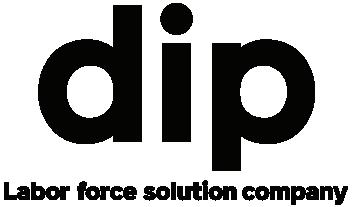

As Japanese businesses look to drive new growth amidst the country’s declining workforce, demand for technologies like artificial intelligence is soaring. Since the government’s launch of the Regulatory Sandbox in 2018 – which allows businesses to develop and test novel ideas without the limitations of existing regulation –projects fromover 140 businesses have been approved, ranging from FinTech and healthcare to AI and IoT.
Similarly, digital transformation (DX) is now one of the biggest priorities for Japanese businesses. The domestic market size of enterprise software alone totalled USD 9.88 billion in 2023, according to Statista, whilst revenue in the IT services market is forecast to surpass USD100 billion in 2028.
Founded in 1987, Yokogawa Rental & Lease gives firms across Japan unrivalled access to the latest IT devices and software via a game-changing rental business model. Yokogawa Rental & Lease also sells a range of in-house system solutions designed to help businesses transition to new work styles and accelerate DX.
Over the past three decades, Yokogawa Rental & Lease has supplied businesses with over 1 million rental devices, including state-of-the-art PCs and IT-related equipment. Leveraging its partnership network, they cover the entire life cycle of each rental product, from procurement, installation, and operation to maintenance. Whilst renting is still a relatively new business model in Japan, Yokogawa Rental & Lease’s president, Kazuhisa Sawa, senses a huge opportunity: “Rented PCs account for approximately 10% of all PCs used by Japanese businesses. Our service resolves many of the challenges businesses face due to Japan’s declining population; we expect a huge demand increase in the near future.”
Yokogawa Rental & Lease’s rental model is also ideal for businesses looking to incorporate green transformation (GX), and the company’s championing

Japan’s economy will pick up pace in 2024, according to the Economist Intelligence Unit –echoing widespread optimism about the world’s thirdlargest economy.
Tourism is one of many sectors rebounding after the covid-19 pandemic, with inbound visitor numbers exceeding pre-pandemic levels in October 2023.
With its red and white logo recognised globally, Nippon Rent-ACar welcomes them. The company was founded in 1969 and now has 17 subsidiaries. It is backed by two leading Japanese businesses - Tokyo Century (with an 89% stake) and airline ANA (11%).
“We have two unique aspects,” says Norihisa Fujiwara, Nippon Rent-A-Car’s president. “Firstly, the variety of vehicles in our fleet. Secondly, we own all our locations across Japan, which no other company in the industry can claim; the others operate franchise systems.”
This is a model that has proved very successful – the company achieved record sales in 2023, with profit increasing significantly. Fujiwara is determined to build on this to secure long-term growth.
To this end, the company’s business strategy focuses on key priorities –uniting Nippon Rent-A-Car groups by strength, operating as one team; lean management that reduces waste and increases efficiency; and improving both customer andemployee satisfaction. The company aims to increase the strength of its rental office network, standardising outlets, renovating or relocating a third of them to make them better for customers and employees alike. Undertaking digital transformation, it is building more options for customers in the rental process, reducing wait time and improving operational efficiency. Developing its reservation website and installing translation tablets at all locations, it is
of sustainability has earned it several accolades. Last year, They became one of non-manufacturing companies in Japan to receive SBT (sciencebased targets) certification for reducing greenhouse gas emissions. The company has also launched a first-ofits-kind rental service with a renewable energy certificate.

“Our business partners are all deeply concerned about addressing environmental issues. They expect this commitment fromus, and we want to share that with our customers,” says Sawa, who also sees Yokogawa Rental & Lease’s environmental mission as a platform for global growth: “Environmental issues are more prominent than ever, and we believe attitudes have shifted – people would rather rent PC and other devices than own them. We’re creating new demand upon the most promising markets.”
Above all, Sawa is most proud of the frontline work Yokogawa Rental & Lease is doing to enhance the future readiness of Japan’s business community, believing it to be vital in securing the country’s long-term investment attractiveness. “Japan’s dedication to education and continuous improvement will ensure foreign investors always have access to top-tier human capital. Japanese companies are prepared to undergo significant changes to keep pace with their global peers; it’s a new era.”

enhancing service at rental offices, while focusing on the inbound tourism market.

“We will achieve sustainable growth through customer and employee happiness,” says Fujiwara. “Our culture is to achieve customers’ happiness, it’s in our DNA. We’re a people business, a company which takes care of our employees – employee engagement is so important for us, and we ensure that they understand to do the best for customers. We help our customers to make their holidays or business meetings the most exciting events. . Our service is of the highest quality, and we’re a leader in the industry because of it. We understand our customers and we are always improving their rental experience, including through digital transformation.”
This approach and its strong brand makes Nippon Rent-A-Car not only the ideal car rental option for foreign tourists in Japan, but an excellent business partner in-country. The company has a highly-successful partnership with global rental leader Enterprise Mobility, which has bolstered its experience in working with corporate clients and HNWIs. The Japanese company is now seeking various opportunities to help scale up its operations, to further increase profitability, and to take a lead in the mobility service revolution –while proudly flying the flag for Japan as both a tourism and investment destination.
“We want to help promote the brand of Japan which has respect for others, the best hospitality” says Fujiwara. “At Nippon Rent-A-Car we really care about receiving a smile from our customers.”

With external demand strengthening and inbound tourism recovering to pre-pandemic levels, Japan’s government has raised its economic growth projections for FY24 to 1.6% in its latest twice-yearly economic outlook report. In nominal GDP terms, the government projects a 3% rise in FY24, bringing it to a record USD 4.29 trillion.
Japan’s rich cultural heritage and diverse geography have made it one of the world’s most visited tourist destinations. Consequently, Japan’s hospitality industry is now worth a staggering USD 25.06 billion, according to Statista, and comprises around 90,000 hotels and accommodation sites. As tourists seek low-carbon travel options, the industry has become an eco-friendly north star for other international tourism hotspots to follow.
With 172 branches nationwide, Super Hotel is on a mission to inspire lowcarbon, eco-friendly travel to Japan’s top tourist destinations, including Tokyo, Kyoto, and Mount Fuji. In 2011, the Ministry of the Environment certified Super Hotel as the industry’s first and only Eco-First company.
Each Super Hotel branch is replete with a unique array of traditional activities designed to give guests an authentic experience of the local area, from natural hot spring facilities to JAS-certified organic food and regional revitalisation initiatives. The company also utilises smart technologies to reduce carbon emissions and offsets 100% of the emissions generated per night’s stay by investing in clean energy projects. Between 2010 – when Super Hotel initiated these activities – and 2023, the company has achieved a cumulative total of 20 million ‘Eco-stay’ nights and saved 123,000 tons of CO2 emissions.
“As a hospitality provider, I believe it’s our duty to educate people about environmental issues,” says Super Hotel’s executive chairman, Ryosuke Yamamoto. “We have two main pillars: ‘Our Eco-stay’ activity, where we carbon-offset our

Japan can expect steady growth ahead, while the central bank will move towards normalising interest rates in 2024-25, according to the Economist Intelligence Unit.
The Asian giant produced 534,900 tonnes of secondary aluminium in the first nine months of 2023, according to the Japan Aluminium Association; recent media reports have shown that demand from the automaking sector in particular is growing.
Since its founding in 1992, SUS has tackled aluminium as a material and repeatedly challenged and revolutionised its use. As a result, the company is an internationally-known brand, and the global market leader in aluminium extrusion frames, among a range of products it offers from factory automation devices to architectural products. Already present across Southeast Asia, in the United States, Europe and China, the company is eyeing further international expansion.
“We are looking into developing in the US, where I see a lot of potential in the market,” says Yasuo Ishida, SUS’s president. “We know that being successful in Asian markets is pretty tough. The US is a pretty fair market for competition, and as long as we have a great product offer, the market will accept it at the price point we’re happy with. At the moment, Europe is challenging due to the war in Ukraine. If things settle down, we would consider exploring opportunities there.”
The company places a strong emphasis on its “global standard” philosophy, with harmony between the business and its customers, a corporate culture filled with energy and communication, with successful results returned to society - and of course an environmental commitment
guests’ stays, and ‘Ecofavourite’ activities, where we reward people for bringing their own amenities, such as toothbrushes. We also provide clean, filtered air and ionised water to all rooms.”
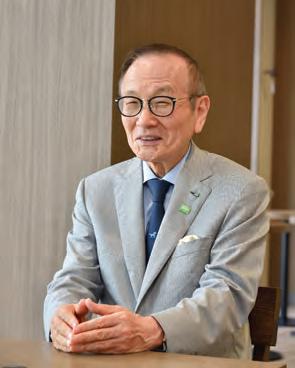
Super Hotel’s dedication to the wellbeing of its guests has earned it numerous accolades, including the JD Power Guest Satisfaction award for the ninth straight year and the top spot in this year’s Japanese Customer Satisfaction Index (JCSI) for Guest Satisfaction. Super Hotel also boasts a 70% return rate. For Yamamoto, the key to Super Hotel’s exceptional performance lies with the ‘autonomous & enthusiastic spirit’ of its staff, fostered through initiatives like its venture management system – a 50-day training program for high-achievers pursuing management roles at each hotel.
Having solidified its reputation at home, Yamamoto is keen to channel new growth through expanding Super Hotel’s overseas portfolio: “We currently have a hotel in Myanmar, and we are confident in SEA’s potential for franchising. Regional investors are welcome to support our venture.”
By opening Super Hotels outside Japan, the company hopes to continue its work as an ambassador for Japanese hospitality. Above all, as a forerunner in ecotourism, Yamamoto hopes Super Hotel can encourage others to share in its vision for a more sustainable and authentic experience of new cultures.

to using limited resources repeatedly and effectively.
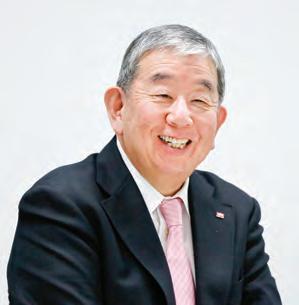
Yasuo Ishida President
SUS will continue the evolution of its product offering, as it always has done. The company has adapted its range to meet the growing demand for aluminium and automation devices driven by increasing environmental awareness and the need for efficiency. Moreover, the company is developing unique products to optimise the superior features of aluminium as material, and at the same time improving structural stability through uniformity of physical properties.
“We pour energy into the development of our products,” says Ishida. “In 30 years, we haven’t compromised with development – no-one works on the level of R&D that we do. We work very hard, we’re energetic and passionate, and aggressive in our working style.”
The company’s employees are strongly engaged in the process, and SUS emphasises the importance of passing on that approach to the next generation. Its philosophy is rooted in a Japanese outlook to business – one that has benefitted the country’s businesses as they have ventured out around the world.
“Japanese people are meticulous,” says Ishida. “We are great partners in other countries because of our nature, our knowledge, and our focus.”


ALWAYS ONE STEP AHEAD OF THE FUTURE
Japan is one of the world’s most inventive nations. According to the latest Global Innovation Index (GII), Japan files the most patent families per billion of GDP (PPP) of any country in the world and ranks fifth for the percentage of GDP spent on R&D. In their relentless pursuit of innovation, Japanese firms generate a constant stream of live opportunities open to foreign investors, backed by a dynamic investment climate, a globally harmonised legal system, and a sandbox approach to new technologies and business models.

LPM and VPM motors have been installed in some of Japan’s most prominent buildings –including the Azabudai Hills, the Roppongi Hills Mori Tower, the Nippon Television Tower, and Tokyo International Airport – plus several semiconductor manufacturing plants.
Jiro Ichikawa President
Japan’s construction industry is a central pillar of the economy, generating around 5% of its GDP, according to Statista. Demand has remained robust over the past decade, largely driven by reconstruction after the Great East Japan Earthquake and major events like the Tokyo 2020 Olympics. In the coming years, Japan’s pipeline of national infrastructure projects like the Linear Chuo Shinkansen and continued disaster prevention work will sustain strong demand. According to Deloitte, Japan’s construction industry will also be vital in carrying out the country’s flagship ‘Society 5.0’ vision as well as decarbonisation effort, offering unprecedented opportunities for firms with diverse strengths in civil engineering and renewable energy infrastructure.
Tracing its history back to the immediate aftermath of the atomic bombing of Hiroshima, ICHIKAWA – founded in 1945 – has played an integral role in the city’s rebuild effort and is now one of its top-flight urban developers.
ICHIKAWA’s rich history in disaster recovery has provided ample opportunity for the company to perfect and diversify its services. Today, its integrated skill set spans civil engineering & construction, urban energy infrastructure, and Industry 4.0 equipment to automate factory production. In civil engineering & construction, ICHIKAWA’s attractiveness – particularly to local governments – lies in its wide-ranging capabilities and focus on creating communities that continue to evolve. From multi-story parking lots, elevator equipment, and rooftop swimming pools to electric power infrastructure encompassing thermal power, nuclear power, hydropower, solar power, and wind power, ICHIKAWA’s unique combination of knowhow has helped it carve out an enviable position within the industry. Looking ahead, the company’s president, Jiro Ichikawa, anticipates a strong period of growth. “We expect to receive more orders for our carbon emission-reducing equipment in the coming years –especially in Tokyo.”
ICHIKAWA has also developed a world-leading class of power motor technologies for applications such as air conditioning in new and existing buildings. The company’s star products are its LPM and VPM motors, which utilise a magnet to reduce loss in the rotor to zero – cutting annual carbon emissions per LPM and VPM by one ton and making them the world’s most efficient motors. ICHIKAWA’s
Since Jiro took over from his father as president in 2013, inventions like the LPM and VPM have become ICHIKAWA’s bread and butter, aligning with his vision to reassert the company’s reputation as a manufacturer. “At the time I joined, we were seen as just a trading company rather than for our work as a ‘technology’ trading company. In 2018, I changed the name to give us a fresh slate and increase our customer base, simultaneously forming our current three pillars: engineering (our robot system integrator & HVAC system), trading, and manufacturing our own products.” Jiro has also overseen ICHIKAWA’s venture into mobile disaster recovery equipment through two innovations: a highly mobile water supply vehicle –W-Dash – and an emergency electricity generator vehicle – E-Dash. The former is ICHIKAWA’s answer to the lack of fresh water supply in disaster-affected areas and evacuation sites and can supply 20,000 litres of fresh water per day – enough domestic water for 500 people – whilst also being operable under a regular driver’s licence. The E-Dash, meanwhile, is a highly mobile emergency power source that can supply 60KVA of electricity for a wide range of purposes, such as lighting, air conditioning, and securing temporary power at disaster sites. As part of its mission to enrich Japan’s urban communities, ICHIKAWA donated its E-Dash vehicle to Hiroshima Prefecture in March 2023, and Jiro is now keen to roll out both vehicles through local governments across Japan.
Given the company’s success in Japan, Jiro has set his sights on business opportunities further afield, with a view to forging partnerships based on its exclusive catalogue of technologies and services. “We have lots of connections and strong relationships with several companies, as well as manufacturers, and therefore lots of valuable information future partners can utilise. Not only do we have the technological know-how, but we also have the ability to operate and supply it.”
At a time of intense global interest in how Japan is solving its climate-change-related issues, ICHIKAWA’s proven capacity for world-leading innovation makes it the ideal partner. Indeed, with its story inextricably linked to Hiroshima’s blossoming into a prosperous manufacturing hub, ICHIKAWA defines the Japanese spirit of resilience, turning the biggest challenges into unrivalled opportunities for innovation, growth, and leadership.


Asia will be the furnace in which a new era is forged,” according to global consultancy McKinsey – and Japan, as the continent’s secondbiggest economy, will play a central role in this.
The key engine of growth is likely to be services, which account for around 70% of Japan’s GDP.
The world’s number-one weather information service, Weathernews Inc. epitomises the tech-intensive, innovative best of the Japanese service sector. Providing services to companies and people active in variety of sectors including sea, on land and in the air, it combines a vast database with an array of value-added advisory products. The company aims to realize the dream of “Saving the lives of sailors. Saving the future of our planet too.’’.
“We operate globally in the ocean segment, for air currently we focus on Asia, and for the land segment we cover almost Japan only for now,” says Weathernews president Chihito Kusabiraki. “One of our growth strategies is expanding this business globally, with a focus on Asia, Europe, and America. Another one is to expand our services to SMEs in addition to our current service offerings focused on large companies. To this end, building adaptable services and operational systems is also an important point. Also, for a few years we have been receiving a lot of enquiries about climate change, which I believe will be another a new growth pillar for us.”
Weathernews cites three strengths: forecast accuracy, database, and community. The factors behind the company’s forecast accuracy are its own observation network and observation infrastructure, as well as his more than 180,000 weather reports per day sent in by users of the company’s app. The company has also developed the world’s largest weather observation database by independently developing satellites and small -scale radars and deploying

Japan’s net worth has reached an astonishing JPY 3.999 quadrillion, according to official data released in January, marking the highest tally since 1994 and the seventh straight year of growth. With inflation also at a four-decade high, Japan’s economy is now firing on all cylinders. Such a strong recovery has brought old industries back into the fold, most notably semiconductor production. Whilst it no longer leads the world in chip making, Japan’s expertise in semiconductor materials and equipment has led to the re-emergence of a “globally competitive” export industry, according to the United States International Trade Commission.
Founded in 1969, Miyatsu has been a partner company of Hitachi for many years, gaining experience in manufacturing crossbar switches, mainframe computer peripherals, and CVD and Furness equipment. In addition, it is currently focusing on developing and manufacturing Etching and Ashing equipment. Miyatsu’s manufacturing capabilities range from single-wafer ashing equipment using a plasma emitter to OLED display manufacturing equipment. Its standout batch-ashing products – MG6500R/ MG8500R and MG200 (single-wafer-ashing) – have received industrywide praise for their environmental credentials and user-friendliness.
As there are few competitors globally in Miyatsu’s niche, the company’s chairman and CEO, Chiharu Miyata, is confident that by acting decisively, it can become the second-largest industry player for these devices. “We’re continuing to focus on development and innovation, particularly in producing Etching and Ashing equipment for SiC semiconductors. These are composed of silicon carbide and rate highly on energy efficiency.”
Currently, the company is open to partnering as an OEM or licensing its IPs
them in Asian markets where information is difficult to obtain.
“Our forecast accuracy is extremely high, and has been verified by third parties to be the most accurate available, especially in Japan,” Kusabiraki says.
Additionally, Weathernews’ capabilities extend beyond simply providing weather information to leveraging our market understanding and long-term client relationships to provide solutions for our clients.
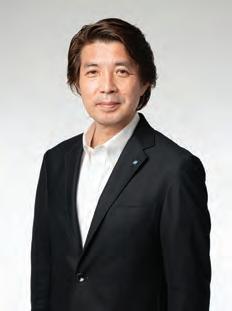
For example, in our services for shipping companies, we provide advice on the optimal engine speed depending on the type of ship and the optimal route for that ship. We have also begun offering analysis services for business risks associated with climate change, and we have the ability to predict climate conditions several decades into the future and support companies in formulating their BCM/BCP.
For this reason, the company, which is listed on the Tokyo Stock Exchange, is in a unique position not only for investors but also for customers.
Weathernews shows how Japan has produced world-leaders in a range of segments, combining local expertise with a global view.
“American companies tend to focus on relative value, and many aim to be number one in market cap and sales, for example,” says Kusabiraki. “European companies, on the other hand, tend to focus on definite value, such as providing the best services.
Many Japanese companies aim to realize both of these values, and this is also the future we are aiming for, and that will continue to attract foreign investors.”

to help others manufacture semiconductors.
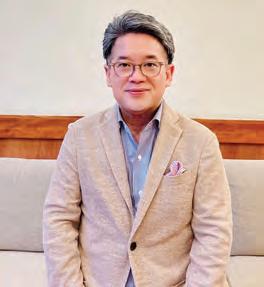
Chiharu Miyata Chairman & CEO
Helping others is also the motivation behind Miyata’s second venture – UBC – the network connectivity firm he founded in 2007. Based in Miyata’s hometown, UBC was established in response to rural areas’ lack of connectivity and digitalization. Leveraging a fiber network utilizing the IoT and sensors to connect over 10,000 homes, UBC is preparing the groundwork for these areas to accommodate new and upcoming technologies. UBC addresses Japan’s most pressing social issues with a range of technologies, from remote medical assistance and artificial intelligence to mobility-related 5G and 6G applications. This concept was born in 2003 when he opened an office in San Jose and explored the possibilities of realizing a ubiquitous society. Miyata now wants to spread it worldwide. More specifically, he is searching for an international partner to make UBC’s ICT system more userfriendly.
Living in the countryside and running his own ICT business, Miyata has seen first-hand the positive impact technology firms like his can have. More broadly, he views Japan’s response to its biggest challenges as something the world can learn from. “An aging population presents opportunities, just like our deep connection to nature does for environmentalism. Japan is entering a new era, and it’s an excellent time to invest in our country and businesses.”

This year, we at Entrepreneur published the 45th annual edition of our Franchise 500 ranking. As we celebrate that milestone, we also want to recognize the franchise brands that have been on this Franchise 500 journey right alongside us for the longest, claiming spots in the rankings year after year after year—including three that have ranked in every single Franchise 500 from the very beginning!
Those three brands, along with 47 others that have ranked for the past 25 years or more consecutively, are what we call our “Hall of Fame” franchises. We recognize them on the following pages, along with our “10+ Club” franchises—brands
that are on their way to future Hall of Fame status, having ranked 10 to 24 years consecutively. We also share some thoughts from a few of these companies on the secrets to their success, the changes they’ve seen over the years, and what the future of the franchise industry might hold in store.
As always, Entrepreneur’s franchise lists are a great starting point if you’re interested in purchasing a franchise, but they should not be construed as an unqualified recommendation of any particular company. No matter how impressive the track record of the brand you’re considering, you should always do your own extensive research before investing. That includes reading the company’s legal documents, consulting with an attorney and an accountant, and talking to current and former franchisees.




What is the key to long-term success in franchising?
“A partnership mentality between franchisor and franchisee—making sure that the franchisor realizes that the franchisees are the brand. Their success is yours.”
—BILL
MCPHERSON, vice president of retail network development, AlphaGraphics

“Essential to long-term success in franchising is avoiding sacrificing service excellence and quality for the sake of rapid scale. Primrose was the first to franchise an early education and care model. We committed to building a comprehensive, replicable model before accelerating growth. We gained insights from early franchise owners, leadership teams, and teachers to fine-tune operational and curriculum processes to ensure a high-quality, consistent delivery of service excellence.”

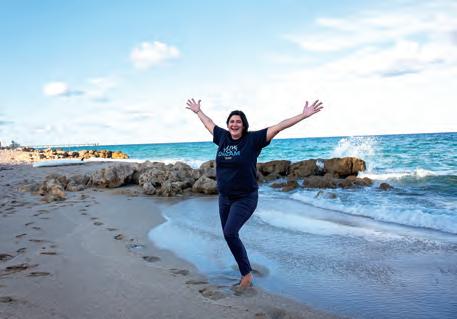
“As times change, brands are continually asked to evolve. Brands that understand how to modernize, while maintaining the culture and ‘secret sauce’ that made them great in the beginning—those are the brands that live on for decades.”

–ADAM BENSHOOF, vice president of franchise development, HomeVestors of America
–ADAM BENSHOOF, vice of franchise develAmerica















Our credibility and longevity are unmatched. With more than 65 years of experience and over 26,000 centers worldwide, we know what it takes to help franchisees succeed.
• High Demand for Education Enrichment
• Industry-Low Franchise Fee of $2,000
• Extremely Affordable Startup Costs
• Comprehensive Training & Support Programs
• Generous Incentives Package Ranked on the Franchise 500 for 27 Years Straight #1 in Category for 23 Consecutive Years
another
20–24 YEARS Ranked For
Fish
Rooterman Ranked 22 years

15–19 YEARS Ranked For
Spherion





































Dairy Queen Ranked 17 years
Hardee’s
Ranked 17 years
KFC Ranked 17 years
Pizza Hut Ranked 17 years
Primrose Schools Ranked 17 years
Senior Helpers Ranked 17 years
Bojangles Ranked 16 years
Checkers and Rally’s Ranked 16 years
Chester’s
Chester’s Ranked 16 years
Window Gang Ranked 16 years
Camp Bow Wow Ranked 15 years
H&R Block Ranked 15 years
Pearle Vision Ranked 15 years
Ziebart Ranked 15 years
YEARS
How do you keep an established brand like yours fresh and innovative?
“We listen to our franchisees. Our owners are smart, motivated, and come from a variety of backgrounds. We welcome hearing new ideas from them, as well as keeping our eyes and ears open through attending conferences and webinars.”

—RAYCHEL LEONG-SULLINS, president, Maid Brigade
RAYCHEL

“The key is to not get bored with who you are and what you have to offer. At Great Clips, we know what we’re good at. Our core offering remains the same as it has for nearly 42 years, and our innovation has come in the form of technology to make our services even more convenient for customers. Before we launched online check-in, our front door had always been the door of the salon. Now our front door is wherever someone’s phone is.”
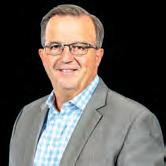
—STEVE HOCKETT, CEO, Great
—STEVE HOCKETT, CEO, Great Clips
“Run your own inside operation so you know firsthand what the franchisees are experiencing. Most important: Listen to your franchisees! Call them, email them, and when it gets too big, survey them. Let them have a voice, because it is their journey, too.”

—TONY LAMB, CEO, Kona Ice
—TONY Kona Ice

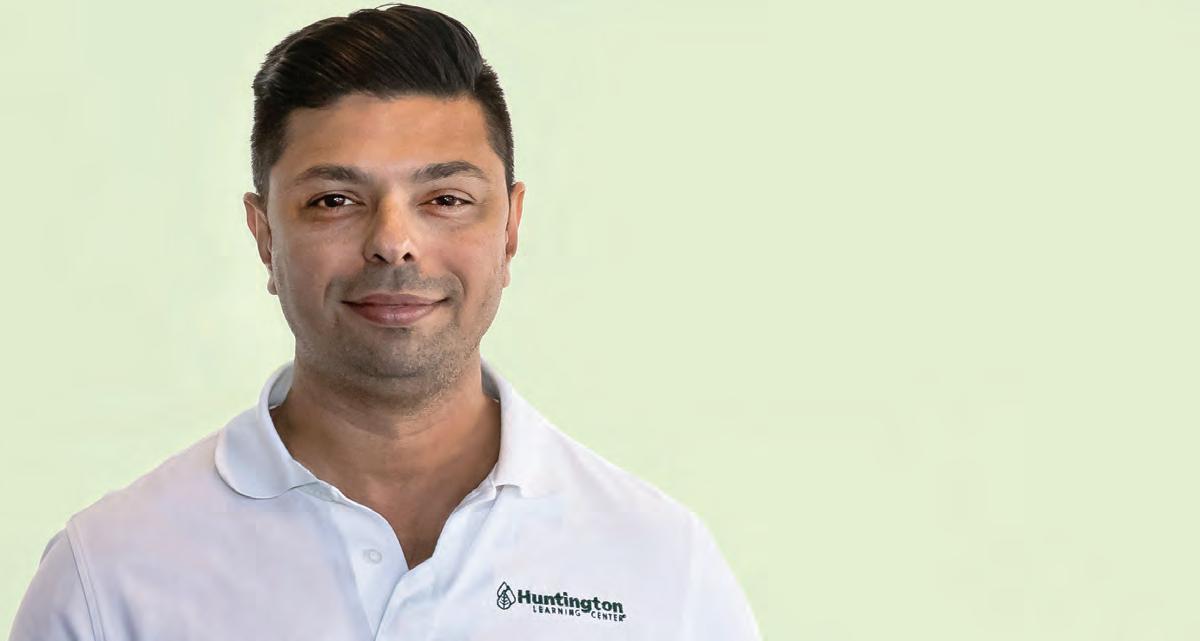
Aziz Kabani

JOIN IN HUNTINGTON’S MISSION?
• Proven model with nearly 5 decades of experience
• Industry-leading student results
• Low initial investment starting at $154,506
• Over 34% higher 2022 average revenue than our closest education franchise competitor
• Diverse services ensure multiple revenue streams (Grades K-12 including tutoring and test prep)
• Turnkey systems and dedicated support teams
• $5 billion industry and projected to grow to $18 billion by 2028 (source: Grand View Research)



“The number of industries that now have a franchise opportunity is just massive. People with that entrepreneurial spirit seek out opportunities that unite a passion, financial security, and a culture that they believe in and can get behind.”
DREW DALY, senior vice manager, Dream Vacations
—DREW DALY, senior vice president and general manager, Dream Vacations
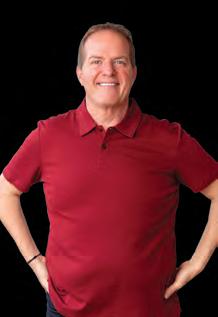

“The franchise industry has progressed by leaps and bounds to help ensure that business ownership across the country is more reflective of our diverse communities. I’m proud to be a part of a brand where 46% of the new franchisees we welcomed in 2023 were from diverse backgrounds.”
—KATHY GEORGE, executive vice president, Spherion
“The franchise industry, once rooted in face-to-face interactions, underwent a transformative shift with the advent of COVID. We’re now witnessing a harmonious blend of in-person relationship building and remote business. Technology has catalyzed a paradigm shift, compelling both customers and franchises to embrace a new and resilient business model.”

—ROGER LEWIS, CEO, CMIT Solutions
ROGER LEWIS, CEO, CMIT Solutions KATHY



















































































Uptown
Closets
What do you think the future holds for the franchise industry?
“One trend to keep an eye on is the shift from the corporate world to franchising, particularly among Generation Z. The youngest members of the workforce see themselves as creators, which is one reason that entrepreneurship is so appealing to them.”

STEVE CHAMBERS, vice of retail and business UPS Store
—STEVE CHAMBERS, vice president of retail and business development, The UPS Store

—VINNY
senior vice
Express Employment Professionals
“Technology is the drumbeat of tomorrow’s franchise industry. Embracing automation and leveraging data will be pivotal. Yet success hinges on preserving that personal touch amid technological strides. Those who can successfully integrate AI while maintaining a ‘people first’ mentality will be the businesses that lead the way.” —VINNY PROVENZANO, senior vice president of global franchising, Express Employment Professionals
“The industry will be fueled by AI integration and the advancement of both customer-facing and operation al technology, resulting in increased efficiency. At Bojangles, we’ve already begun to test this type of technology, equipping several drive-thrus to take orders using our AI order-taker, Bo-Linda.” vice president of franchise sales, Bojangles
BROOKS SPEIRS,

Be a part of the hottest and fastest growing full size fitness franchise.
• Most competitive and progressive model in the $32 billion fitness industry
• Ranked #1 in Fitness Category for 2024 by Entrepreneur
• Highly recognizable fitness brand with a 30-year history
• Over 1,500 franchise rights sold
• One of the largest member bases in the worldwide fitness industry
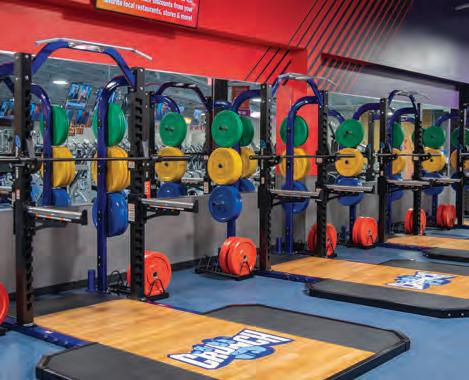


Inquire at crunch.com/franchise for more info. Or, email John Merrion at john.merrion@crunch.com to learn more about available territories.








Cinnabon Ranked No. 1 in category 13 years
Express Employment Professionals Ranked No. 1 in category 13 years
7-Eleven Ranked No. 1 in category 13 years
Snap-on Tools Ranked No. 1 in category 12 years
Transworld Business Advisors Ranked No. 1 in category 12 years Taco
Ranked No. 1 in category 11 years


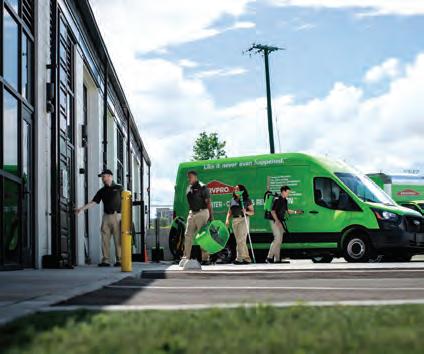


















After getting laid off in her early 50s, Keri Gardner decided she wanted to control her own fate—so she bought a franchise with her 401(k). by
Sometimes, building the life you want requires a big risk. That’s what Keri Gardner realized when she cashed in $100,000 of her retirement savings to buy a franchise. It was November 2020, and she had just been laid off from her executive role at a health company. A franchise recruiter called her and asked, “Do you want to work for anybody else?” Gardner replied, “Absolutely not. I work really hard. I want to do it for me.”
She was passionate about the environment, so was drawn to Filta Environmental Kitchen Solutions. The company, which has 127 franchisees in 348 territories, cleans fryers in commercial kitchens and filters impurities from their cooking oil so it lasts longer, swaps out the oil when it’s spent, and recycles oil for use in biofuels. Gardner used the money from her 401(k) to buy two territories on Long Island. Six months later, she was getting so much business that her husband quit his job to join her. Now the couple owns six territories. Here, she shares what the transition was like—and why the risk was worth it.
Why’d you decide to cash out your 401(k)?
It was terrifying. I thought: If I don’t get another job that I deserve, and I can’t keep padding my 401(k), then it’s really not enough to retire on anyway. So why not roll the dice? I didn’t want to have loans. I wanted the first year [of the franchise] to be fully paid for, so we could jump in and run— and that’s what we did.
How did you find Filta Environmental Kitchen Solutions?
I worked with a franchise coach. He asked what I was interested in, and I said the environment. I also looked at mobile dog groom-

ing because I love dogs, but there are a lot of mobile dog groomers out there, and nobody was doing this oil filtering on Long Island.
How does it help the environment to filter oil from a restaurant’s fryers?
Instead of just dumping oil and getting rid of it, we’re saving so many things. We’re saving on the plastic jugs. On fertilizer. On all the farming of all the soybeans. We take oil out of the fryers to be processed into biofuel, so it can be used in planes and things like that. It’s double revenue and double environmental impact.
How hard is the work?
We’re filtering all the impuri-
ties out of the oil, and we’re vacuuming all the crumbs and junk out of the bottom of the fryers, so you have more consistent quality for cooking for a longer time. It is hard work. It’s not for the faint of heart. The equipment is heavy, and you’re moving this equipment in and out of places using loading docks. But my husband tells all the guys who work for us that his 55-year-old wife is outworking them right now.
During the pandemic, we went after the big guys because everything else was shut down. Filta has contracts
with companies that run arenas and stadiums: UBS Arena, Citifield, Hofstra University. Once those guys get to know you, and they know you’re here, the sale isn’t as hard as you think. You just have to get the right person to talk to.
Do you plan to keep the focus solely on those larger clients? We’re trying to build out more of the smaller businesses now. If something happens to one thing, you want to have yourself covered with something else. If I’m going after smaller accounts, they’re probably right near my bigger accounts, so it just makes the route more profitable





Most clean-up companies just fix messes, like fire or flood damage. But 911 Restoration’s new CEO saw an opportunity to help with the other emergency they often encounter: customers’ emotional trauma. by KIM
Miri Offir knows how to talk to people in crisis. After serving in the Israeli military, she came to the U.S. in 2003 and took a secretary job at the post-disaster recovery franchise 911 Restoration. She worked her way up—eventually becoming the company’s CEO in 2022, now overseeing 291 franchises.
So when Offir stepped into a leadership role at 911 Restoration, she already knew some changes she wanted to make. It had long bothered her that when people called the company, their experts stuck to “just the facts, ma’am”—even if the person was clearly traumatized. For example, a mom would call, sounding upset with babies next to her, and the 911 Restoration expert would only ask how many inches of water were in the house. Was this person cruel? No, Offir realized—they were just poorly trained. Now, things are done differently. “Before, the training was very technical: how to do the job, what equipment to use,” she says. “Today, at least 50% is about the emotional damage.” Here, Offir explains how she’s teaching franchisees to connect on a deeper level.
When you began implementing changes to your training, how did you explain your philosophy to franchisees? It’s about seeing the other person. Put yourself in their shoes. Treat each other like we want to be treated. That’s the core values for me. You don’t have to be brilliant or have crazy, special skills to make a difference. All you have to do is care, and good things happen.
Were there certain techniques you put in place to help franchisees assess emotional damage?
We went through recorded calls, some good and some not so good. And we created
profiles of people. Maybe it’s a homeowner—a husband and wife with children. What are their pain points? How do they react? How would water damage affect them? What about a business owner? What happens when his business is closed? We dive into the ins and outs of who we are serving. And we keep modifying.
Did you create messaging for addressing different types of customers?
Yes. When you talk to a facility manager or a property manager, we have different things that we say. We know that they have different pain points. And if it’s residential, and there’s a family with children involved, it’s a totally

personal belongings. They are in that house right now. Maybe it’s the kitchen or bathroom.
Was it hard to get some franchise owners into this new mindset?
You have some more crusty ones who have been in the business for years, and they think they know how it’s done. With these people, it takes more patience, maybe more conversations and visits. I tell them that I don’t know what I don’t know. If I’m starting a
the core of it, and so far, it’s working out pretty well.
Has this empathetic approach led to an increase in business? At first, we saw a small increase in volume. But then, we started to see the reviews we were getting online. Customers are feeling that empathy. A while ago, a big real-estate company emailed to say they always reach out to restoration companies with complaints. But they wanted to give us a compliment on our communication.









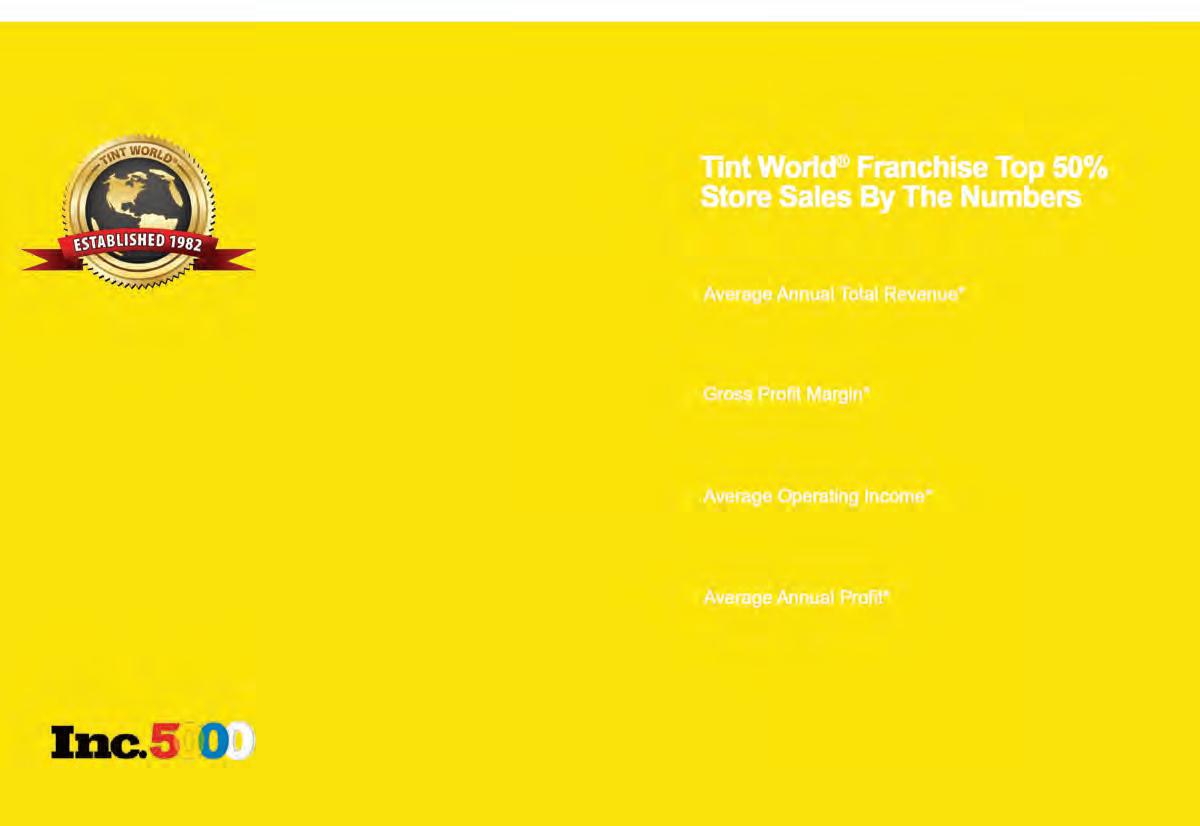

After being laid off twice in two years, Josh Grinstead became a GYMGUYZ franchisee—and now makes more than $1 million in annual revenue. Here’s his playbook. by KIM
WKAVIN

hen Josh Grinstead got laid off for the second time, at 41, he knew he was at a crossroads: “Either stay on the treadmill, be unhappy, and fail to attain my potential,” he says, “or be brave enough to take that mid-career risk.” Until then, he’d worked in senior management at various colleges. But on aptitude tests, he’d always scored high for entrepreneurial instincts. As a longtime fitness enthusiast, personal training services appealed to him—so in 2015, Grinstead bought three GYMGUYZ territories (GYMGUYZ is a handy acronym for Get You Motivated, Genuine, Unique, You can do it, Zero Excuses). Today, he owns eight of them in New Jersey and New York. His annual revenue tops $1 million, he’s first in sales among GYMGUYZ franchisees in 22 states, and last year, the International Franchise Association named him a Franchisee of the Year.
Here’s how he made it happen.
“No matter what [the franchisor] tells you about capital, go 20% higher,” Grinstead says. “You never know what you’ll need. You might want to spend more on marketing. You might want to spend more on equipment. You want that flexibility.” And when you’re choosing what to spend on, he says, find a mentor to consult with. “If you’re making decisions, you’ll feel better about them.”
All marketers have ideas, but not all deliver. “They say, ‘Oops, you didn’t get a sale from that $5,000 spread in the magazine? Well, good luck,’” Grinstead says. That’s why he prefers arrangements that reward success. “Maybe you pay them this much for the basics, but if they attain a measurable outcome, you’ll buy an additional amount of ads.”
Many franchisees try to become experts at everything—but that’s impossible, Grinstead says. For example, he hates accounting. “I learn enough to get by, to make sure we’re not getting robbed blind,” and then he hires people who are good at it, and commits to learning and improving along the way. “In truth,” he says, “if you have the right mindset for this, you’re never there.”
What makes Grinstead so successful? GYMGUYZ has an answer: It’s momentum. “He moves faster. He talks faster. He doesn’t complain. He doesn’t make excuses,” says GYMGUYZ founder Josh York. And that same energy keeps Grinstead pushing through tough times. “Just because you’re buying a franchise doesn’t mean it’s going to be easy,” York says. “You’ve got to push through those challenges. That’s what pays well.”
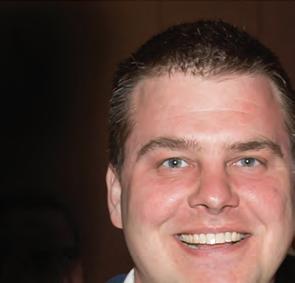


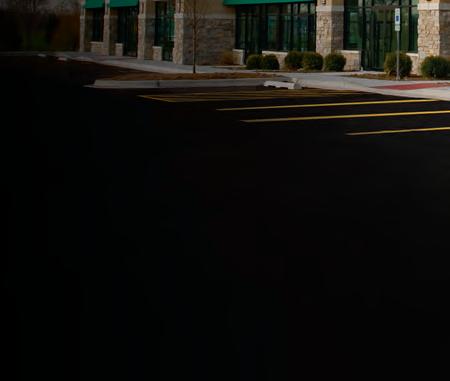

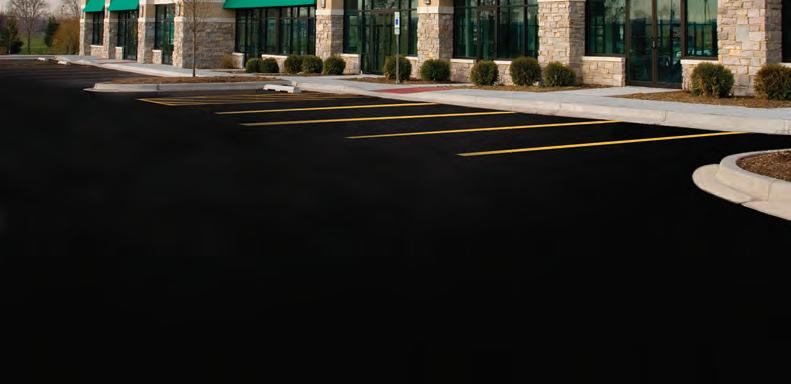

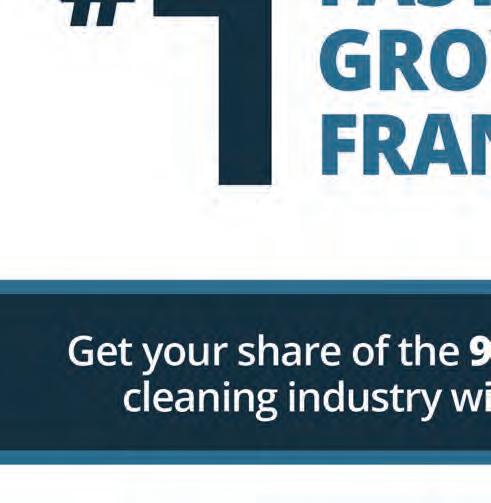
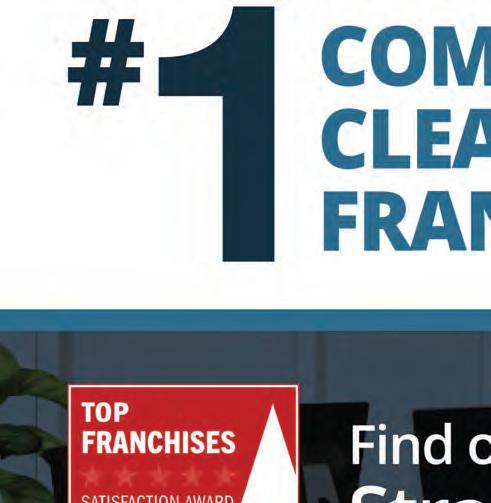
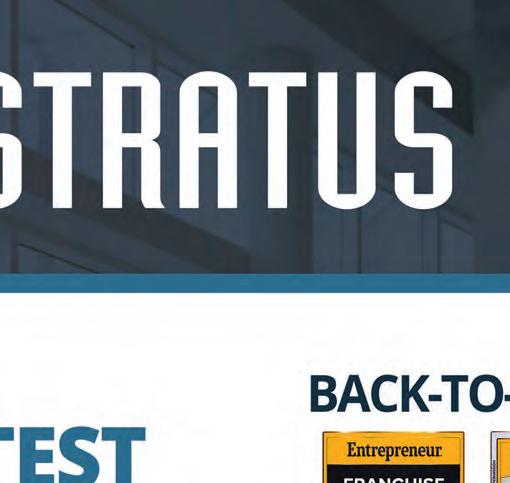
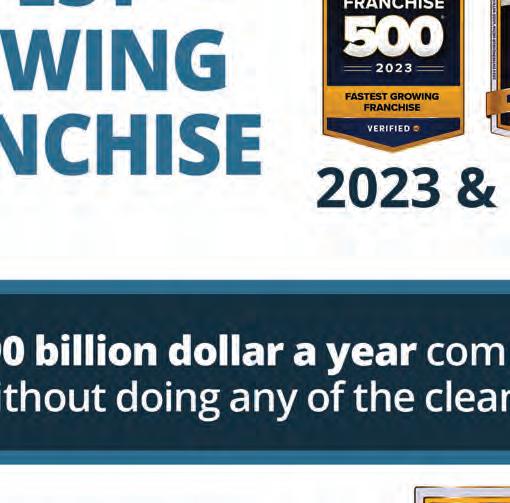





Looking to buy a brand that’s rapidly rising? Here are the 150 franchises growing the quickest right now. by
TRACY STAPP HEROLD
If you’re looking for a franchise brand to buy, you’re surely asking yourself this question: Which brands are worth my time and money? There are many ways to answer that, but here’s a useful starting point: Look at the brands with major traction. That’s what you’ll find on the following pages, where we rank based on the number of franchise units they opened in the U.S. and Canada in one year, using percentage growth to break ties.
Just how fast are these franchises growing? Based on the data submitted for Entrepreneur’s 2024 Franchise 500 ranking, which looked at units added between July 31, 2022, and July 31, 2023, these brands are far outpacing the competition. The average brand that applied for our ranking (with 1,389 applicants overall)
experienced net growth of just 6.6 franchise units in the U.S. and Canada during that time period. But these 150 fastest-growing franchises grew 10 times that much on average, and the No. 1 company on this list, Stratus Building Solutions, added more than 100 times that many units!
Altogether, these 150 companies added a combined net total of 10,310 franchise units in the U.S. and Canada over one year. As you look over this list, though, keep in mind that it is not intended as an endorsement of any particular brand. Growth may be one indicator of a flourishing franchise system, but it’s not the whole picture. Always do your own careful research: Read the company’s legal documents, consult with an attorney and an accountant, and talk to as many current and former franchisees as you can.

1
2
3
Jersey Mike’s Subs Subs and Philly cheesesteaks
TOTAL UNITS (Franchised / Co.-Owned) 2,538/19
U.S./CANADA FRANCHISE GROWTH +309
STARTUP COST
$214.5K-$1.4M
4
Dream Vacations Travel agencies
TOTAL UNITS (Franchised / Co.-Owned) 1,874/0
U.S./CANADA FRANCHISE GROWTH +258 STARTUP COST
$1.8K-$21K
Taco Bell Mexican-inspired food
TOTAL UNITS (Franchised / Co.-Owned)
U.S./CANADA FRANCHISE GROWTH
STARTUP COST
$575.6K-$3.4M
Scooter’s Coffee Coffee, espresso, smoothies, pastries, breakfast
TOTAL UNITS (Franchised / Co.-Owned)
U.S./CANADA FRANCHISE GROWTH
STARTUP COST
$797K-$1.3M
Tropical Smoothie
Smoothies, salads, wraps, sandwiches, flatbreads
TOTAL UNITS (Franchised / Co.-Owned)
U.S./CANADA FRANCHISE GROWTH
STARTUP COST
$296.5K-$661.5K
Servpro
Fire, water, and other damage cleanup, restoration, and reconstruction
TOTAL UNITS (Franchised / Co.-Owned)
U.S./CANADA FRANCHISE GROWTH +149
7
Stroll Monthly publications for upscale neighborhoods
TOTAL UNITS (Franchised / Co.-Owned) 537/39
U.S./CANADA FRANCHISE GROWTH +222
STARTUP COST $1.5K-$9.4K
8 Kona Ice Shaved-ice trucks
TOTAL UNITS (Franchised / Co.-Owned) 1,644/21
STARTUP COST
$236.3K-$296.8K
13
Popeyes Louisiana Kitchen
Fried chicken, seafood, biscuits
TOTAL UNITS (Franchised / Co.-Owned) 4,050/41
U.S./CANADA FRANCHISE GROWTH +148
STARTUP COST
$383.5K-$3.7M
14
StretchLab
Assisted stretching
TOTAL UNITS (Franchised / Co.-Owned) 407/3
U.S./CANADA FRANCHISE GROWTH +142
STARTUP COST $162.6K-$333.9K
15 Cruise Planners Travel agencies TOTAL UNITS (Franchised / Co.-Owned) 2,719/1 U.S./CANADA






















28
Budget Blinds Window coverings, window film, rugs, accessories TOTAL UNITS (Franchised / Co.-Owned) 1,472/0
U.S./CANADA FRANCHISE GROWTH +95
STARTUP COST
$140.5K-$211.8K
Coffee, doughnuts, baked +95
STARTUP COST
$437.5K-$1.8M
30
Transworld Business Advisors Business brokerages; franchise consulting TOTAL UNITS (Franchised / Co.-Owned) 450/1
U.S./CANADA FRANCHISE GROWTH +93
STARTUP COST
$94.1K-$119.6K
31
Take 5 Oil Change Oil changes
TOTAL UNITS (Franchised / Co.-Owned) 296/610
U.S./CANADA FRANCHISE GROWTH +92
STARTUP COST
$222.8K-$1.6M
32
Buildingstars
Commercial cleaning
TOTAL UNITS (Franchised / Co.-Owned) 1,042/13
U.S./CANADA FRANCHISE GROWTH +86
STARTUP COST
$2.4K-$53.2K
33
Ace Hardware
Hardware and home improvement stores
TOTAL UNITS (Franchised / Co.-Owned) 5,582/231
U.S./CANADA FRANCHISE GROWTH +84
STARTUP COST
$579.4K-$1.9M
34
Charleys Cheesesteaks & Wings
Philly cheesesteaks, fries, wings, lemonade
TOTAL UNITS (Franchised / Co.-Owned) 724/59
U.S./CANADA FRANCHISE GROWTH +78
STARTUP COST
$199.97K-$907K
35
Temporary Wall Systems
Rental, installation, and service of modular containment systems
TOTAL UNITS (Franchised / Co.-Owned) 75/0
U.S./CANADA FRANCHISE GROWTH +75
STARTUP COST
$145.4K-$352.5K
36
Blue Kangaroo Packoutz
Contents restoration
TOTAL UNITS (Franchised / Co.-Owned) 91/1
U.S./CANADA FRANCHISE GROWTH +75
STARTUP COST
$221.8K-$431.4K
/
38 Nothing Bundt Cakes Bundt cakes and gifts
UNITS (Franchised / Co.-Owned) 501/16 U.S./CANADA FRANCHISE GROWTH +72
COST $551.3K-$978.2K 39 Koala Insulation Insulation services
UNITS (Franchised / Co.-Owned) 400/249 U.S./CANADA FRANCHISE GROWTH +71
COST $624.4K-$1M 41 Window Gang Window, gutter, roof, and dryer-vent cleaning; pressure washing; chimney sweeping
UNITS (Franchised / Co.-Owned) 468/235 U.S./CANADA FRANCHISE GROWTH +68
























































$200.1K-$1M
$313.2K-$664.2K
48 QC Kinetix
Regenerative medicine and nonsurgical pain management therapies
TOTAL UNITS (Franchised / Co.-Owned) 187/12
U.S./CANADA FRANCHISE GROWTH +59
STARTUP COST
$227.3K-$495.98K
49
PuroClean
Property damage restoration and remediation
TOTAL UNITS (Franchised / Co.-Owned) 436/0
U.S./CANADA FRANCHISE GROWTH +59
STARTUP COST
$95.5K-$245.9K
TOTAL UNITS (Franchised / Co.-Owned) 373/2
U.S./CANADA FRANCHISE GROWTH +58
STARTUP COST $169K-$378K
Mosquito Shield Outdoor pest control
TOTAL UNITS (Franchised / Co.-Owned) 375/0
U.S./CANADA FRANCHISE GROWTH +58
STARTUP COST
$98.9K-$139.95K
52
Synergy HomeCare Nonmedical home care
TOTAL UNITS (Franchised / Co.-Owned) 453/0
U.S./CANADA FRANCHISE GROWTH +57
STARTUP COST
$47.7K-$145.8K
53
Biggby Coffee Specialty coffee, tea, smoothies, baked goods
TOTAL UNITS (Franchised / Co.-Owned) 360/0
U.S./CANADA FRANCHISE GROWTH +56
STARTUP COST
$246.3K-$564.6K
Franchise expansion has become increasingly international in the last few years. Here are the 25 brands with the greatest franchise growth outside of the U.S. and Canada from July 2021 to July 2022.
WHILE OUR MAIN LIST focuses on North American growth, more and more brands are looking to grow worldwide. These are the 25 that had the greatest franchise growth outside the U.S. and Canada from July 2022 to July 2023.
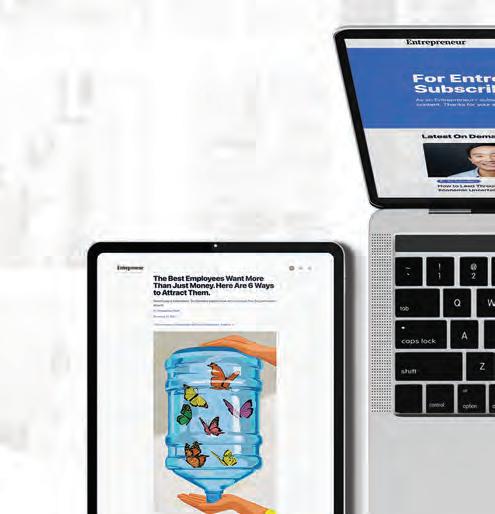


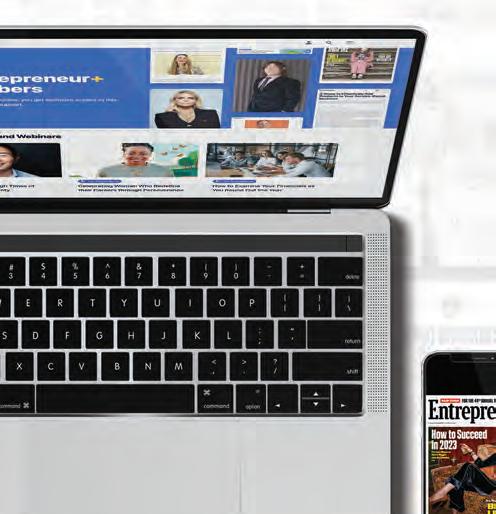





(Franchised / Co.-Owned) 466/60
U.S./CANADA
U.S./CANADA FRANCHISE GROWTH


Zoomin Groomin is more than just a franchise; it's a family of passionate entrepreneurs dedicated to delivering top-notch pet grooming services right at the doorstep of pet owners. With over 100 vans operating successfully in 75 markets, our franchisees have proven that this is not just a business – it's a flourishing venture that you can be a part of. Pet ownership and pet services have skyrocketed in the last decade.
Our franchise model is designed for success from day one. Low startup costs and high demand ensure that you start generating cash flow almost immediately. Our proven business model, training, and ongoing support make sure you're on the right track.
Every franchisee at Zoomin Groomin is an integral part of our incredible journey. We're looking for passionate individuals like you to share in our success. Together, we can make pets and their owners happier, one grooming session at a time.
journey. We're









76
Freddy’s Frozen Custard & Steakburgers
Frozen custard, steakburgers, hot dogs
TOTAL UNITS
(Franchised / Co.-Owned) 457/33
U.S./CANADA FRANCHISE GROWTH +43
STARTUP COST
$794.3K-$2.5M
77
British Swim School
/ Co.-Owned) 1,835/0 U.S./CANADA FRANCHISE GROWTH +44
STARTUP COST
$11.3K-$68.3K
75
Tommy’s Express Car Wash Car washes
TOTAL UNITS (Franchised / Co.-Owned) 153/9
U.S./CANADA FRANCHISE GROWTH +43
STARTUP COST
$4.6M-$7.9M
Swimming lessons for ages 3 months and older
TOTAL UNITS
(Franchised / Co.-Owned) 178/0
U.S./CANADA FRANCHISE GROWTH +42
STARTUP COST
$109.96K-$145K
78
USA Insulation
Home insulation and energy-efficient products
TOTAL UNITS (Franchised / Co.-Owned) 113/1
U.S./CANADA FRANCHISE GROWTH +41
STARTUP COST
$269.5K-$398K
79
Valvoline Instant Oil Change Oil changes and preventive maintenance
TOTAL UNITS (Franchised / Co.-Owned) 858/821
U.S./CANADA FRANCHISE GROWTH +41
STARTUP COST
$204.8K-$3.3M
80
Home2 Suites by Hilton
Upper midscale extended-stay hotels
TOTAL UNITS (Franchised / Co.-Owned) 614/0
U.S./CANADA FRANCHISE GROWTH +40
STARTUP COST
$14.5M-$21.6M
81
Frios Gourmet Pops
Frozen pops
TOTAL UNITS (Franchised / Co.-Owned) 86/0
U.S./CANADA FRANCHISE GROWTH +39
STARTUP COST $40.9K-$71.8K
82
Studio 6
Economy extended-stay lodging
TOTAL UNITS (Franchised / Co.-Owned) 215/0
U.S./CANADA FRANCHISE GROWTH +39
STARTUP COST $238.3K-$9.2M
83
Ace Handyman Services
Residential and commercial repairs, restoration, and maintenance
TOTAL UNITS (Franchised / Co.-Owned) 352/7
U.S./CANADA FRANCHISE GROWTH +39
STARTUP COST $127.6K-$204.1K
84
Real Property Management
Property management
TOTAL UNITS (Franchised / Co.-Owned) 438/0
U.S./CANADA FRANCHISE GROWTH +39
STARTUP COST $91.7K-$266.2K
85
Cold Stone Creamery
Ice cream, sorbet, ice cream cakes, shakes
TOTAL UNITS (Franchised / Co.-Owned) 1,306/1
U.S./CANADA FRANCHISE GROWTH +39
STARTUP COST
$310.4K-$602.8K
86
Paris Baguette
Bakery cafes
TOTAL UNITS (Franchised / Co.-Owned) 3,807/19
U.S./CANADA FRANCHISE GROWTH +38
STARTUP COST $652.6K-$1.8M
87
Augusta Lawn Care Services Lawn care and landscaping
TOTAL UNITS (Franchised / Co.-Owned) 126/7
U.S./CANADA FRANCHISE GROWTH +38
STARTUP

U.S./CANADA
Swimming
TOTAL UNITS (Franchised / Co.-Owned) 379/0
U.S./CANADA
Hangry Joe’s Hot Chicken
Hot chicken sandwiches
TOTAL UNITS (Franchised / Co.-Owned) 43/1
U.S./CANADA FRANCHISE GROWTH +33
STARTUP COST
$238.5K-$421K
102 Image Studios Salon suites
TOTAL UNITS (Franchised / Co.-Owned) 59/1
U.S./CANADA FRANCHISE GROWTH +33
STARTUP COST
$868.2K-$1.7M
103
Bricks & Minifigs
Lego and related products
TOTAL UNITS
(Franchised / Co.-Owned) 75/3
U.S./CANADA FRANCHISE GROWTH +33
STARTUP COST
$120.1K-$282.6K
104
Dryer Vent Wizard
Dryer vent cleaning, replacement, installation, and maintenance
TOTAL UNITS
(Franchised / Co.-Owned) 151/0
U.S./CANADA
$80.7K-$159.4K

Stratus Building Solutions, which made No. 1 on our list, added more than twice as many franchise units as the No. 2 company on the list!
Three of the fastest-growing franchises on our list just started franchising in 2022! They are: Super Soccer Stars (No. 60), The B12 Store (No. 69), and SkyRun Vacation Rentals (No. 121).
Low-cost franchises are easier for many people to afford, so it’s no surprise that eight franchises with startup costs beginning under $10,000 made our list: Stratus Building Solutions (No. 1), Dream Vacations (No. 4), Jan-Pro Cleaning and Disinfecting (No. 5), Corvus Janitorial Systems (No. 6), Stroll (No. 7), Cruise Planners (No. 15), Buildingstars (No. 32), and Card My Yard (No. 128).








105
Gotcha Covered
Window treatments
TOTAL UNITS
(Franchised / Co.-Owned) 161/0
U.S./CANADA FRANCHISE GROWTH +33
STARTUP COST
$100.1K-$122.1K
106
Weed Man
Lawn care
TOTAL UNITS
(Franchised / Co.-Owned) 317/31
U.S./CANADA FRANCHISE GROWTH
+33
STARTUP COST
$80.5K-$107.8K
107
Jamba
Smoothies, juices, and bowls
TOTAL UNITS (Franchised / Co.-Owned) 794/2
U.S./CANADA FRANCHISE GROWTH +33
STARTUP COST
$129.8K-$1M
108
Mac Tools Automotive tools and equipment
TOTAL UNITS (Franchised / Co.-Owned) 1,159/0
U.S./CANADA FRANCHISE GROWTH +33
STARTUP COST
$119.9K-$343.4K
109
Hello Sugar
Traditional waxing and sugaring
TOTAL UNITS (Franchised / Co.-Owned) 51/13
U.S./CANADA FRANCHISE GROWTH +32
STARTUP COST
$61.6K-$482.7K
110
100% Chiropractic
Chiropractic services, massage therapy, nutritional supplements
TOTAL UNITS
(Franchised / Co.-Owned) 114/3
U.S./CANADA FRANCHISE GROWTH +32
STARTUP COST
$347.5K-$829.2K
111
i9 Sports
Youth sports leagues, camps, and clinics
TOTAL UNITS (Franchised / Co.-Owned) 233/0
U.S./CANADA FRANCHISE GROWTH +32
STARTUP COST
$59.9K-$69.9K
112
Motto Mortgage Mortgage brokerages
TOTAL UNITS (Franchised / Co.-Owned) 237/0
U.S./CANADA FRANCHISE GROWTH +32
STARTUP COST
$60.5K-$89.6K
113
The Learning Experience Academy of Early Education Preschool/educational childcare
TOTAL UNITS
(Franchised / Co.-Owned) 314/40
U.S./CANADA FRANCHISE GROWTH +32
STARTUP COST $590K-$5.5M
114 Brightway Insurance Property and casualty insurance
TOTAL UNITS
(Franchised / Co.-Owned) 338/2
U.S./CANADA FRANCHISE GROWTH +32
STARTUP COST $22K-$159K
115
Papa Johns Pizza
TOTAL UNITS
(Franchised / Co.-Owned) 5,356/612
U.S./CANADA FRANCHISE GROWTH +32
STARTUP COST
$188.6K-$975.4K
116
Zoomin Groomin
Mobile pet grooming
TOTAL UNITS
(Franchised / Co.-Owned) 43/0
U.S./CANADA FRANCHISE GROWTH +31
STARTUP COST
$57.9K-$152.9K

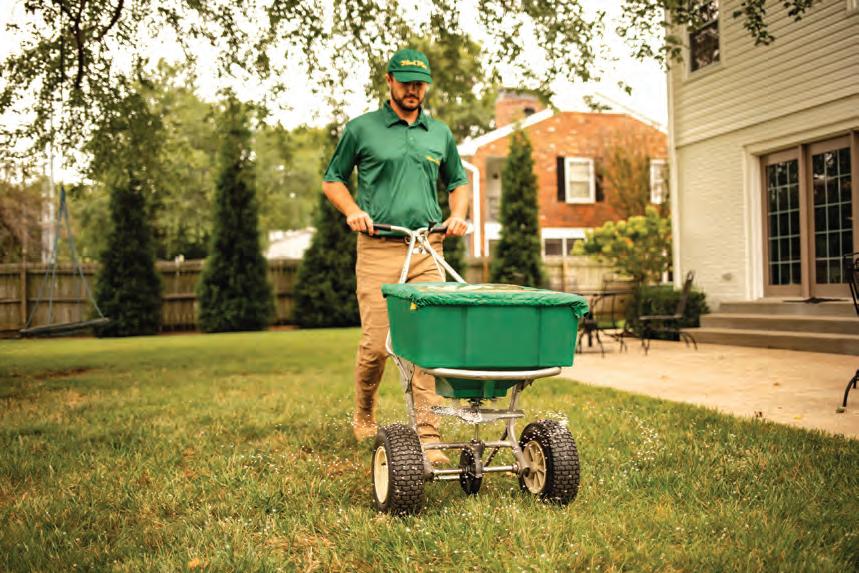











119
YogaSix
Yoga studios
TOTAL UNITS
(Franchised / Co.-Owned)
185/3
U.S./CANADA FRANCHISE GROWTH
+31
STARTUP COST
$355.9K-$508.1K
120
Soccer Shots
Soccer programs for ages
2 to 8
TOTAL UNITS (Franchised / Co.-Owned)
288/21
U.S./CANADA FRANCHISE GROWTH
+31
STARTUP COST
$42.95K-$54.3K
121
SkyRun Vacation Rentals
Vacation rental management
TOTAL UNITS (Franchised / Co.-Owned) 30/7
U.S./CANADA FRANCHISE GROWTH +30
STARTUP COST
$69.7K-$101.2K
122
Zoom Room
Indoor dog training and socialization, pet products
TOTAL UNITS (Franchised / Co.-Owned) 54/1
U.S./CANADA FRANCHISE GROWTH +30
STARTUP COST
$271.6K-$407.4K
123
HomeWell Care Services
Home care
TOTAL UNITS (Franchised / Co.-Owned) 136/0
U.S./CANADA FRANCHISE GROWTH +30
STARTUP COST
$52.4K-$230.8K
124
Mister Sparky
Residential electrical maintenance, repair, and replacement services
TOTAL UNITS (Franchised / Co.-Owned) 155/7
U.S./CANADA FRANCHISE GROWTH +30
STARTUP COST
$118.95K-$213.7K
125
The Good Feet Store
Arch supports, related products
TOTAL UNITS (Franchised / Co.-Owned) 213/26
U.S./CANADA FRANCHISE GROWTH +30
STARTUP COST
$248.8K-$587.8K
126
911 Restoration
Residential and commercial property restoration
TOTAL UNITS (Franchised / Co.-Owned) 288/3
U.S./CANADA FRANCHISE GROWTH +30
STARTUP COST
$79.6K-$218.4K
127
Big O Tires Tires, tire services, auto products
TOTAL UNITS (Franchised / Co.-Owned) 464/0
U.S./CANADA FRANCHISE GROWTH +30
STARTUP COST
$375.5K-$1.6M
128
Card My Yard
Special-occasion yard sign rentals
TOTAL UNITS (Franchised / Co.-Owned) 531/2
U.S./CANADA FRANCHISE GROWTH +30





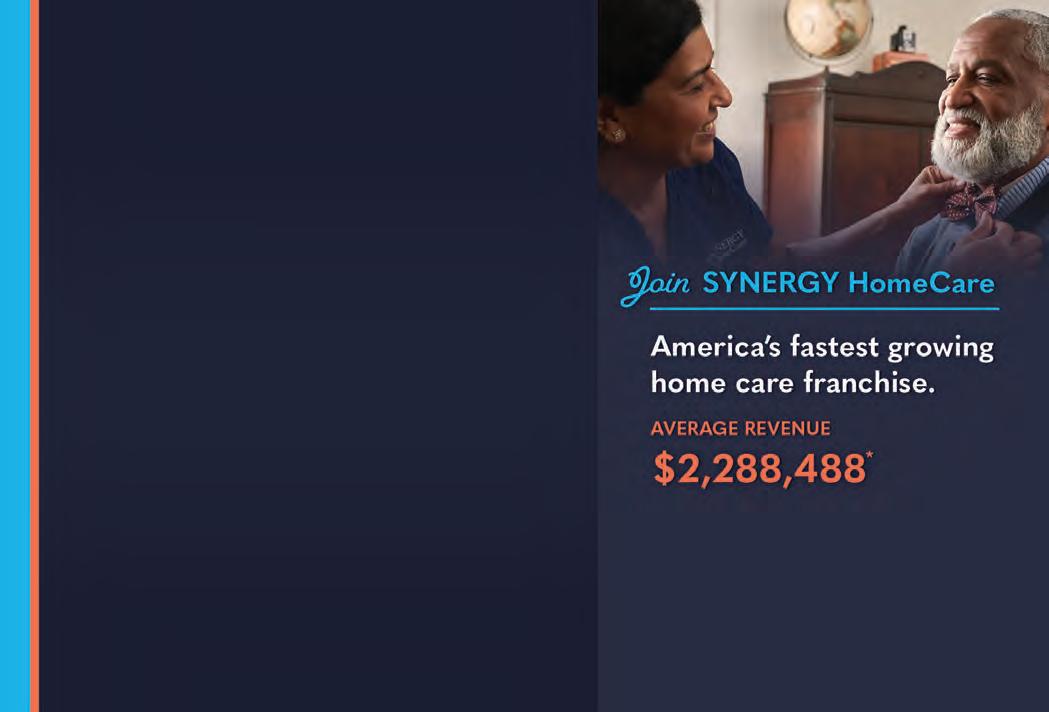
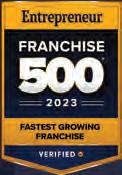



133
Blue Moon Estate Sales
Estate sales
TOTAL UNITS (Franchised / Co.-Owned) 92/0
U.S./CANADA FRANCHISE GROWTH +29
STARTUP COST
$53.9K-$99.9K
134
Bubbakoo’s
Burritos
Mexican food
TOTAL UNITS
(Franchised / Co.-Owned) 102/12
/












U.S./CANADA FRANCHISE GROWTH +29
STARTUP COST $331K-$700K
135




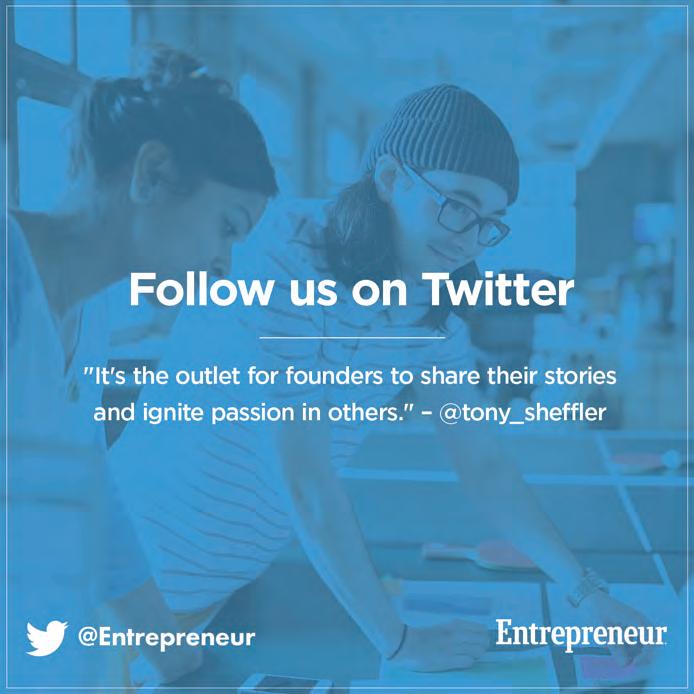
Tint World
Automotive, home, and business window tinting; vehicle wraps, mobile electronics, auto accessories, detailing services
TOTAL UNITS (Franchised / Co.-Owned) 136/0
U.S./CANADA FRANCHISE GROWTH +29
STARTUP COST
$289.95K-$469.95K
136
Playa Bowls
Acai, pitaya, coconut, chia pudding, and oatmeal bowls, smoothies, juices
TOTAL UNITS (Franchised / Co.-Owned) 165/28
U.S./CANADA FRANCHISE GROWTH +29
STARTUP COST
$188.7K-$465.1K
137
Challenge Island
Educational enrichment programs
TOTAL UNITS (Franchised / Co.-Owned) 216/7
U.S./CANADA FRANCHISE GROWTH +29 STARTUP COST $53.4K-$68.9K
140 Toro Taxes Tax and accounting services TOTAL UNITS (Franchised / Co.-Owned) 193/15
U.S./CANADA FRANCHISE GROWTH +28
COST $17.8K-$74.2K
141
Unishippers Parcel and freight shipping services
TOTAL UNITS (Franchised / Co.-Owned) 237/74
U.S./CANADA FRANCHISE GROWTH +28 STARTUP COST $34.6K-$233.3K
142 Send Me a Pro In-home services
TOTAL UNITS (Franchised / Co.-Owned) 84/0
U.S./CANADA FRANCHISE GROWTH +27 STARTUP COST $49.1K-$84.8K
143 HTeaO
Iced tea and coffee
TOTAL UNITS (Franchised / Co.-Owned) 83/5
U.S./CANADA FRANCHISE GROWTH +27
COST $238.2K-$1.9M

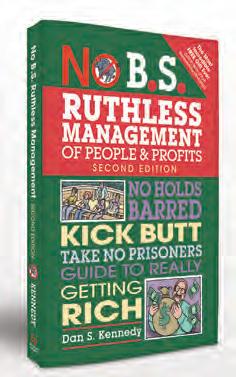
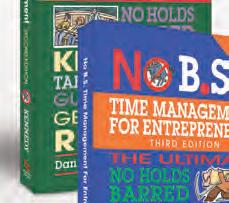













One of these opportunities could mark the turning point to owning a business of your own, realizing your personal dreams and securing true financial independence. So go ahead, make your first move by considerw ing all that they have to offer in this Opportunity Spotlight. Then make your first call.






























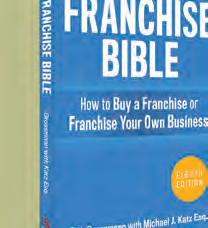





by Jon B. Becker, CEO of Aardvark Tactical
When I was 17, I founded a company to save police officers’ lives. We distribute and manufacture body armor and other protective equipment. And yet, I will admit: For the first eight years, this work felt abstract—like watching war unfold on the nightly news. I understood its importance, of course, but it wasn’t personal. Then, an officer in a nearby town was killed. It changed everything.
His name was Louis Pompei. He was 30 years old, served in Glendora, California, and was killed while off duty, as he heroically tried to stop a grocery store holdup. We’d never met, but we had many mutual friends. When some of them invited us to his funeral, my wife, Melissa, and I immediately accepted.
We were joined by our late friend Joe Bale, who was a hulk of a man— 6 feet 3 inches tall, 300-plus pounds, and with an even larger personality. I’d never seen him be anything other than happy and laughing. But as we all sat among the officers—hearing the eulogy, watching the flag get presented to Louis’ family, listening to Garth Brooks’ “The Dance”—Joe disintegrated. He sobbed almost uncontrollably. It was one of the rawest emotional experiences I had ever witnessed.
When the services ended, Melissa and I walked out of the church together. I remember her taking my hand and quietly saying, “My God, that was horrible.” I also clearly remember my response: “For the first time, I truly understand that if I fail to do my job, that is what happens.”
Entrepreneurs cannot just do something. They must know it. And on that day in 1995, I finally knew this: My job, as CEO, was to lead a team that felt this critical mission. The safety of our users had to be the most important thing we did. To start, I researched how elite military and police units (many of whom we worked with) built their mission-critical cultures. That led me to three concrete steps, which I still use: Establish and communicate clear values for the organization, ensure our training and procedures address potential failure points, and align the things we inspect and measure with our preventative strategies. In other words: Everything we say and do must align with our mission, and we should double-check it.
Over the decades, we’ve collected thousands of police department patches at our office—typically from departments we work with. This includes the Glendora Police Department, where Louis Pompei worked. I see that patch on our wall every day. It always reminds me of the way Louis’ funeral felt, and the mission I can never take for granted.

→ NEVER FORGOTTEN
This patch is displayed at Aardvark Tactical — a reminder of who the company must serve and protect.
WHAT INSPIRES YOU?
Tell us about a story, person, object, or something else that pushes you forward, and we may include it in a future issue. And we may make you photograph it, too. Email INSPIRE@ENTREPRENEUR.COM with the subject line “WHAT INSPIRES ME.”







Dell Technologies and Intel are supporting scientists as they tackle one of the biggest challenges in conservation—protecting the coral reef. We are also helping small businesses everywhere manage their challenges, big and small. With the power to collect critical data, reduce IT complexities and keep systems secure, technology is helping businesses protect many environments. See what we can do for yours.

